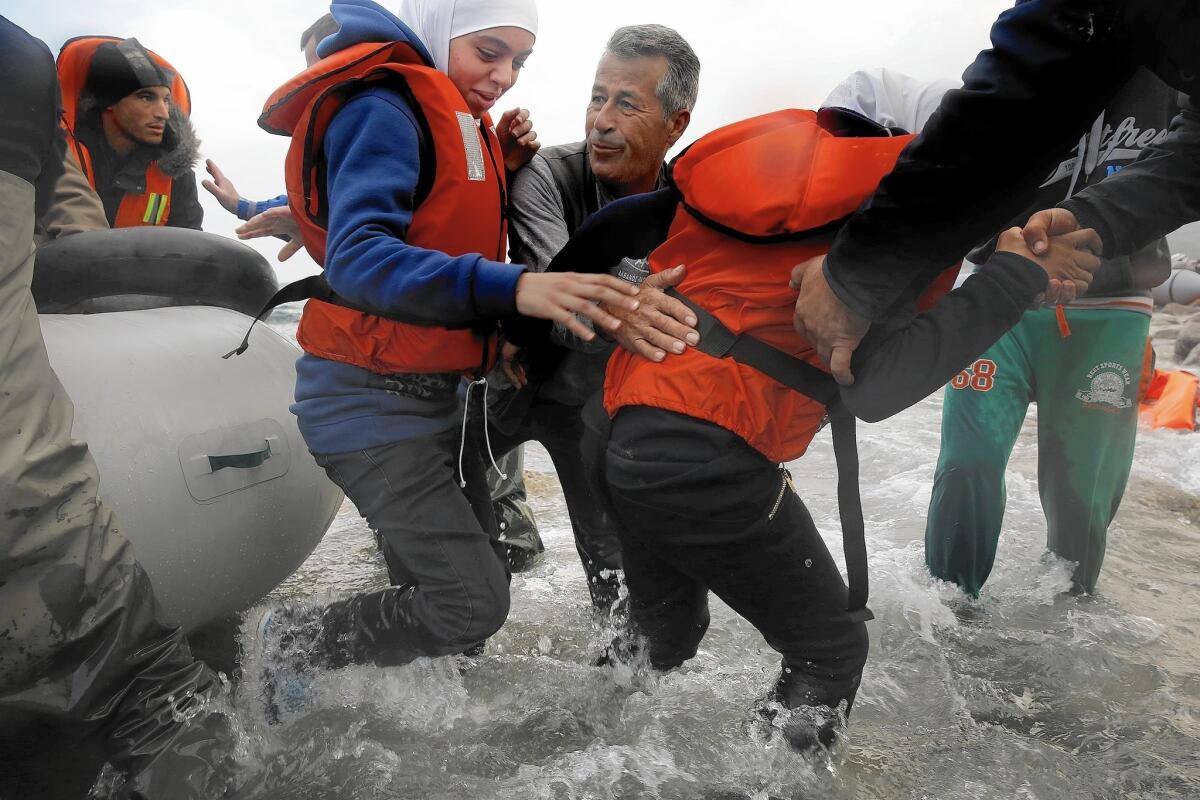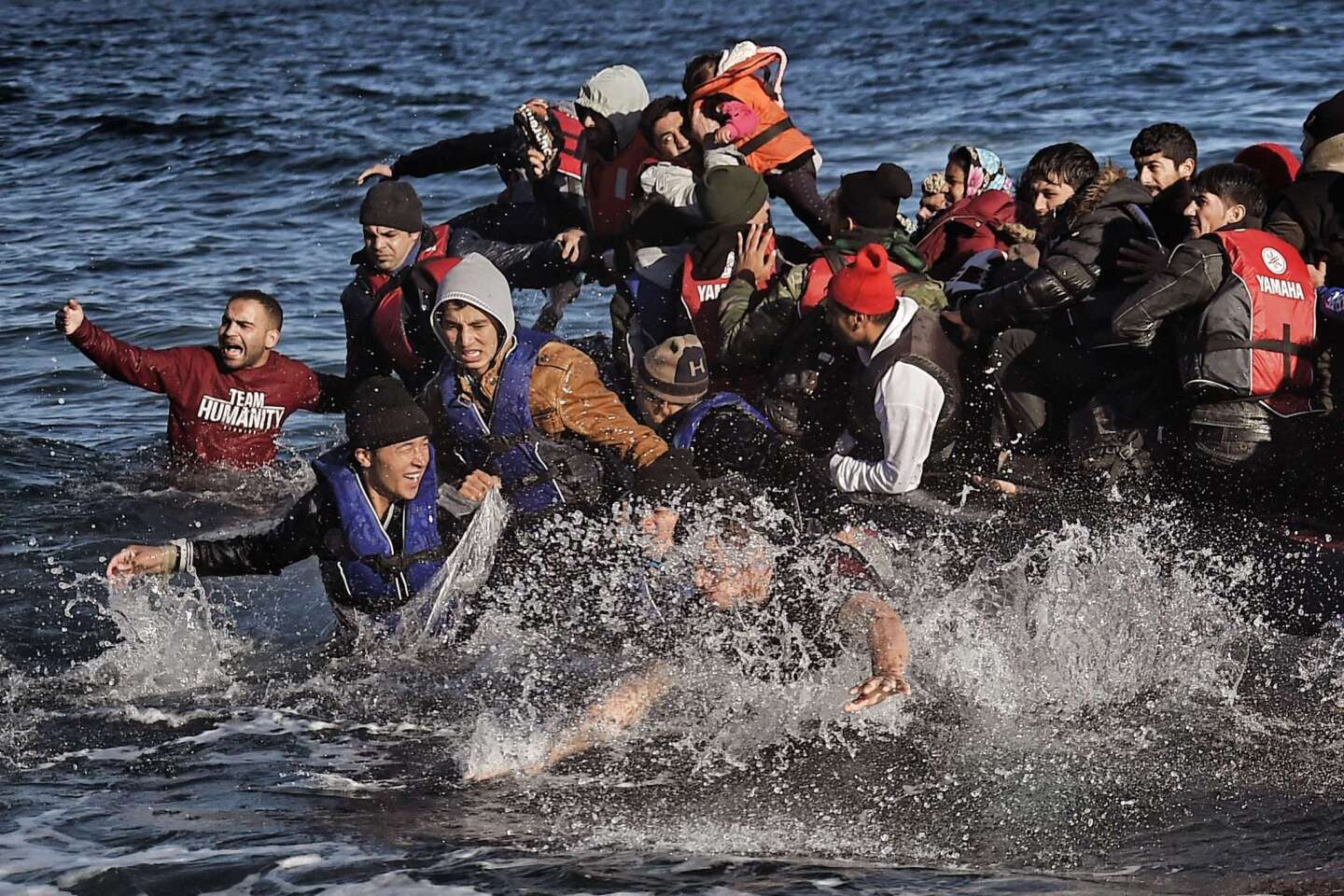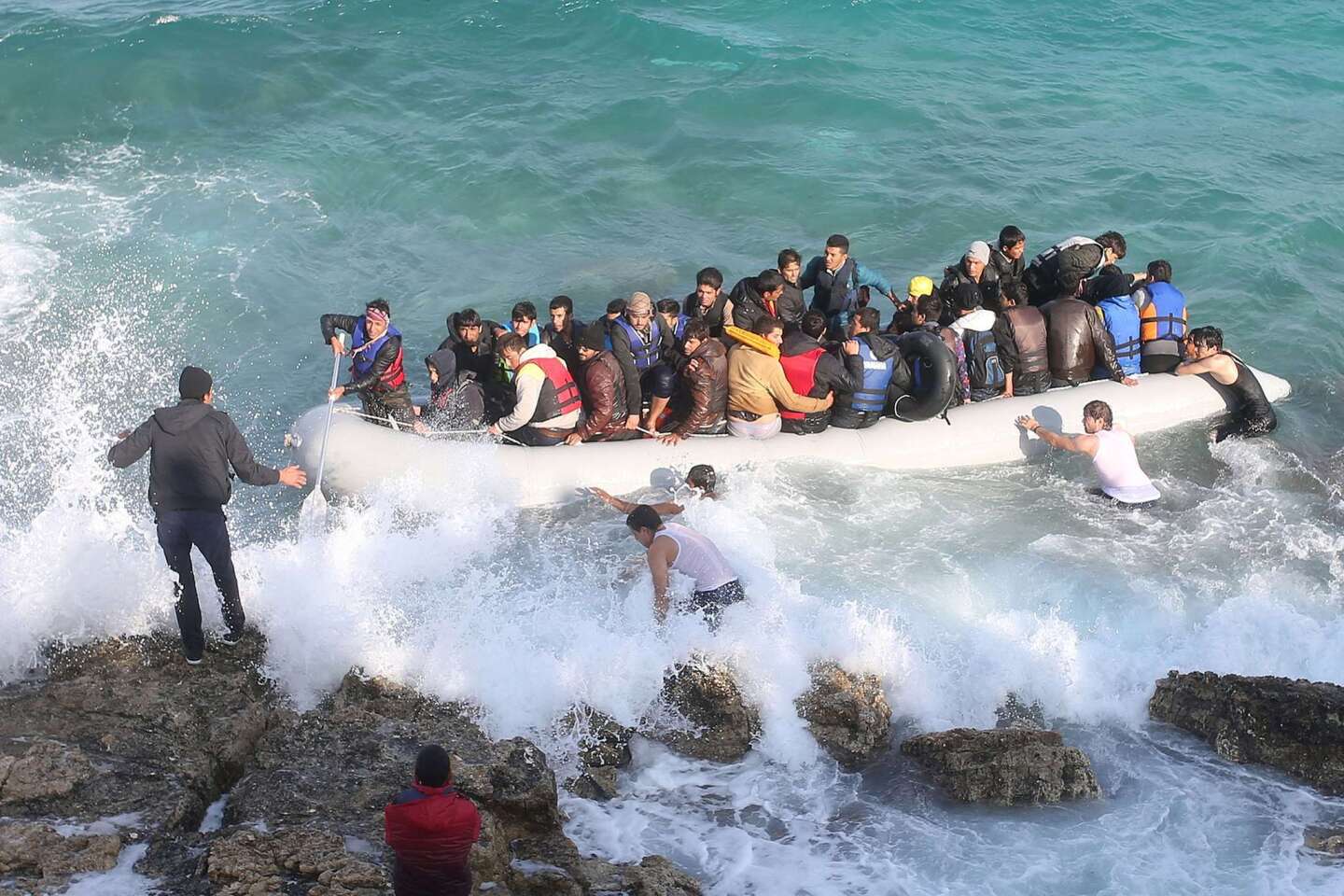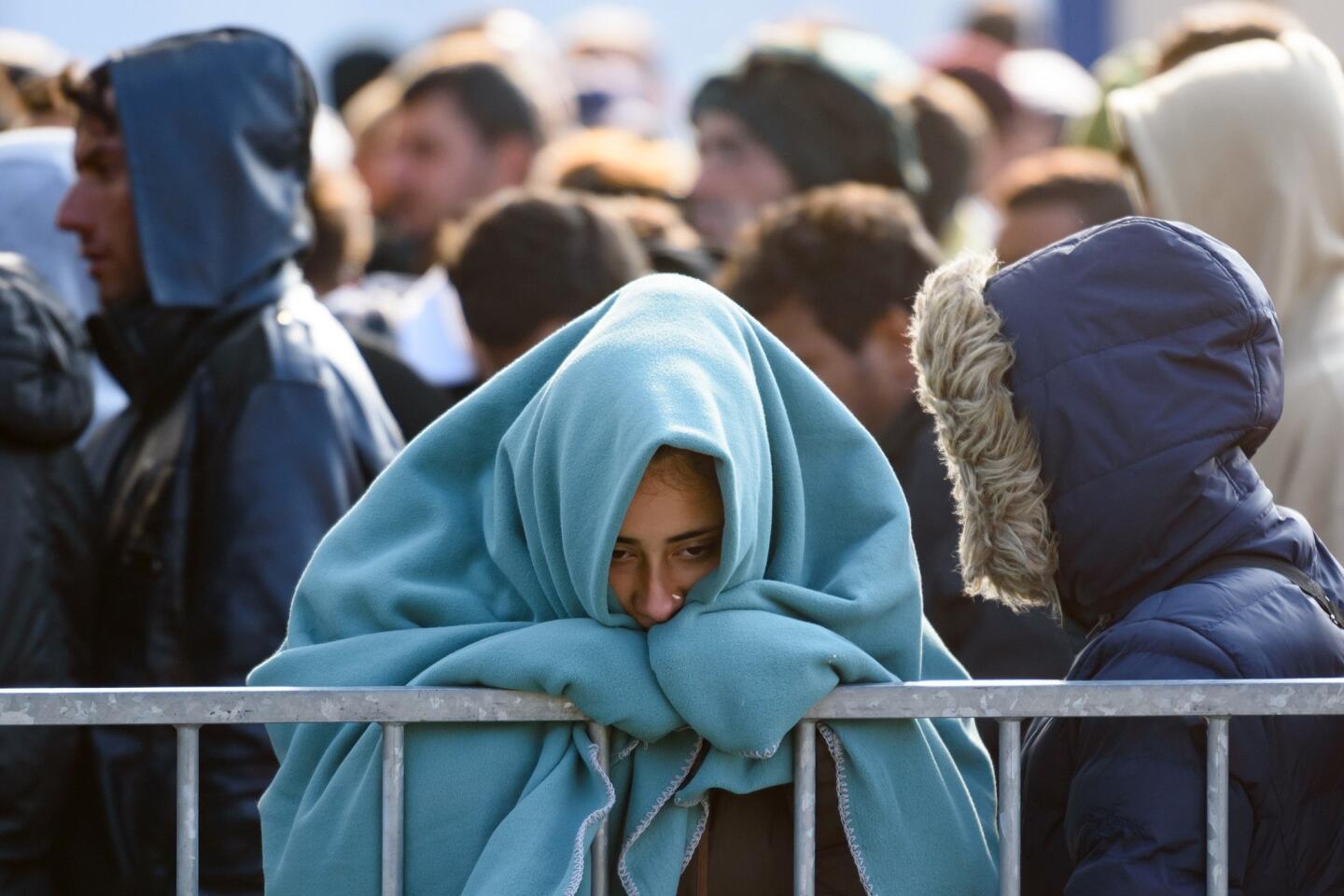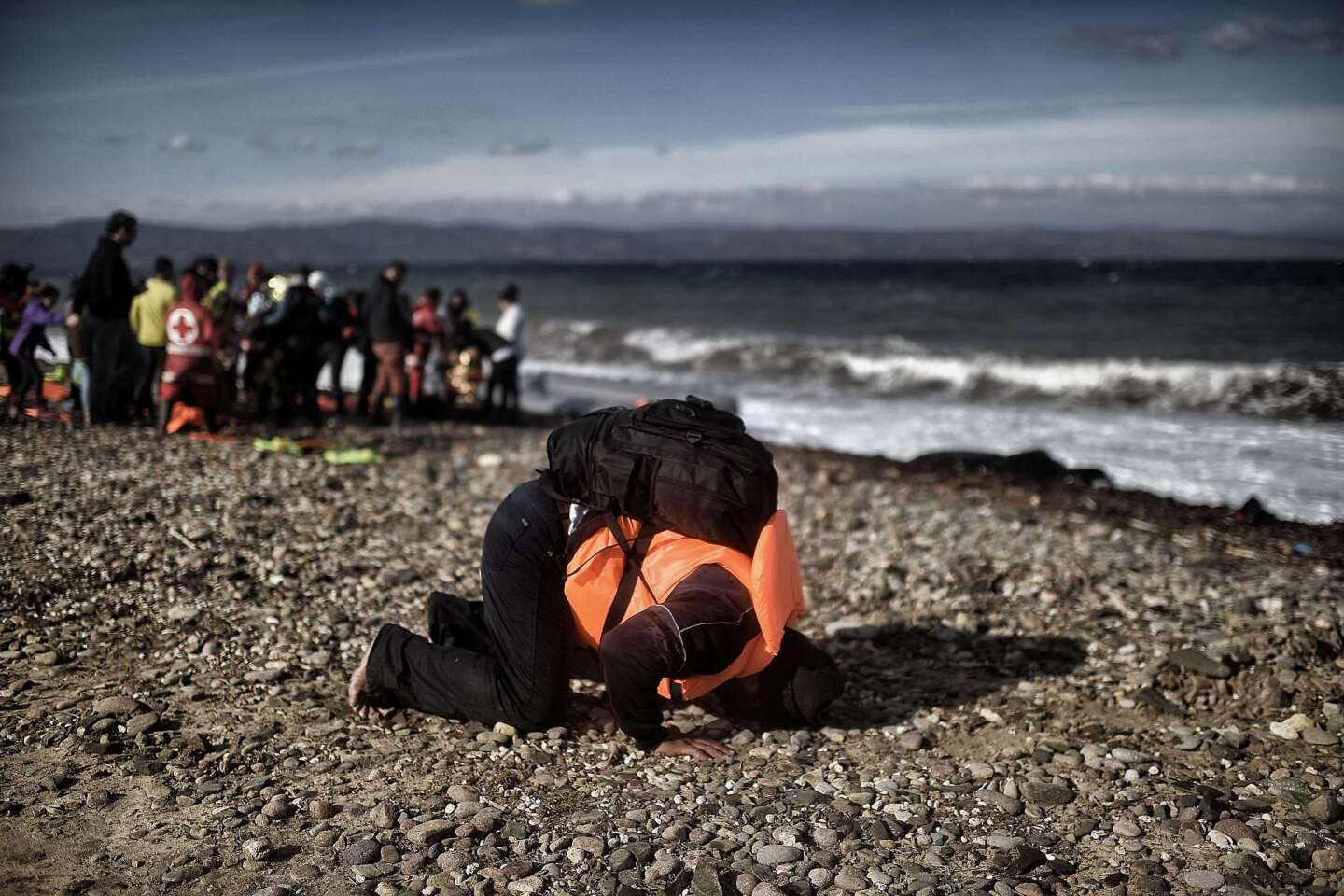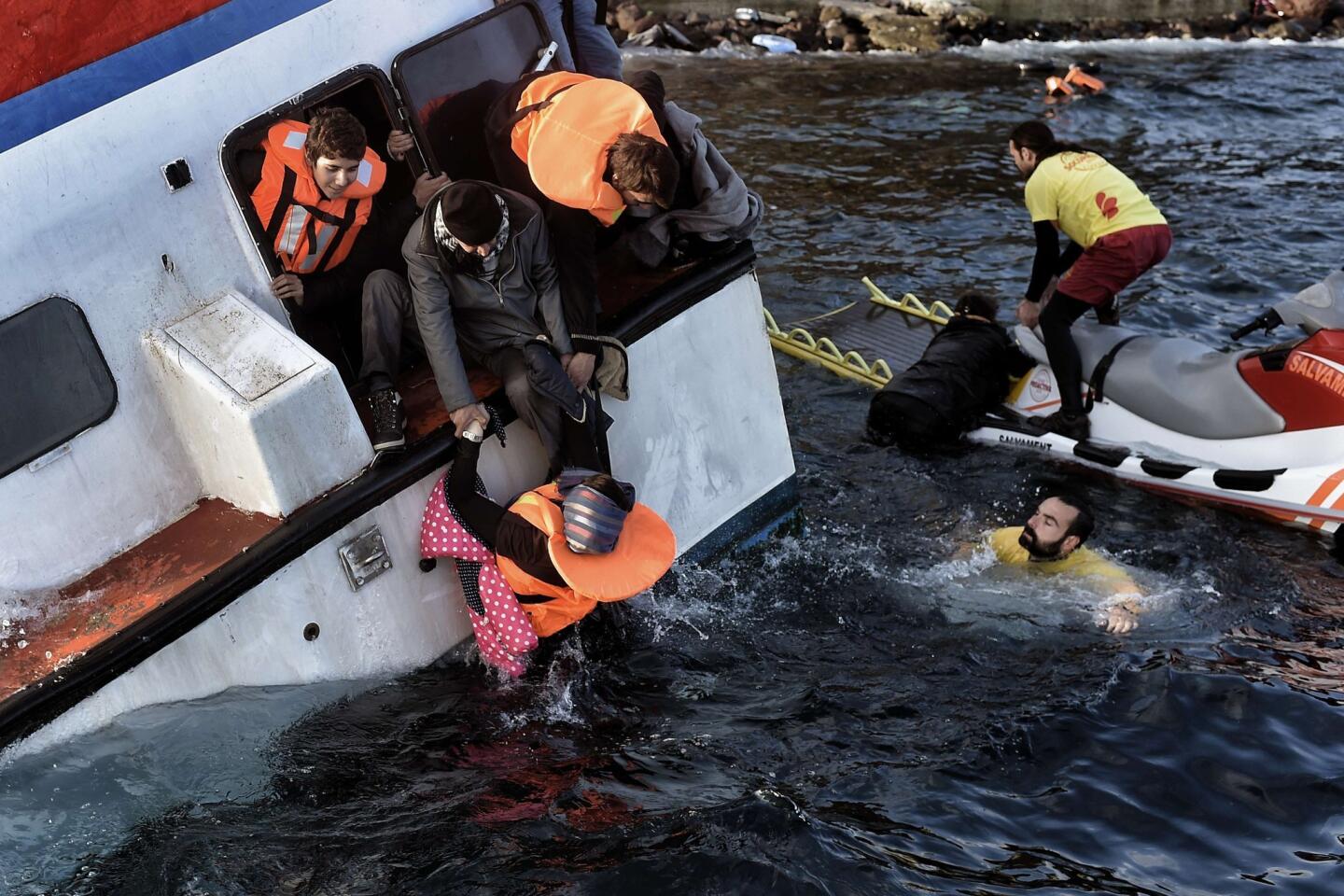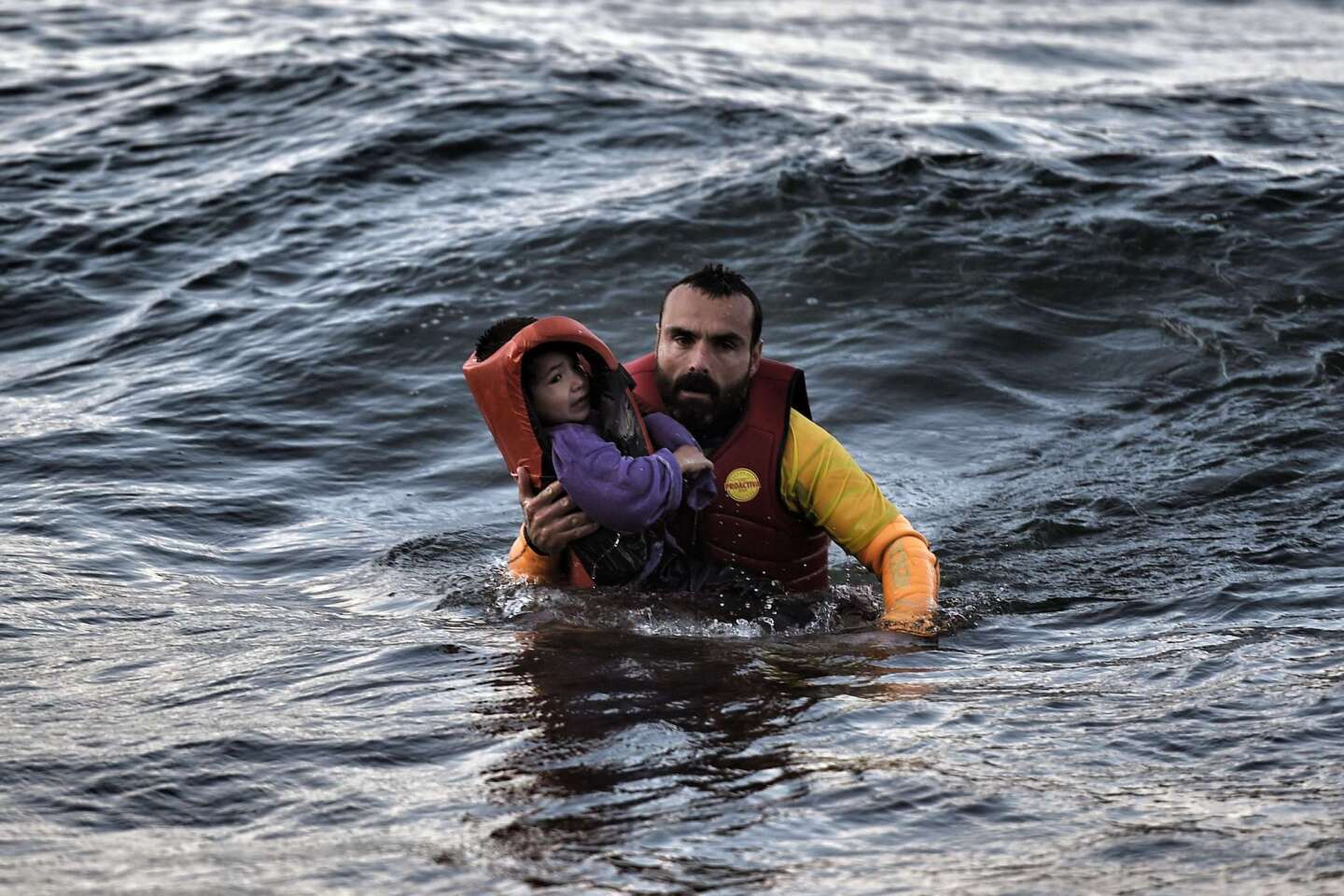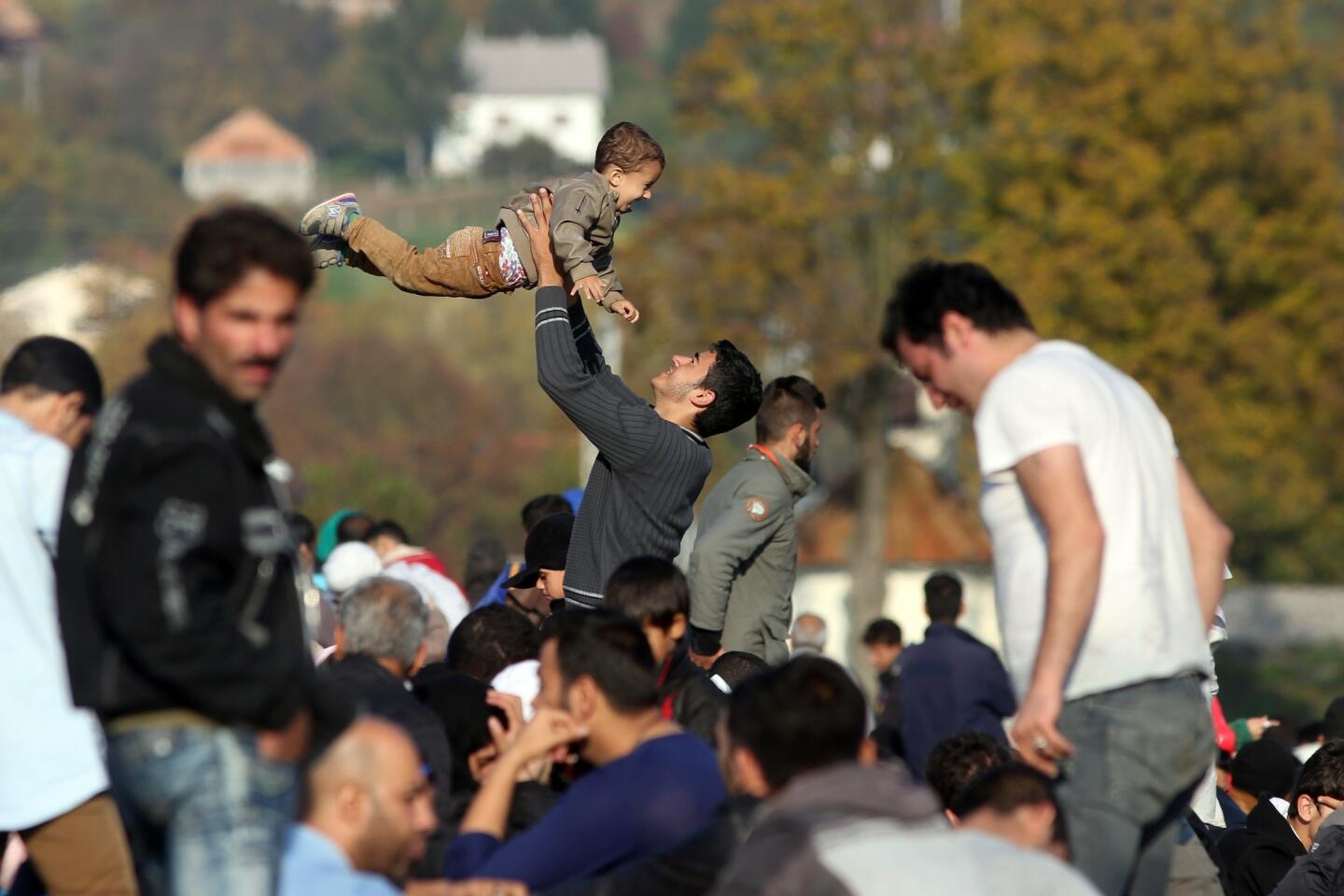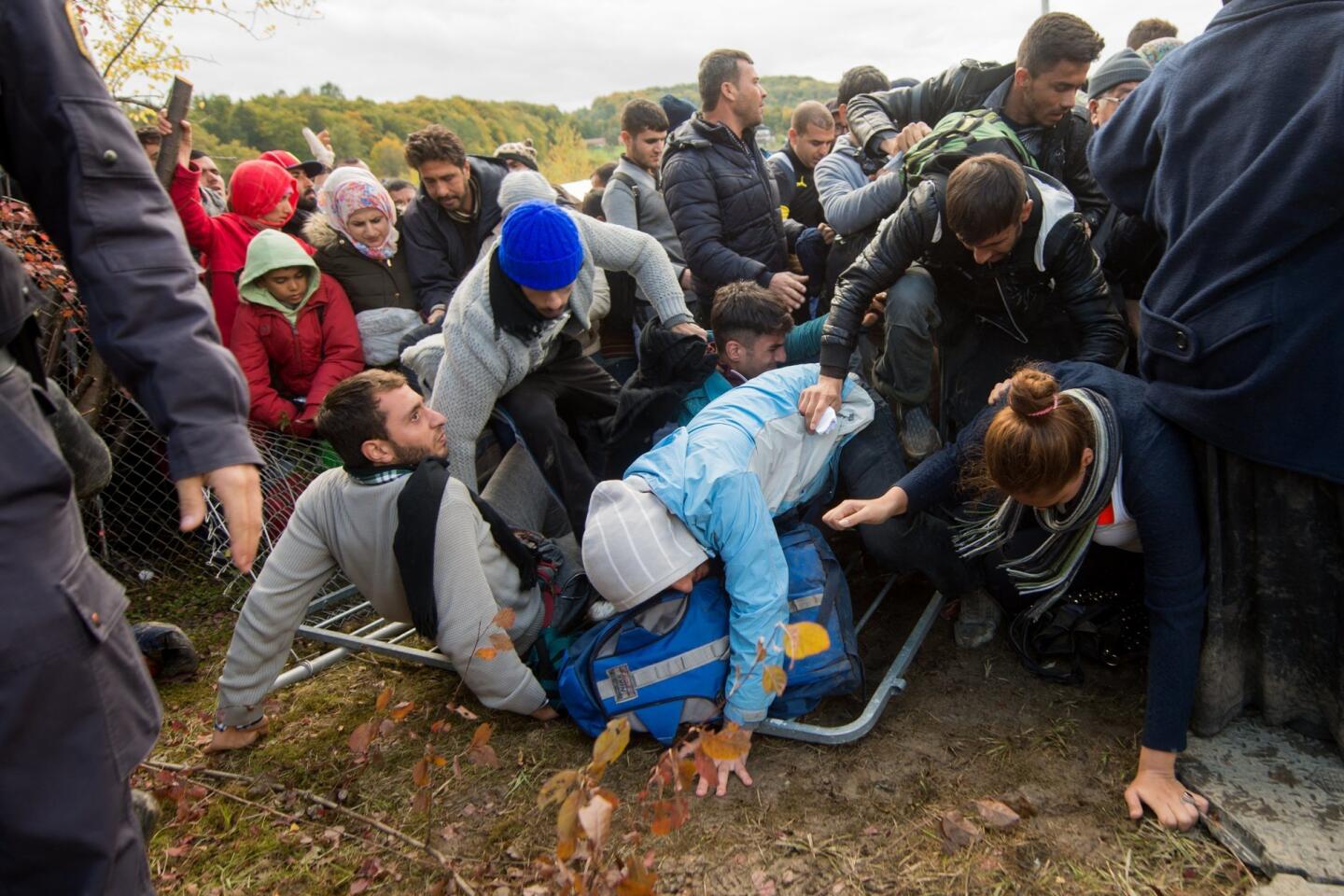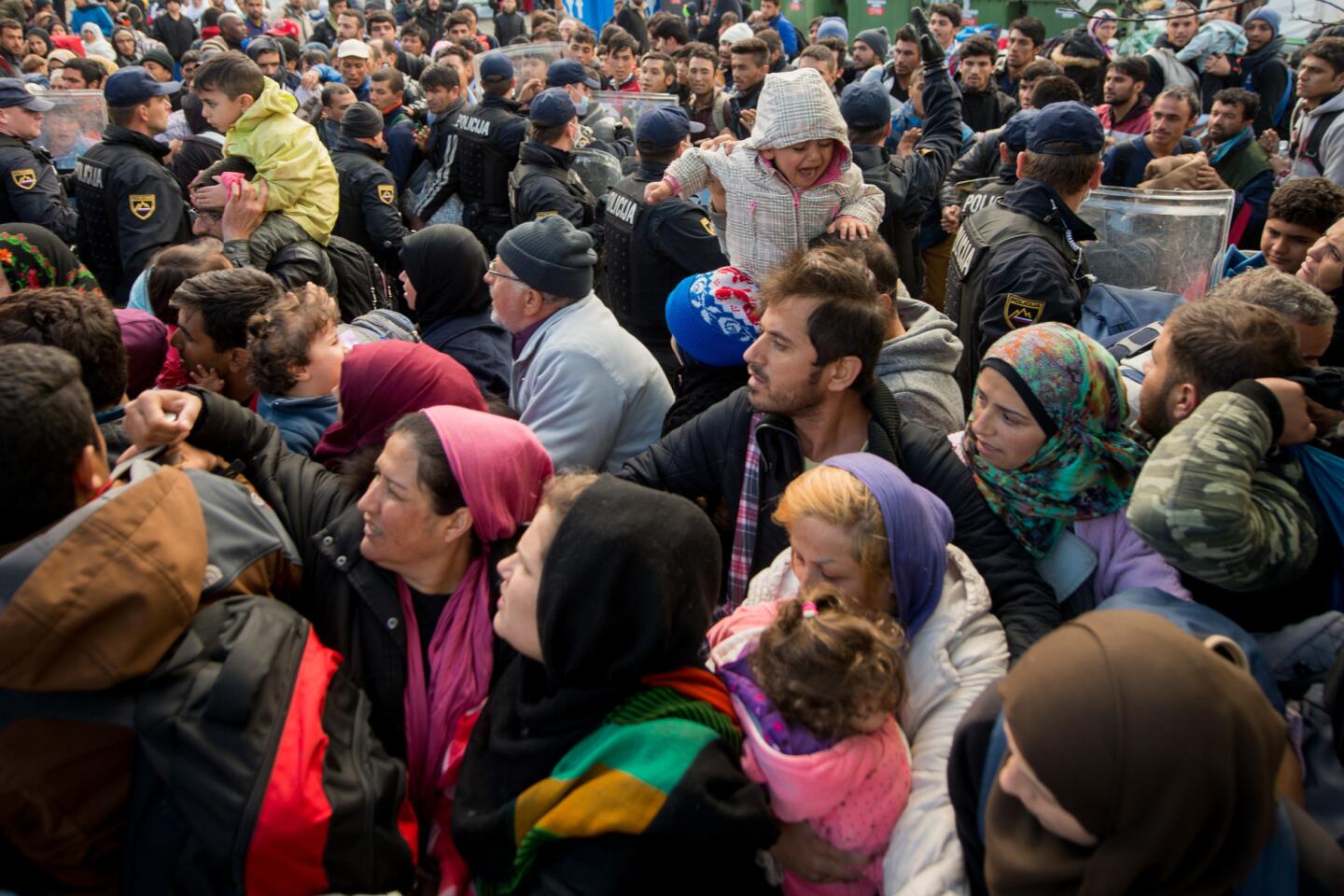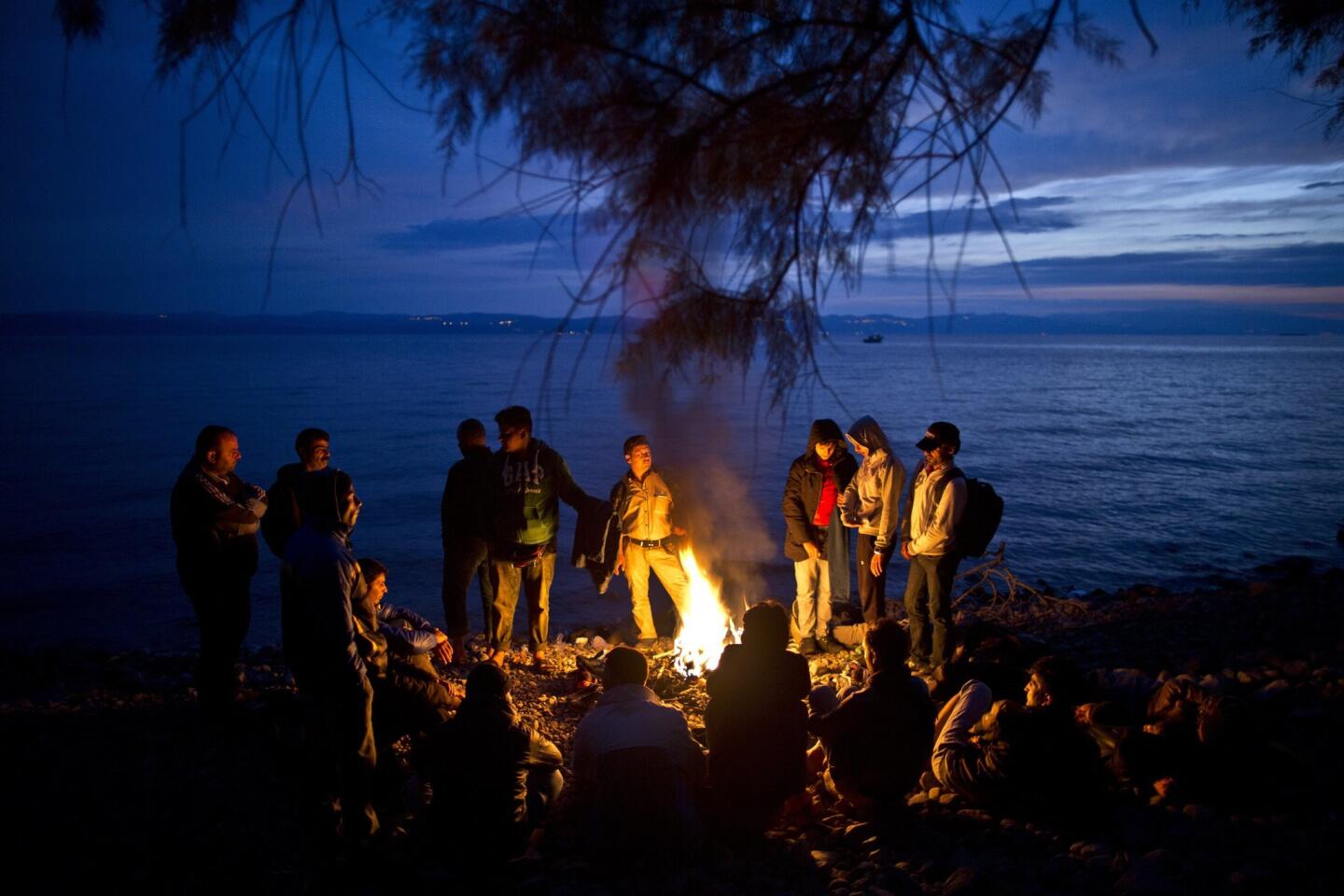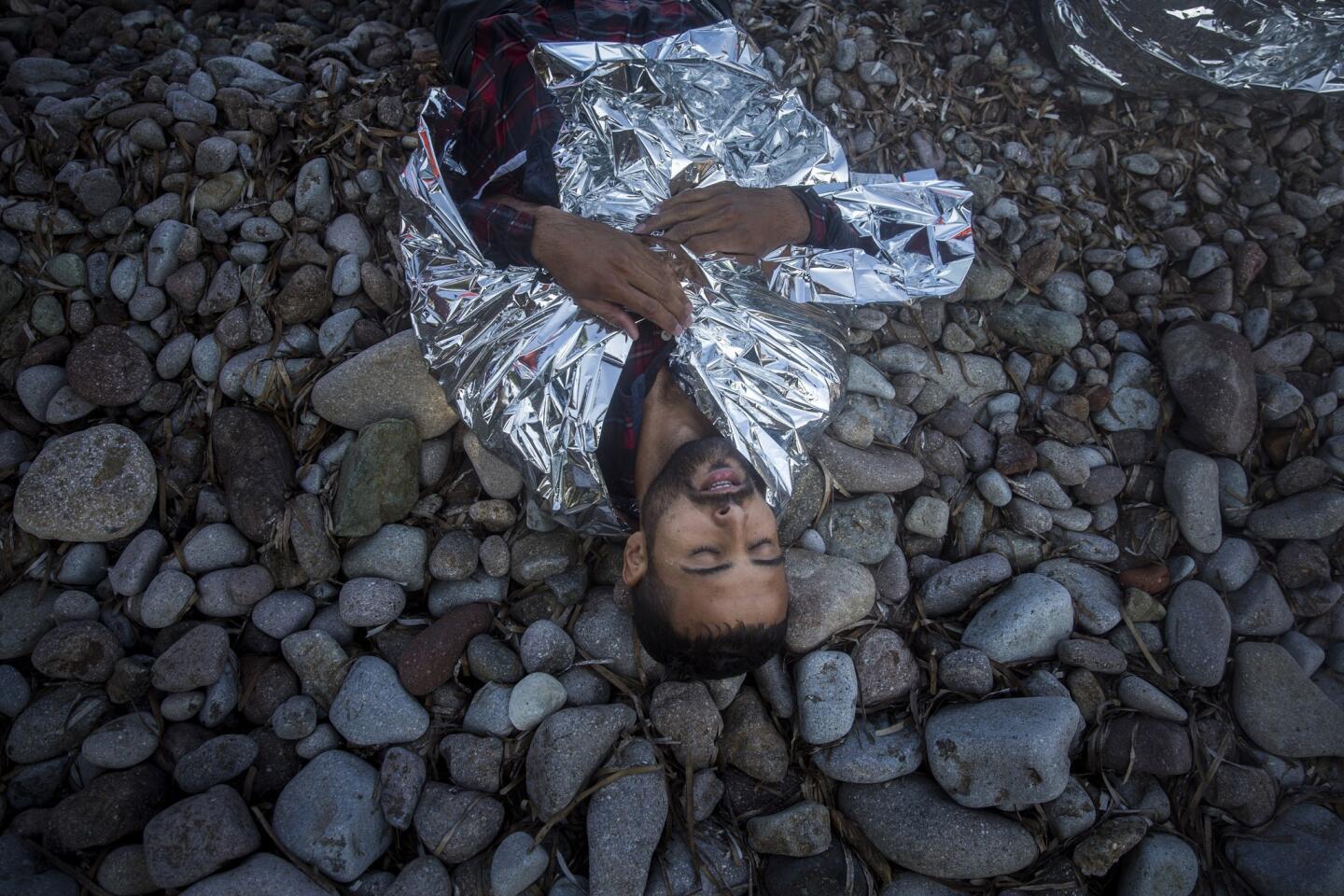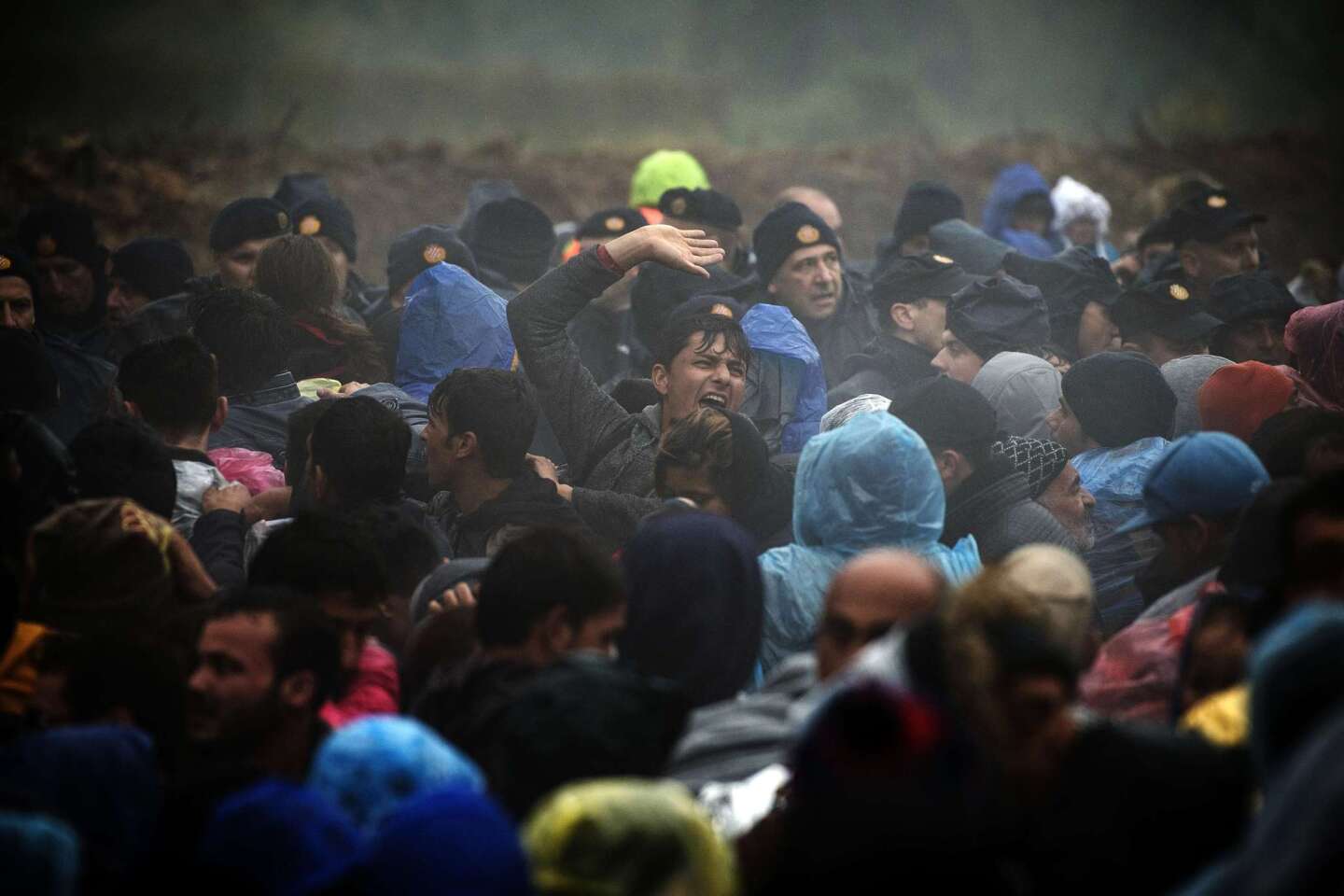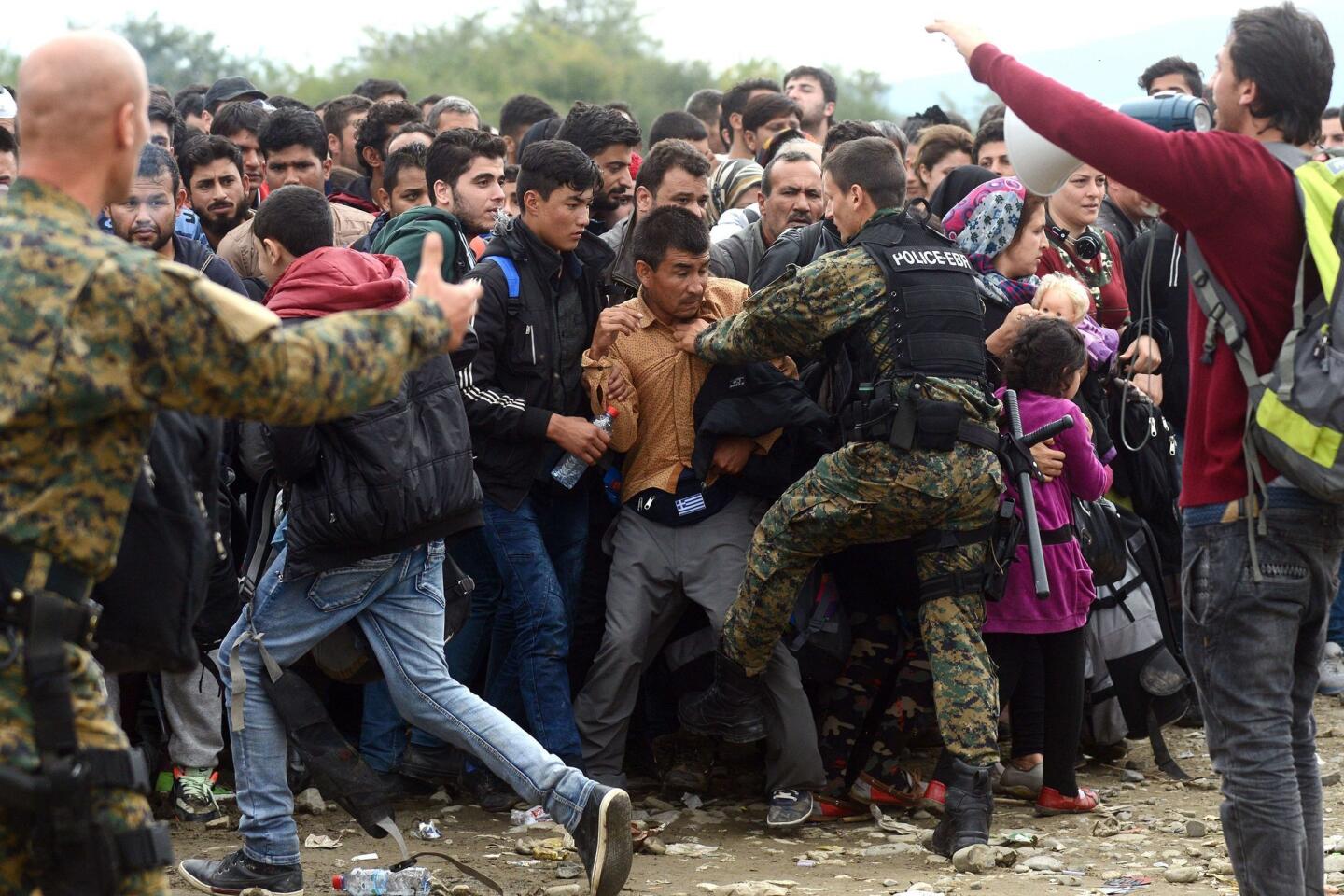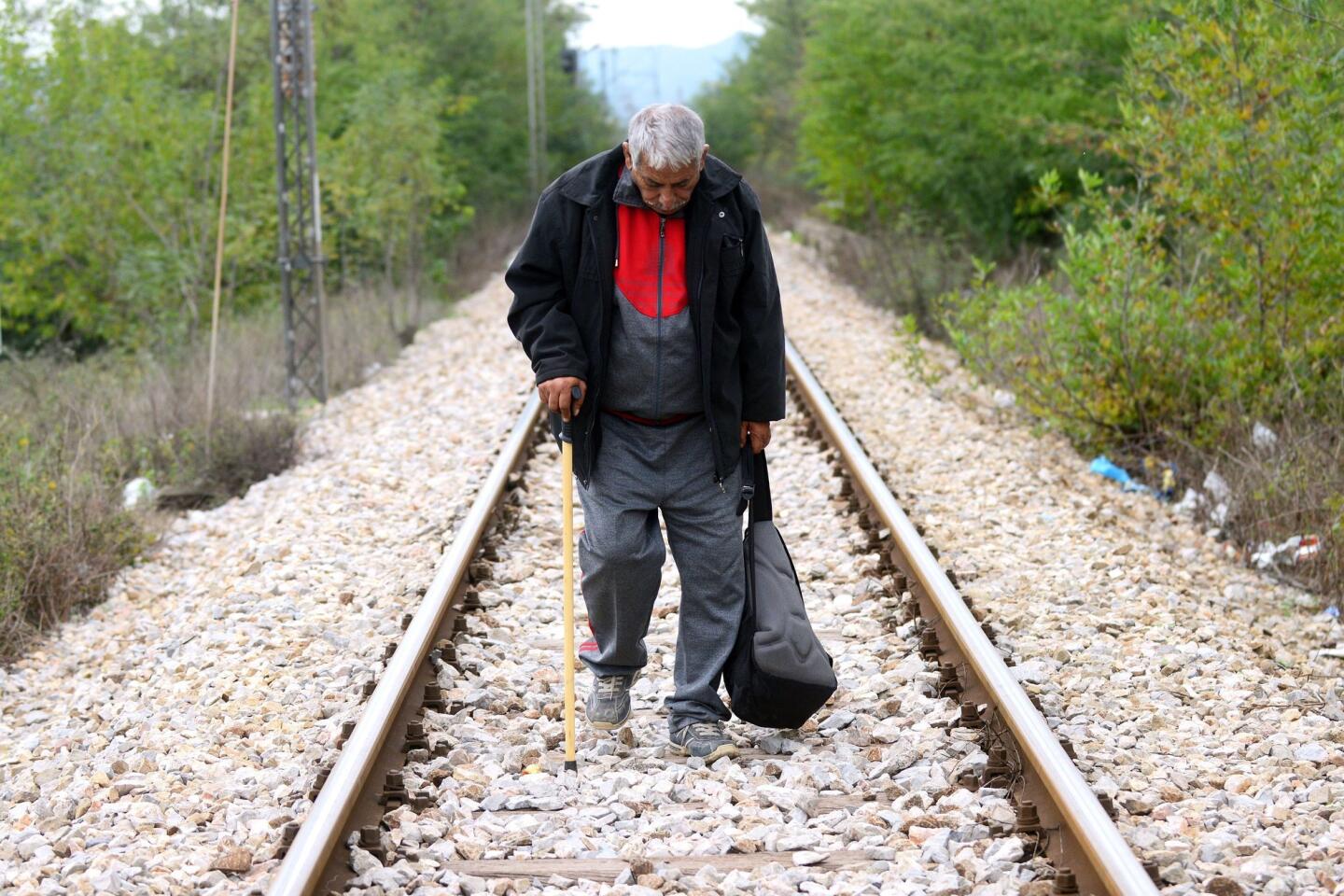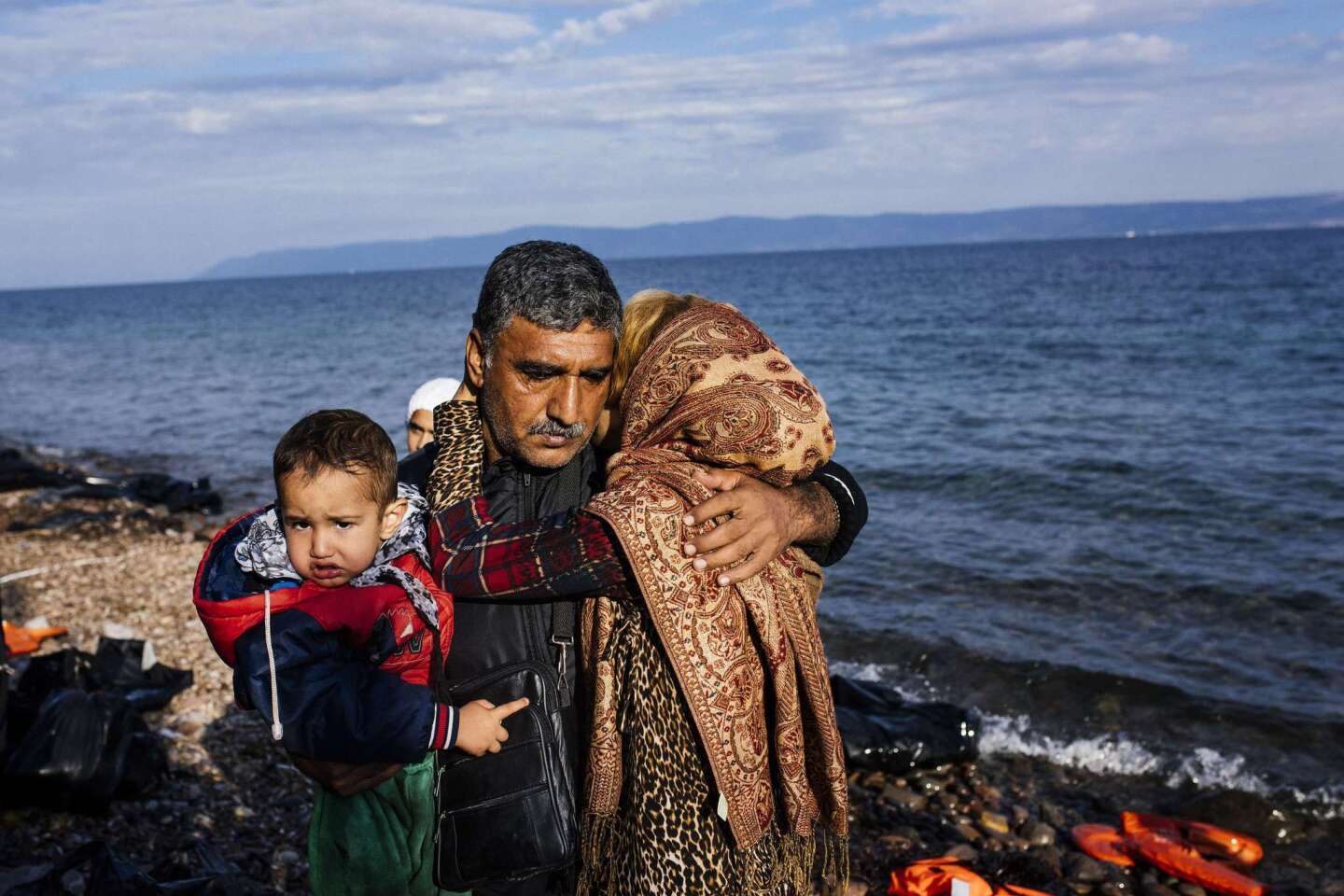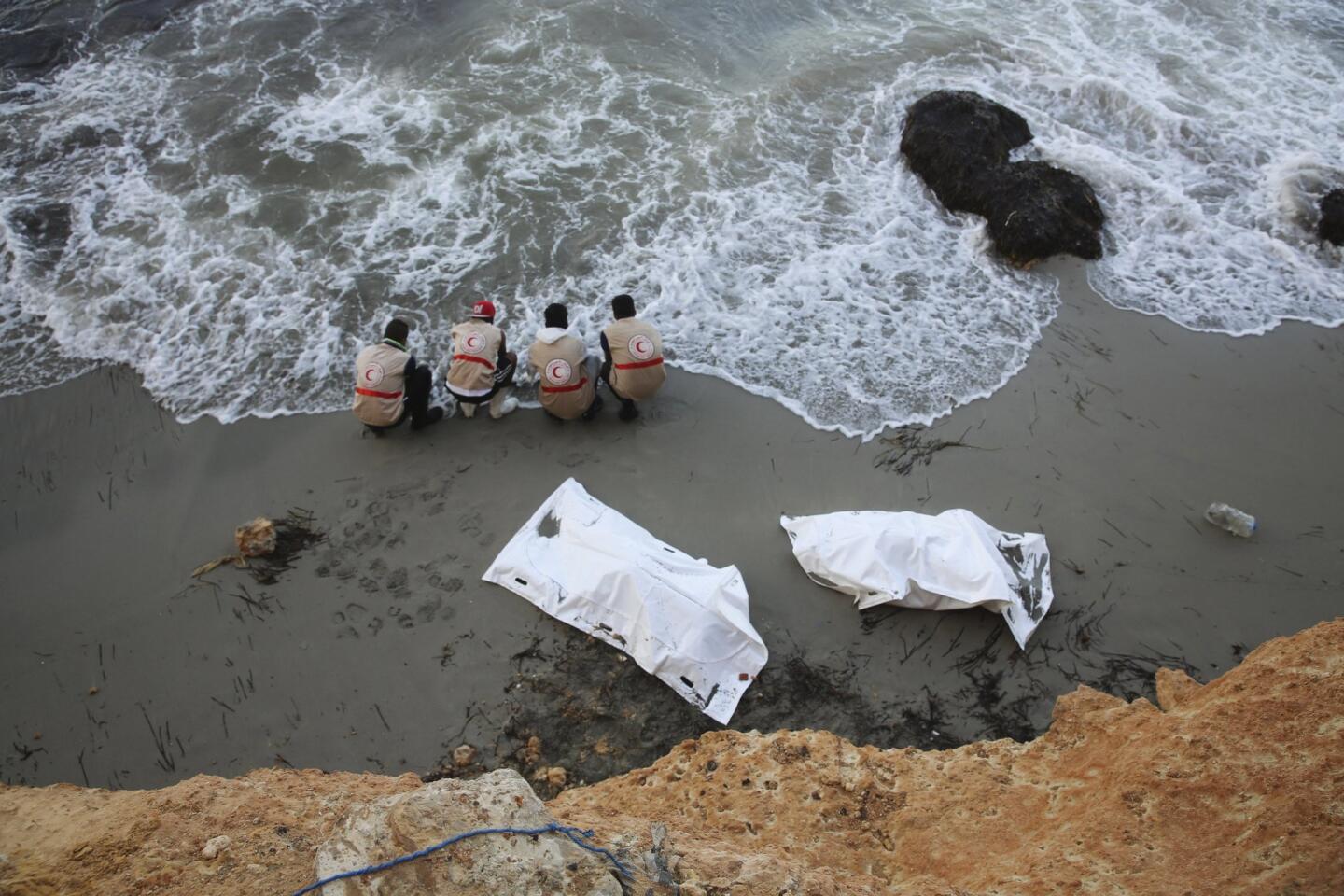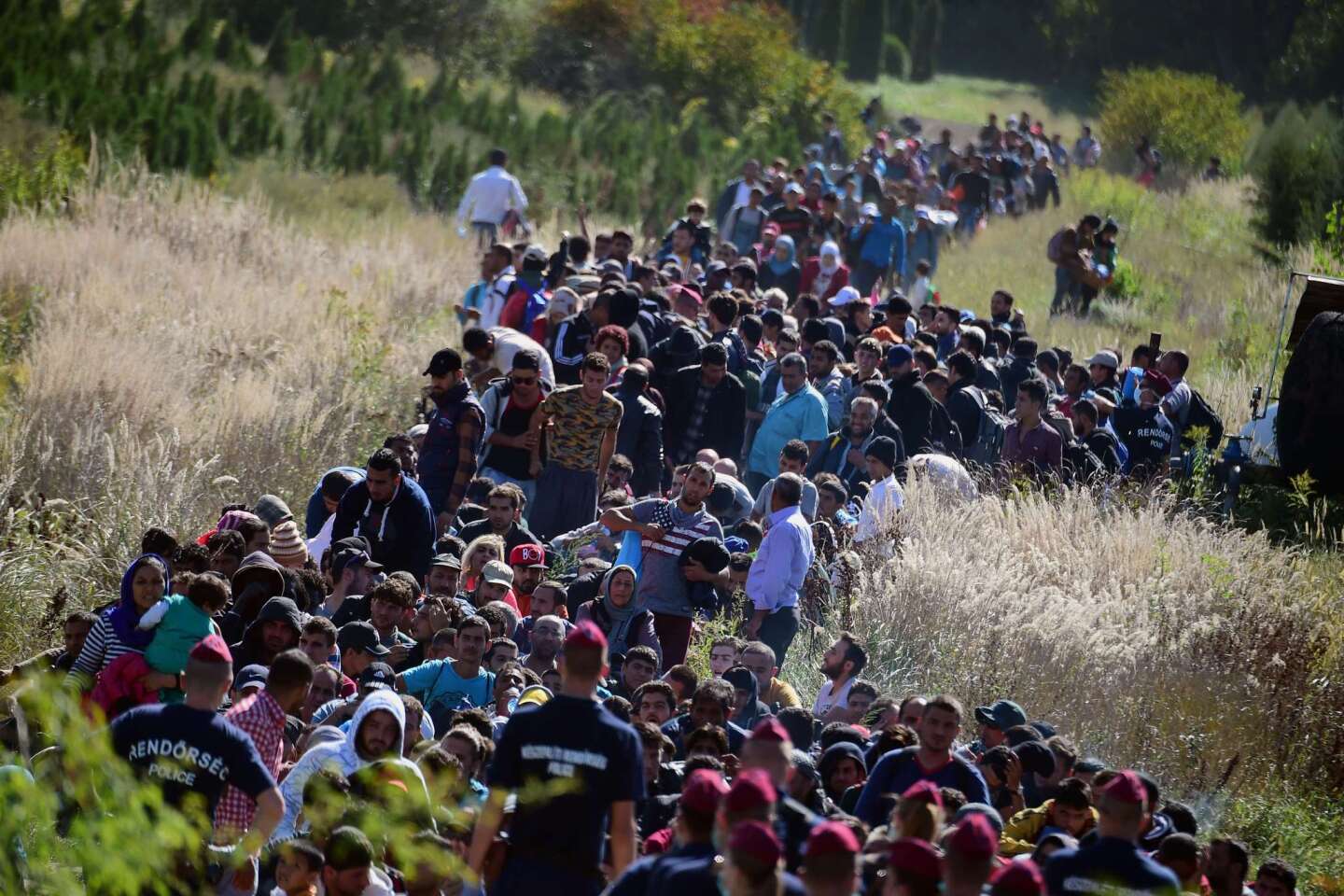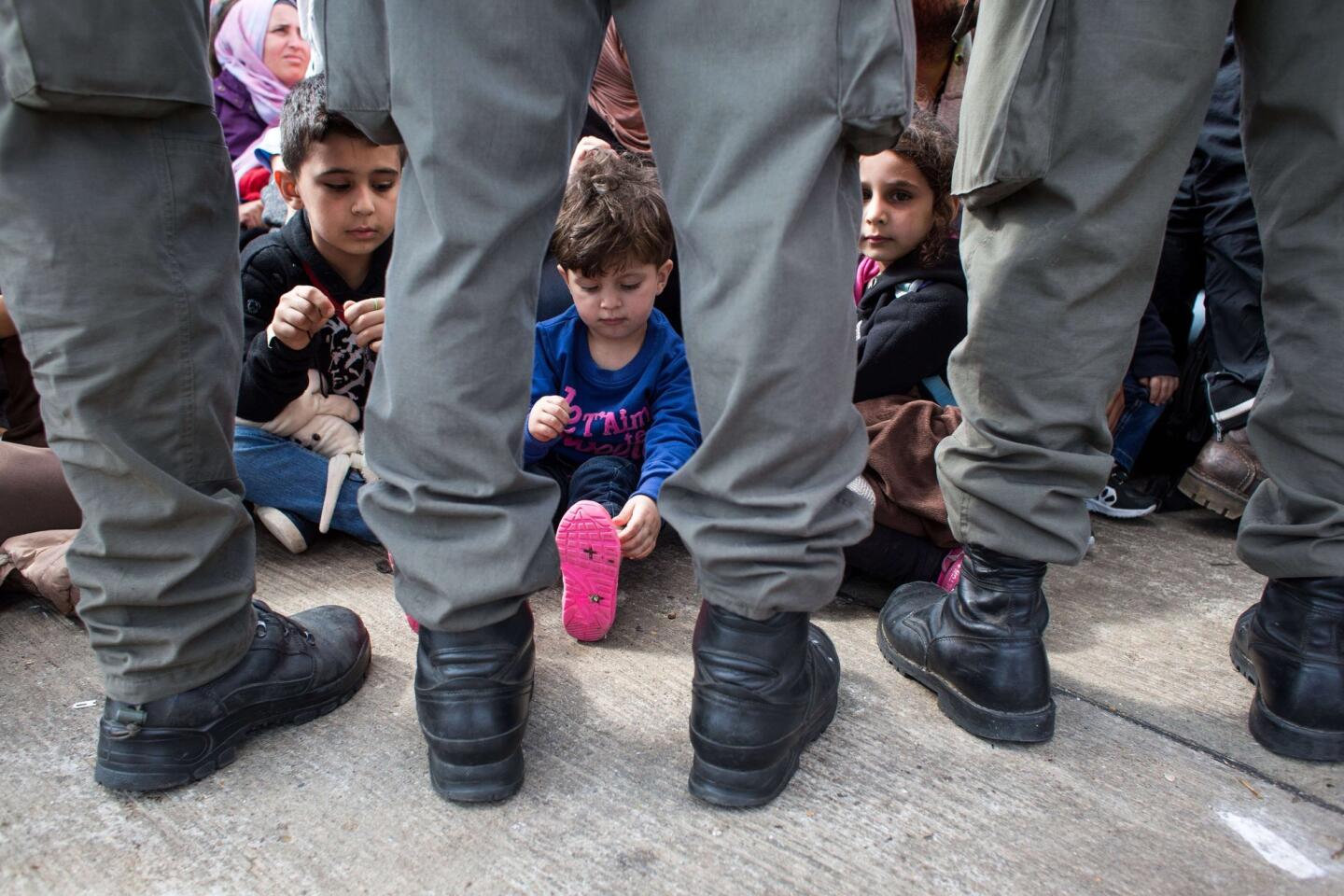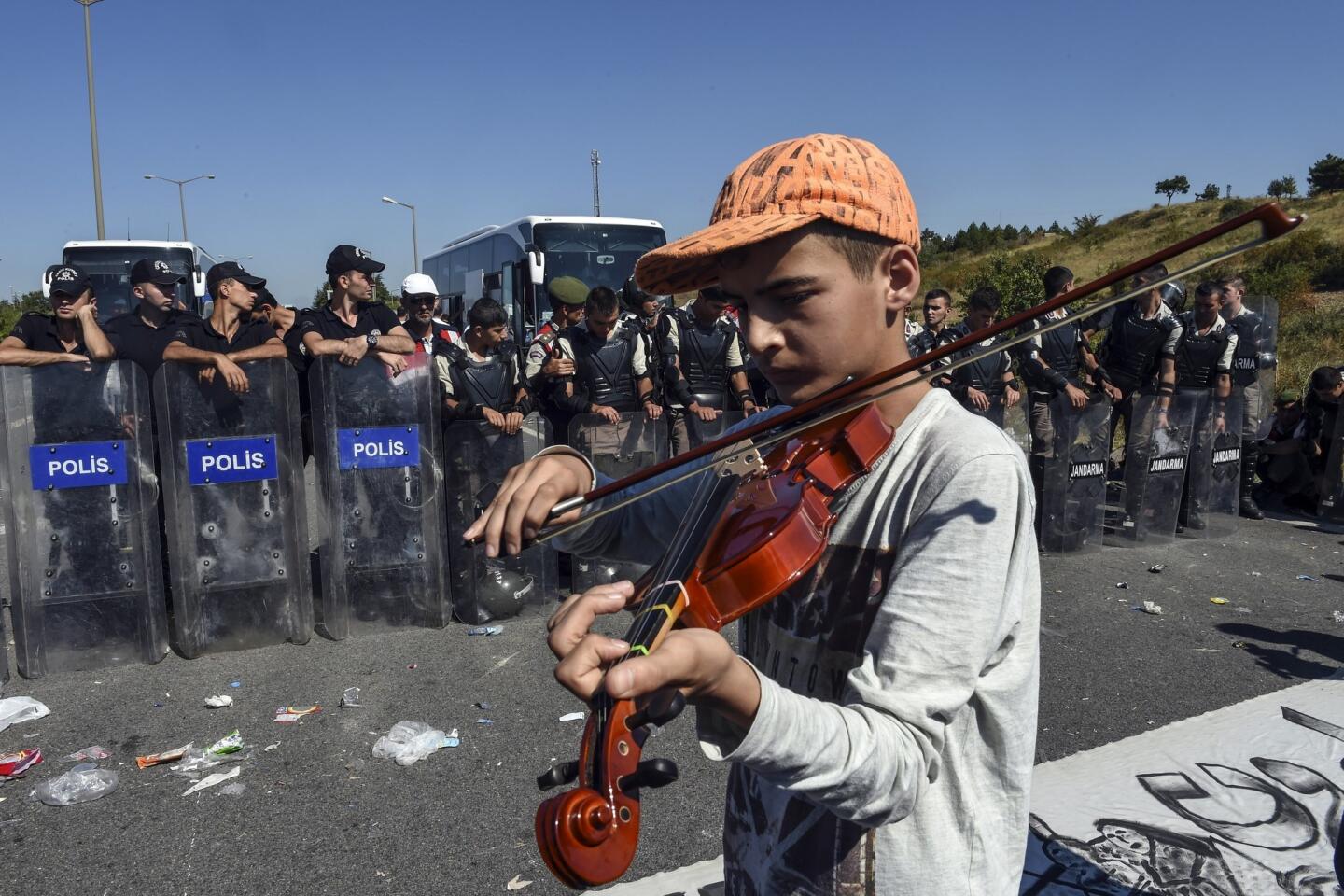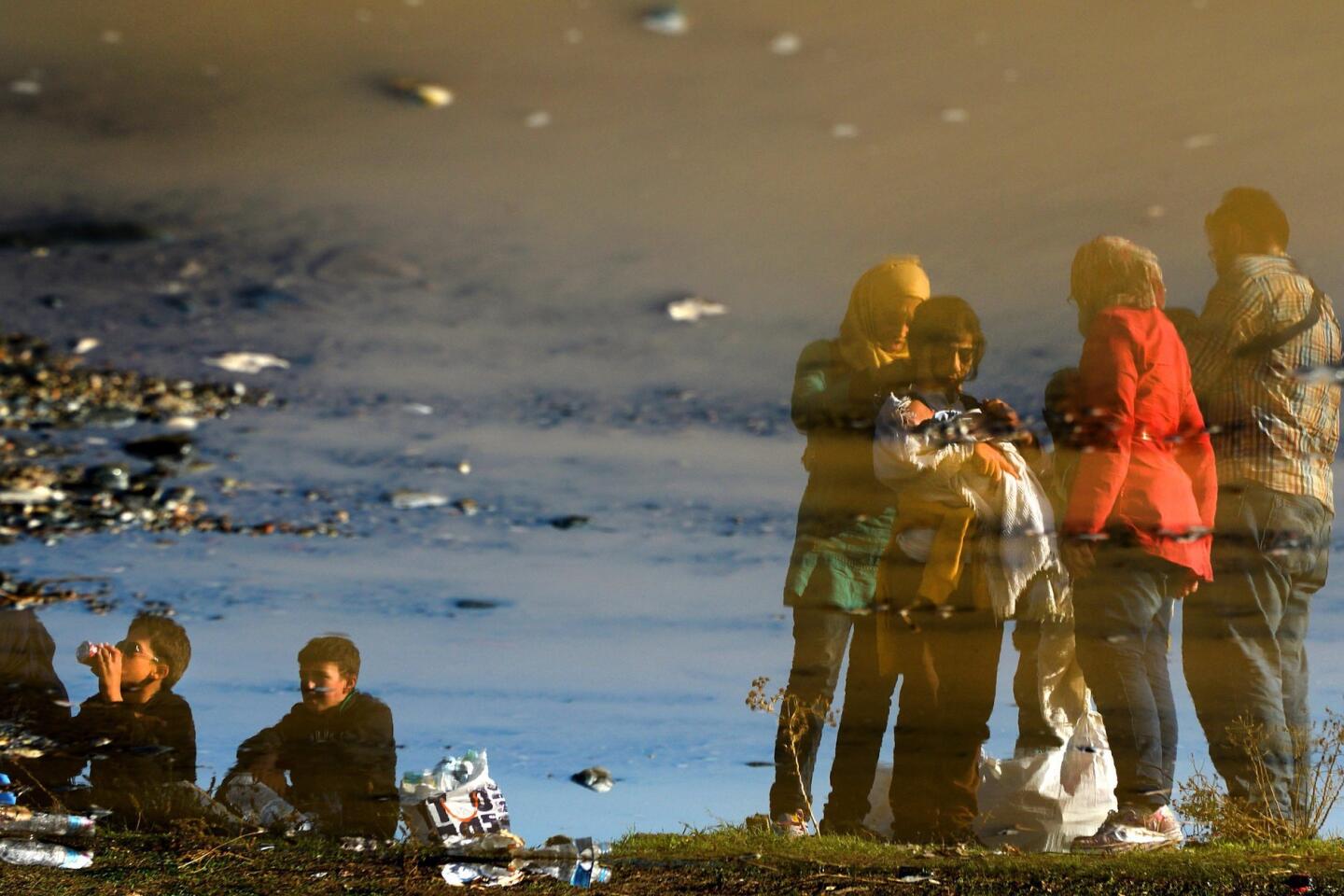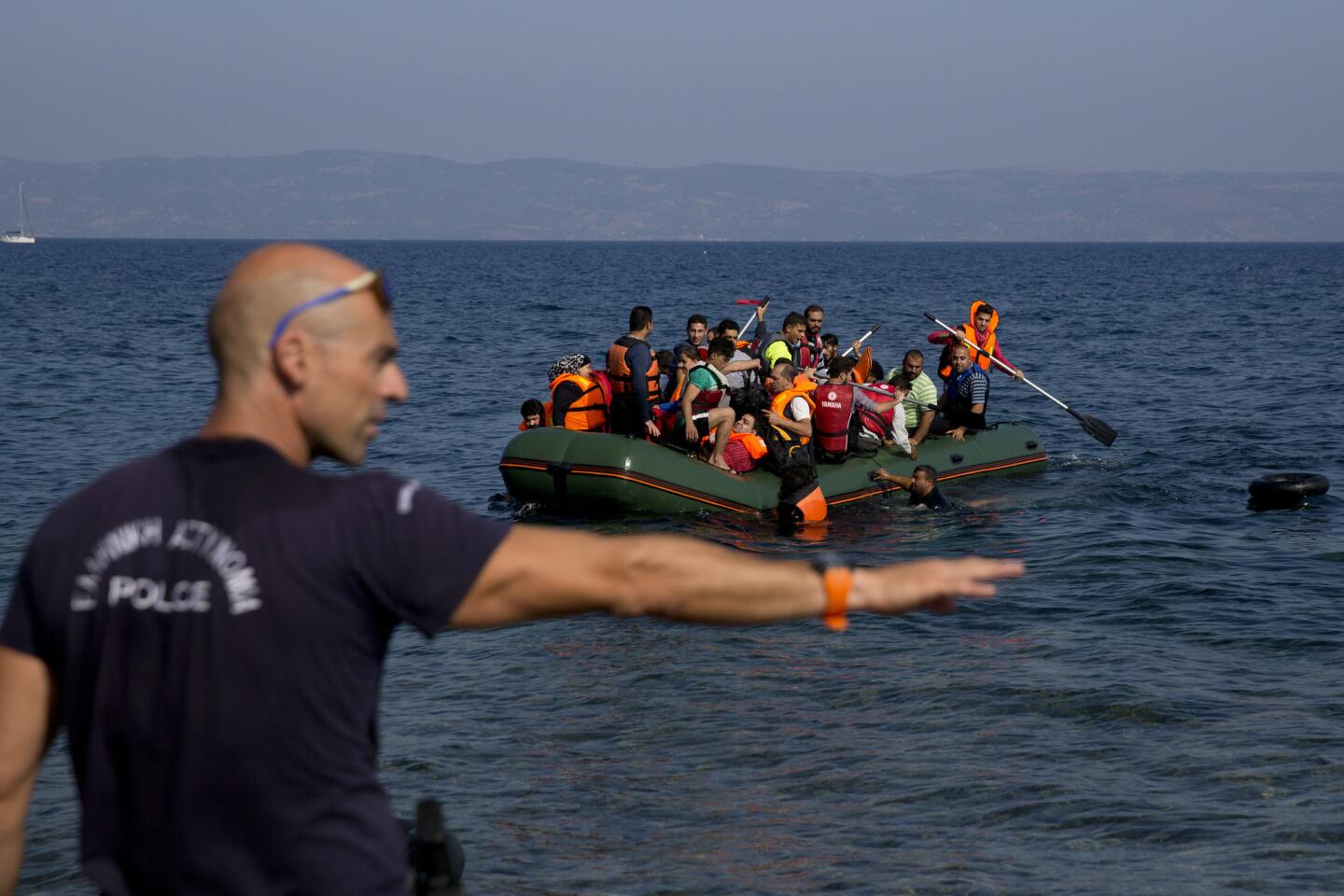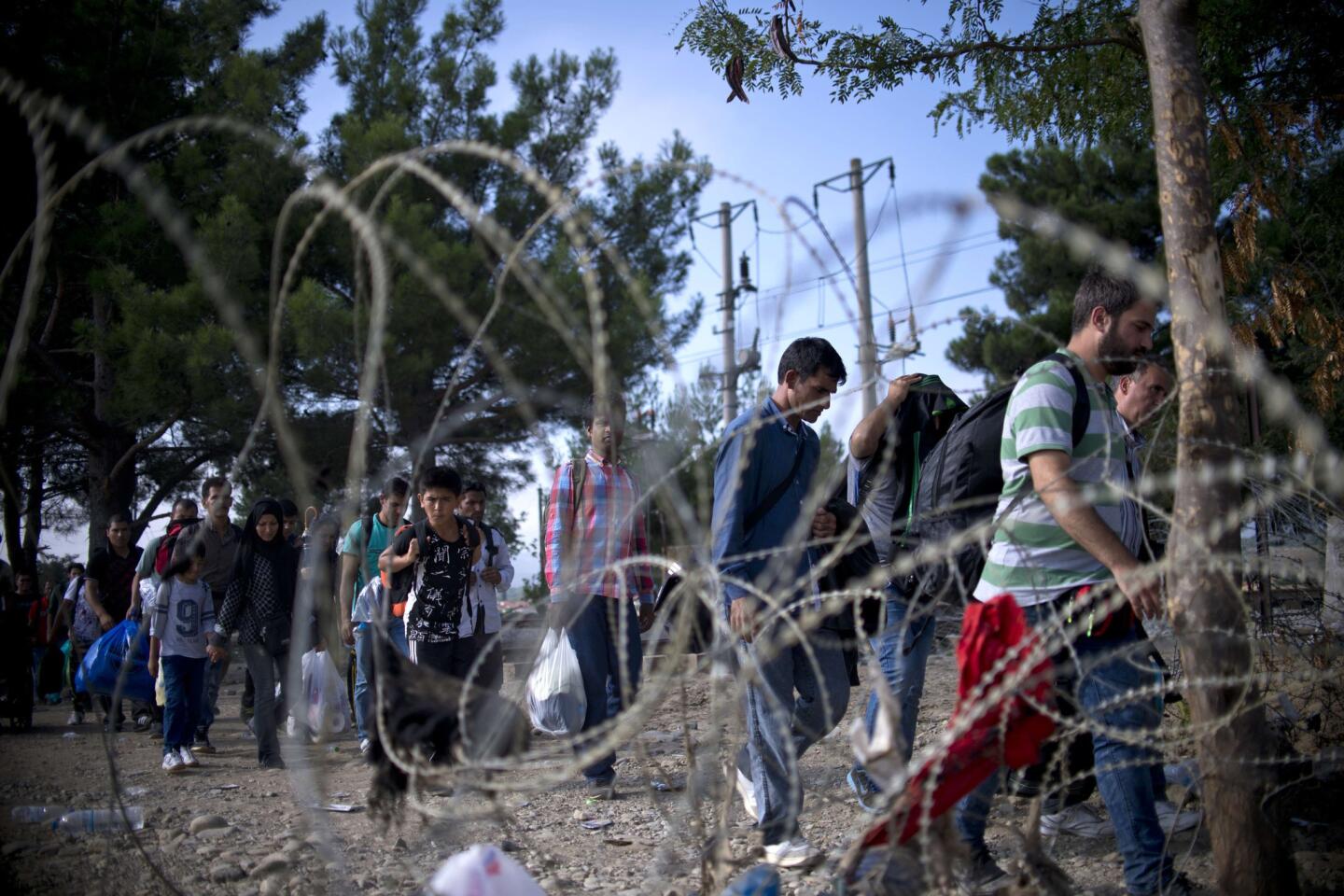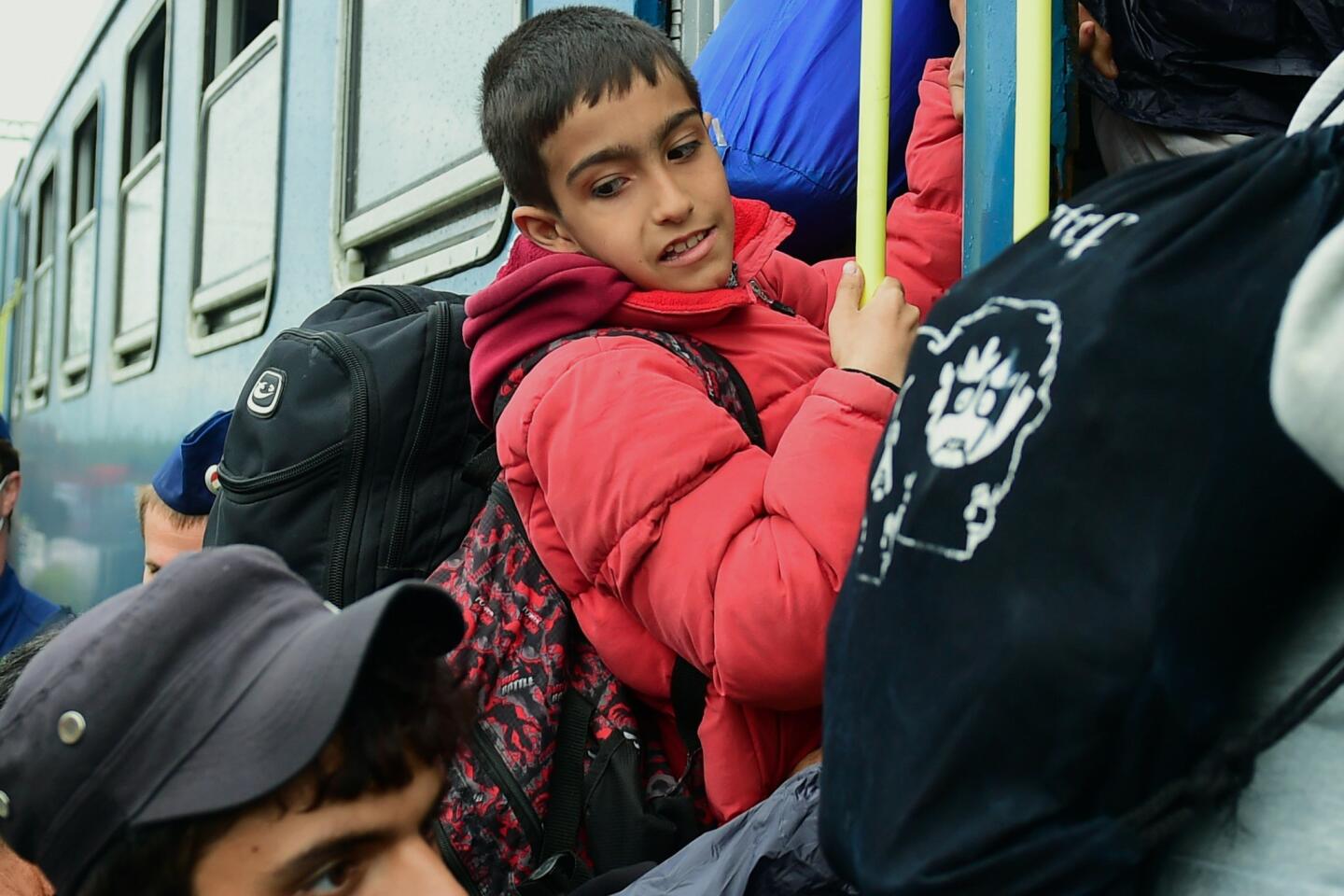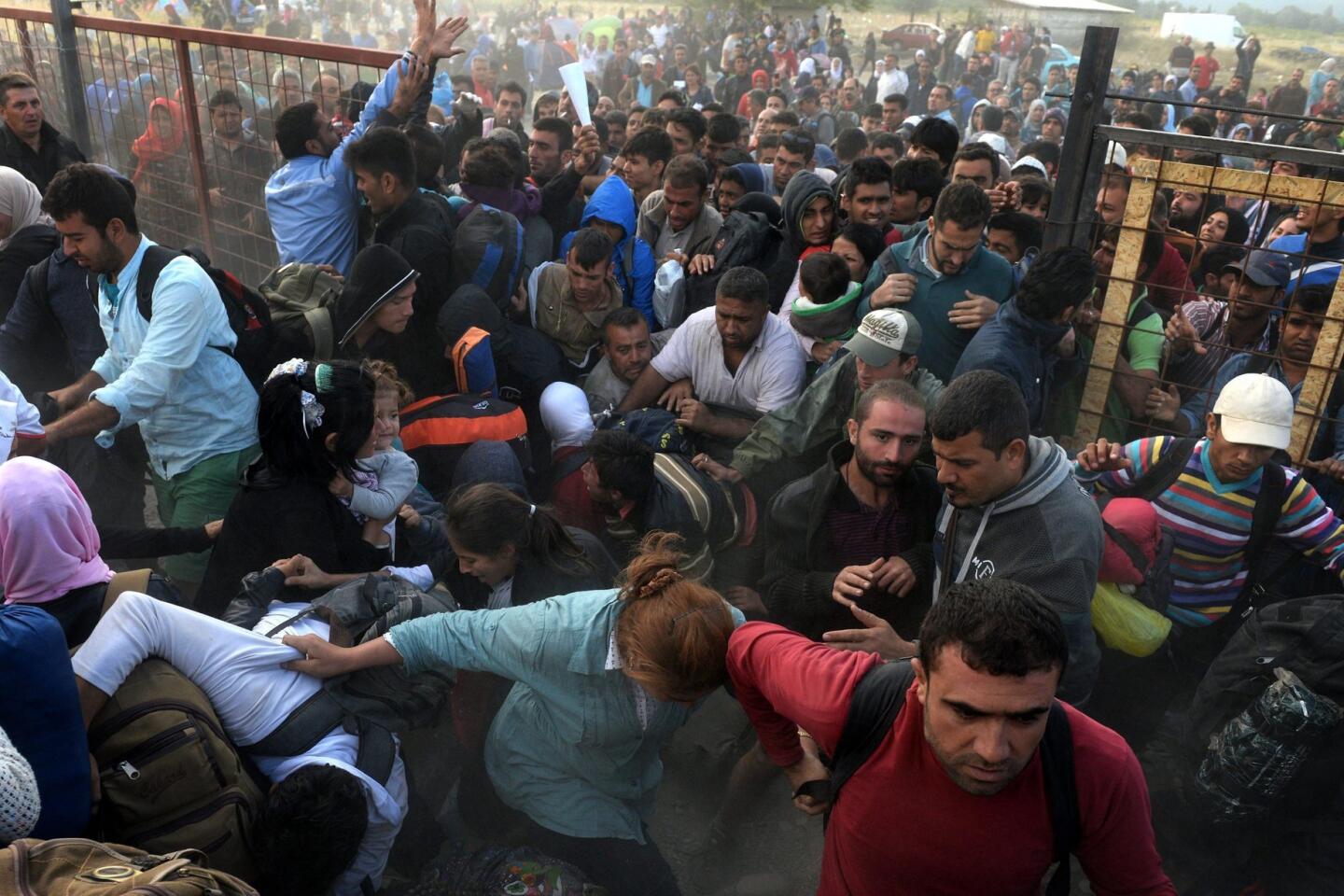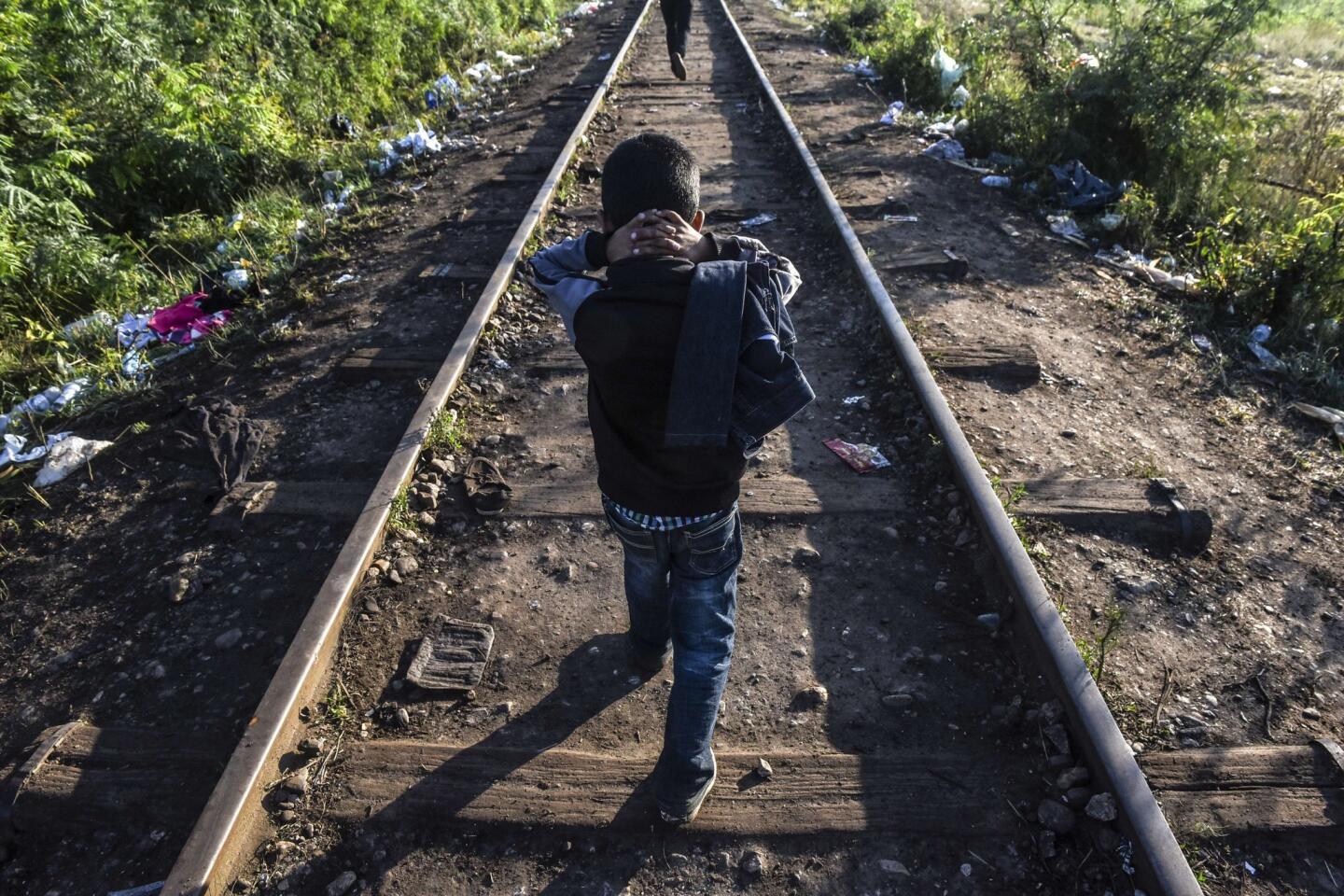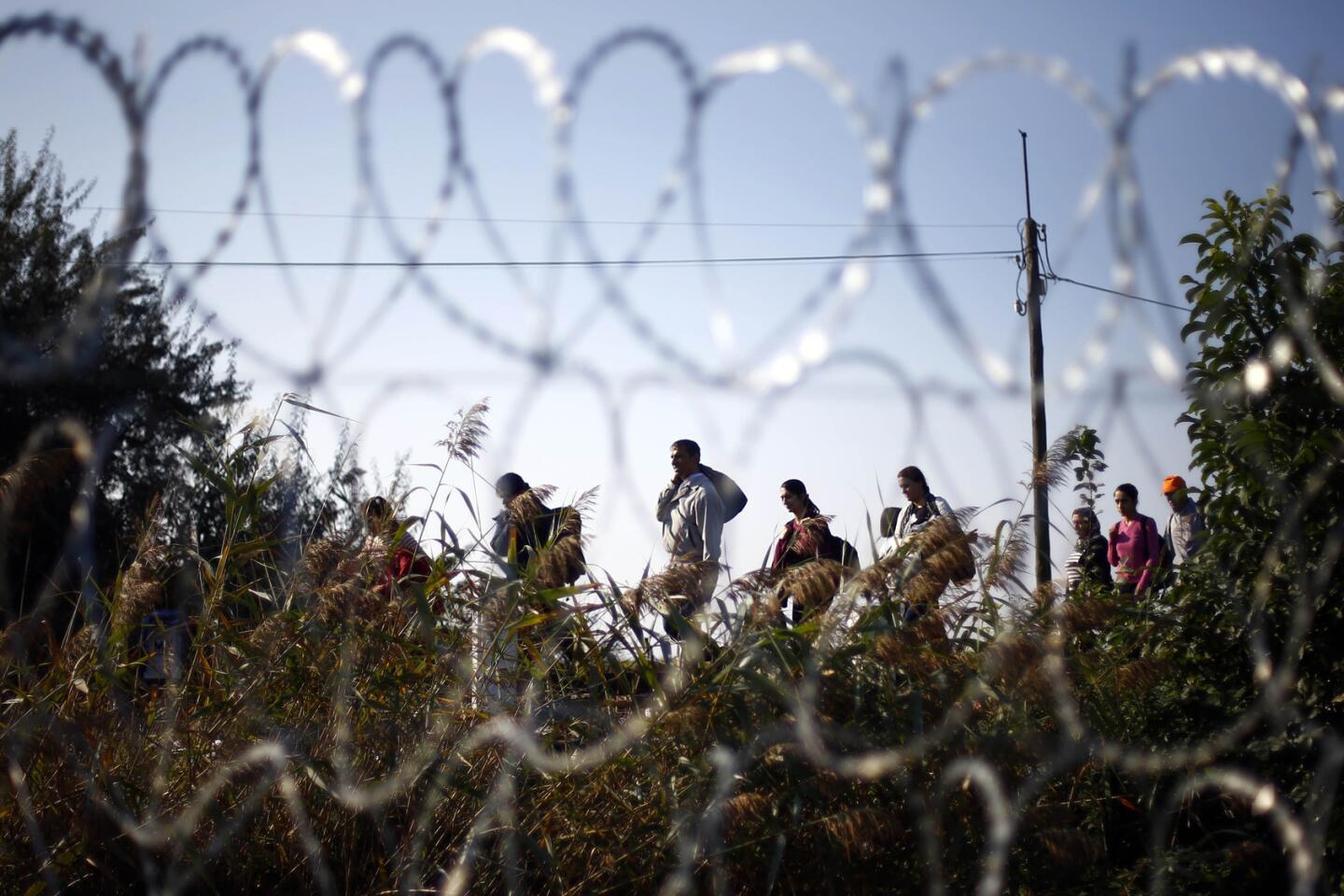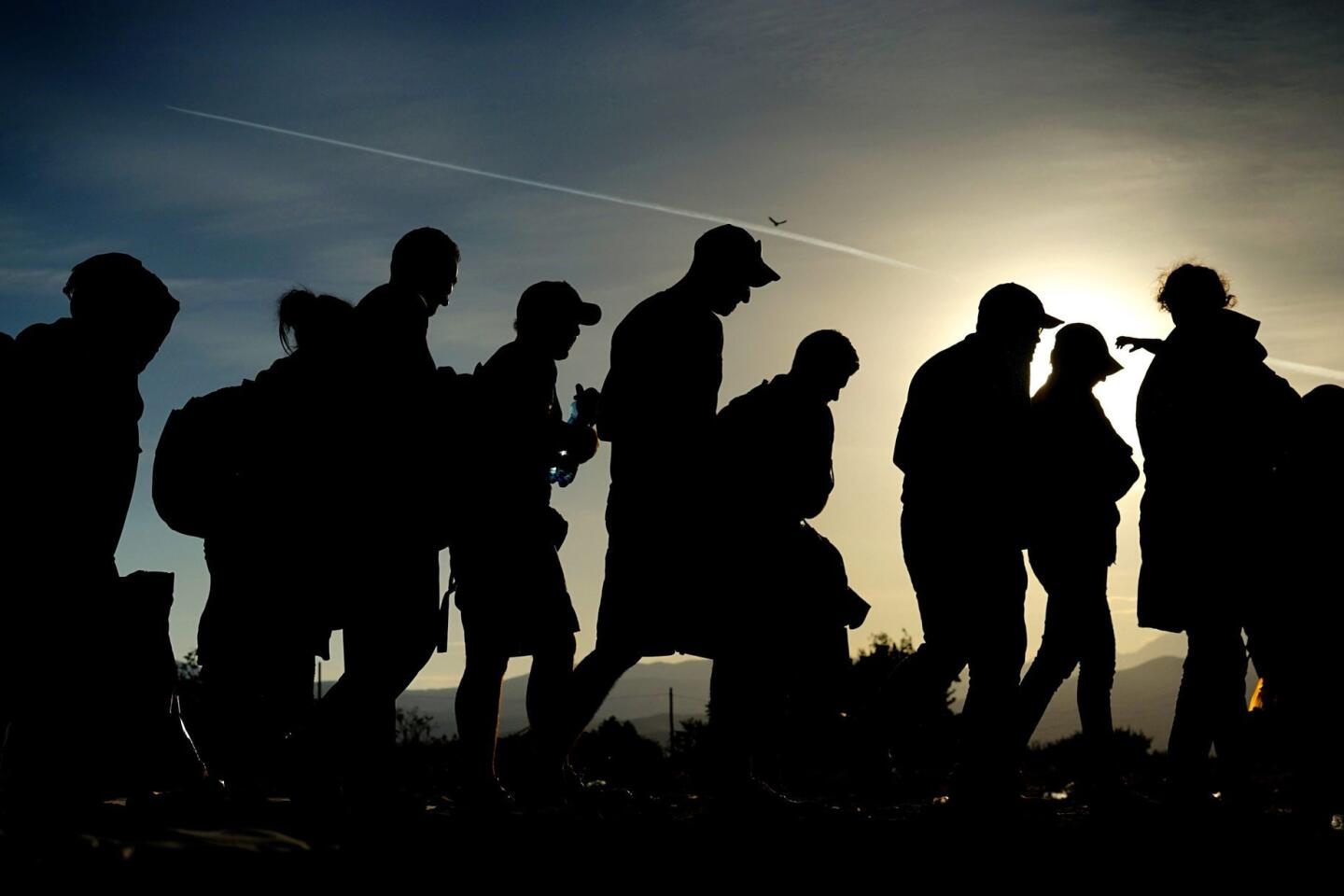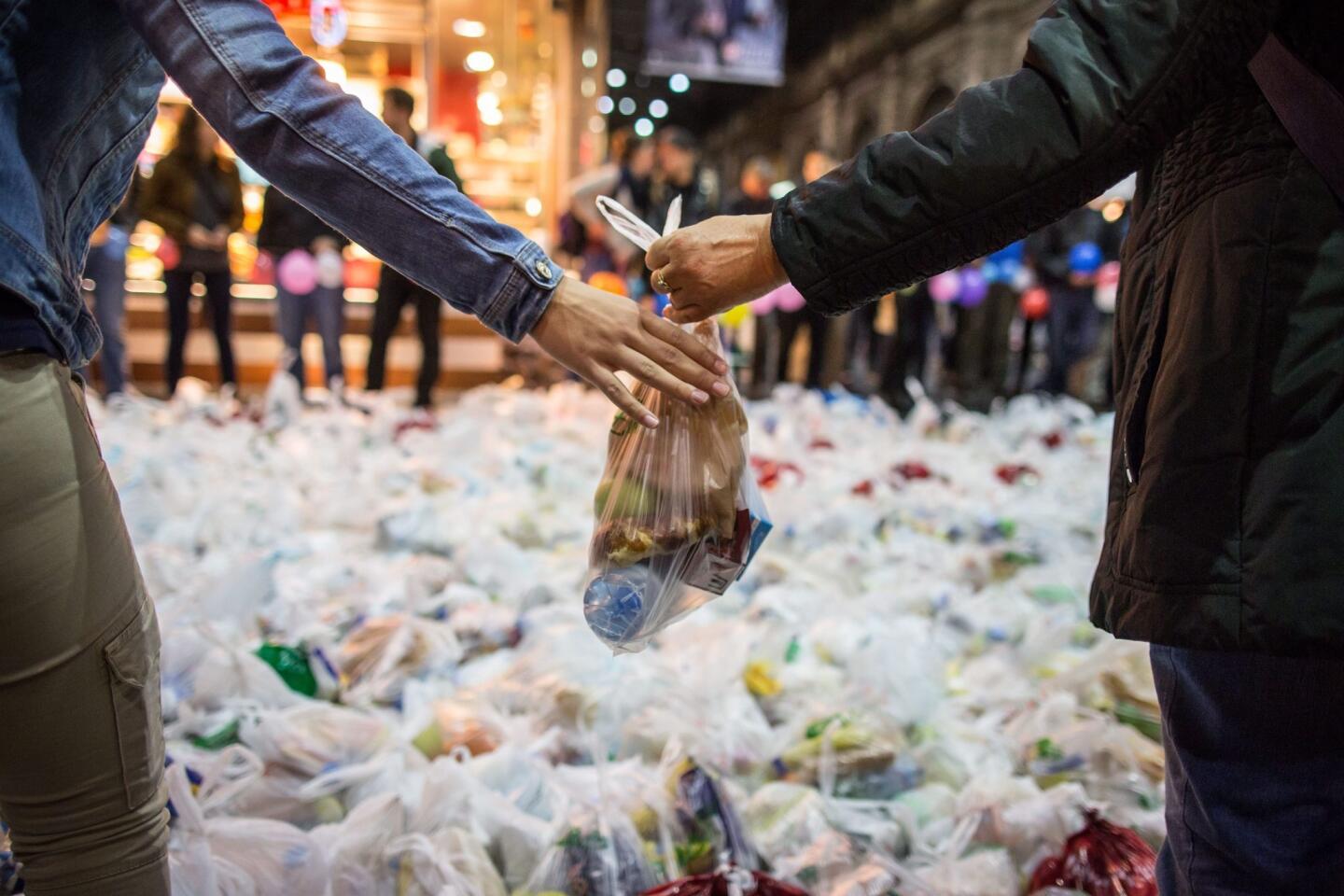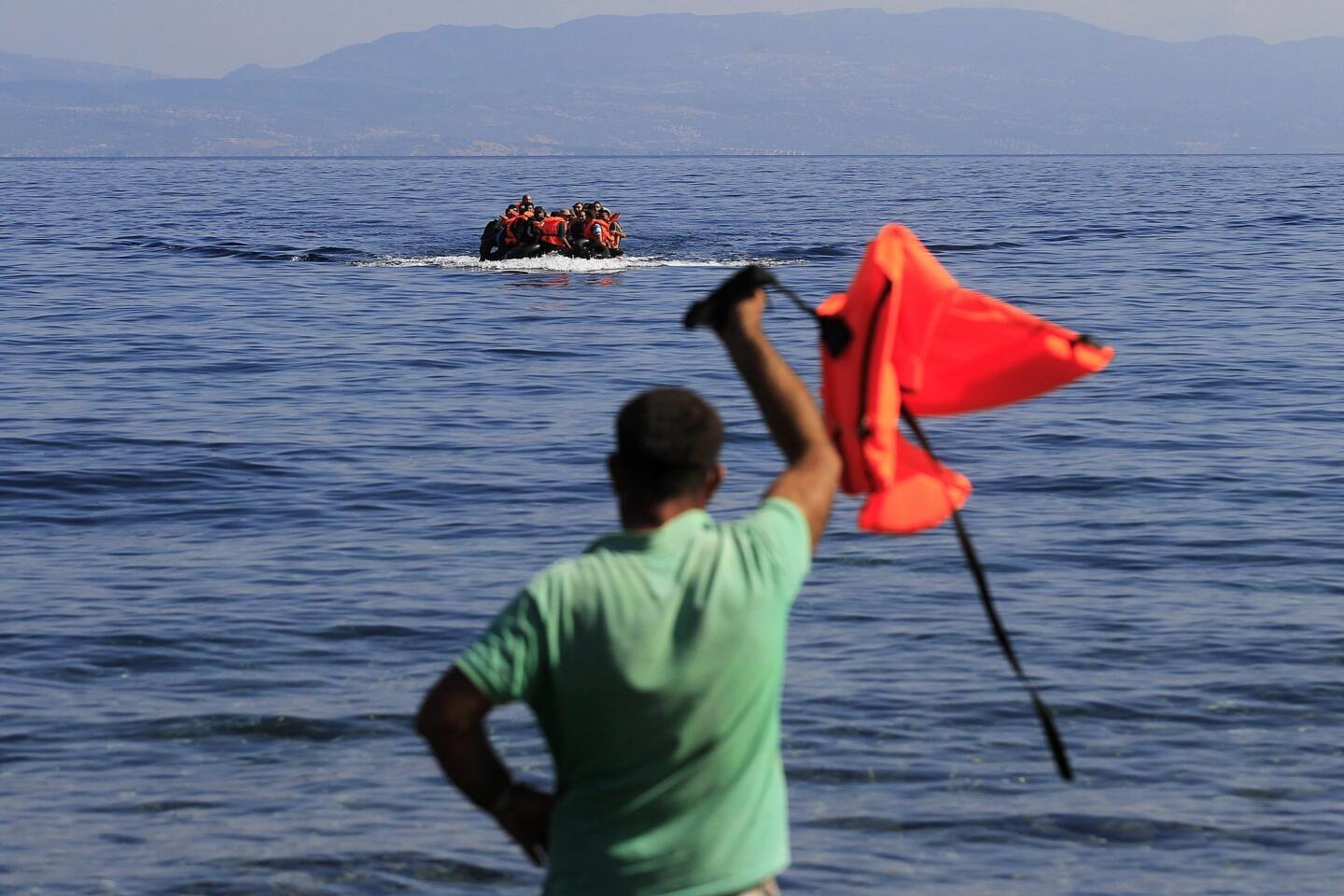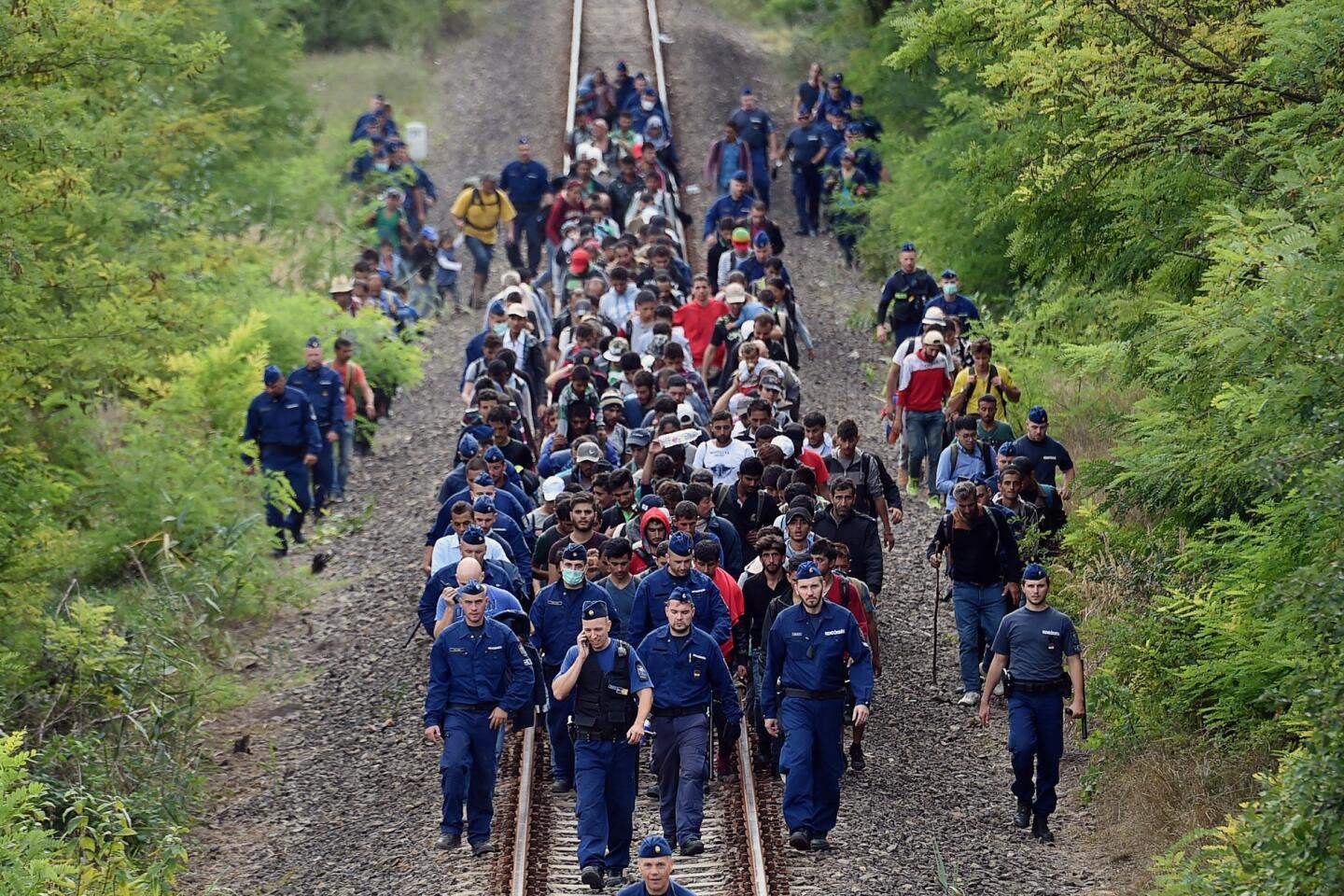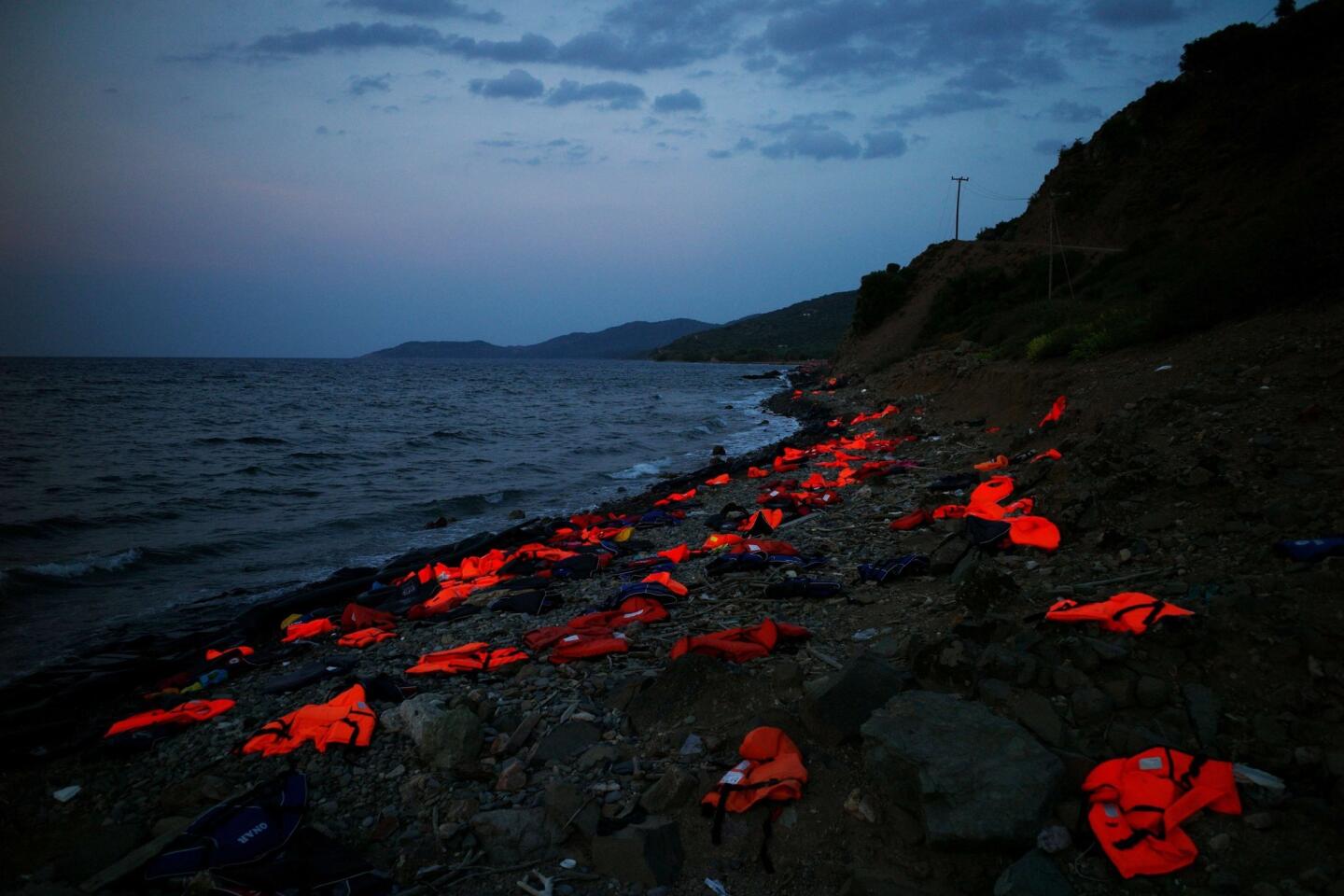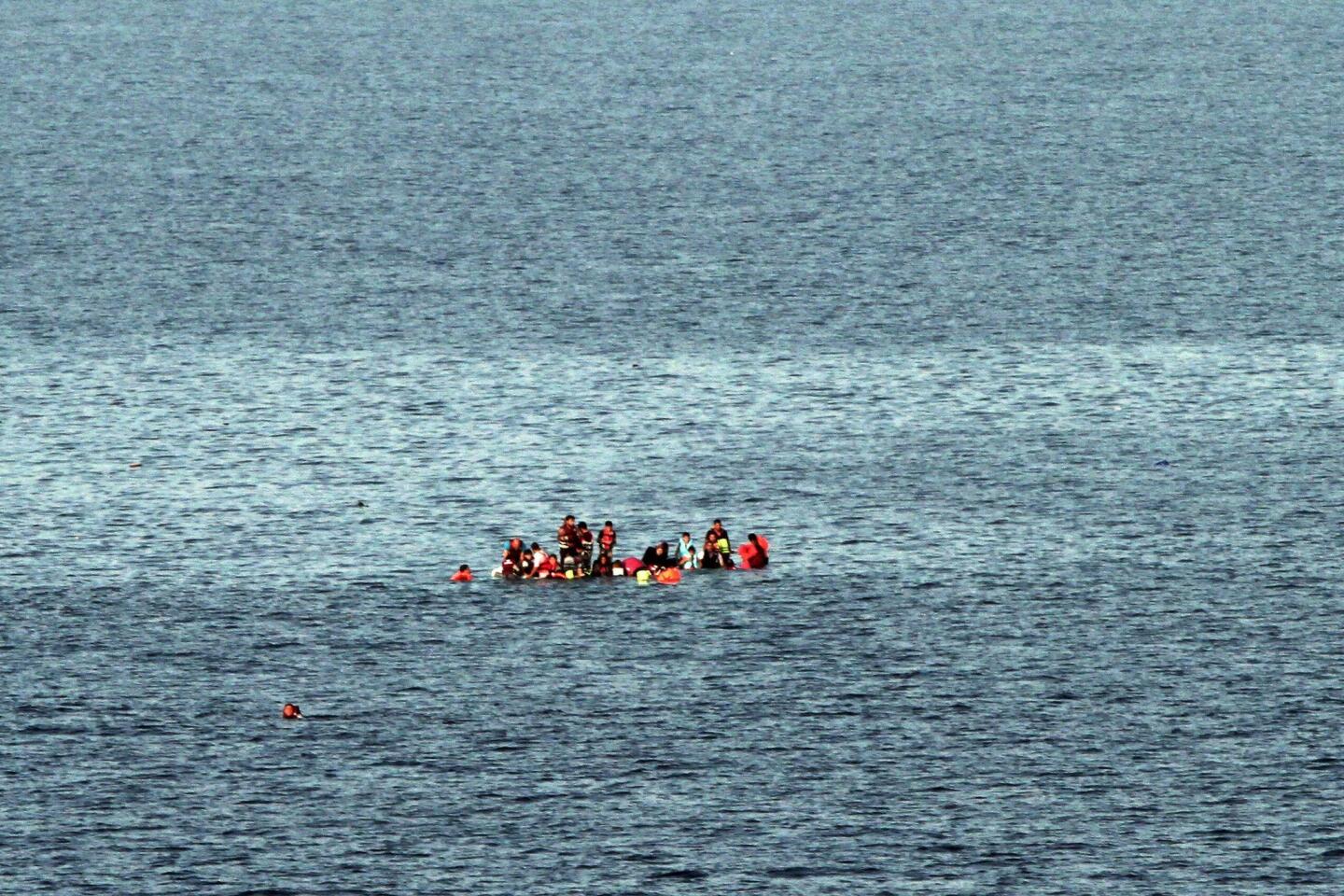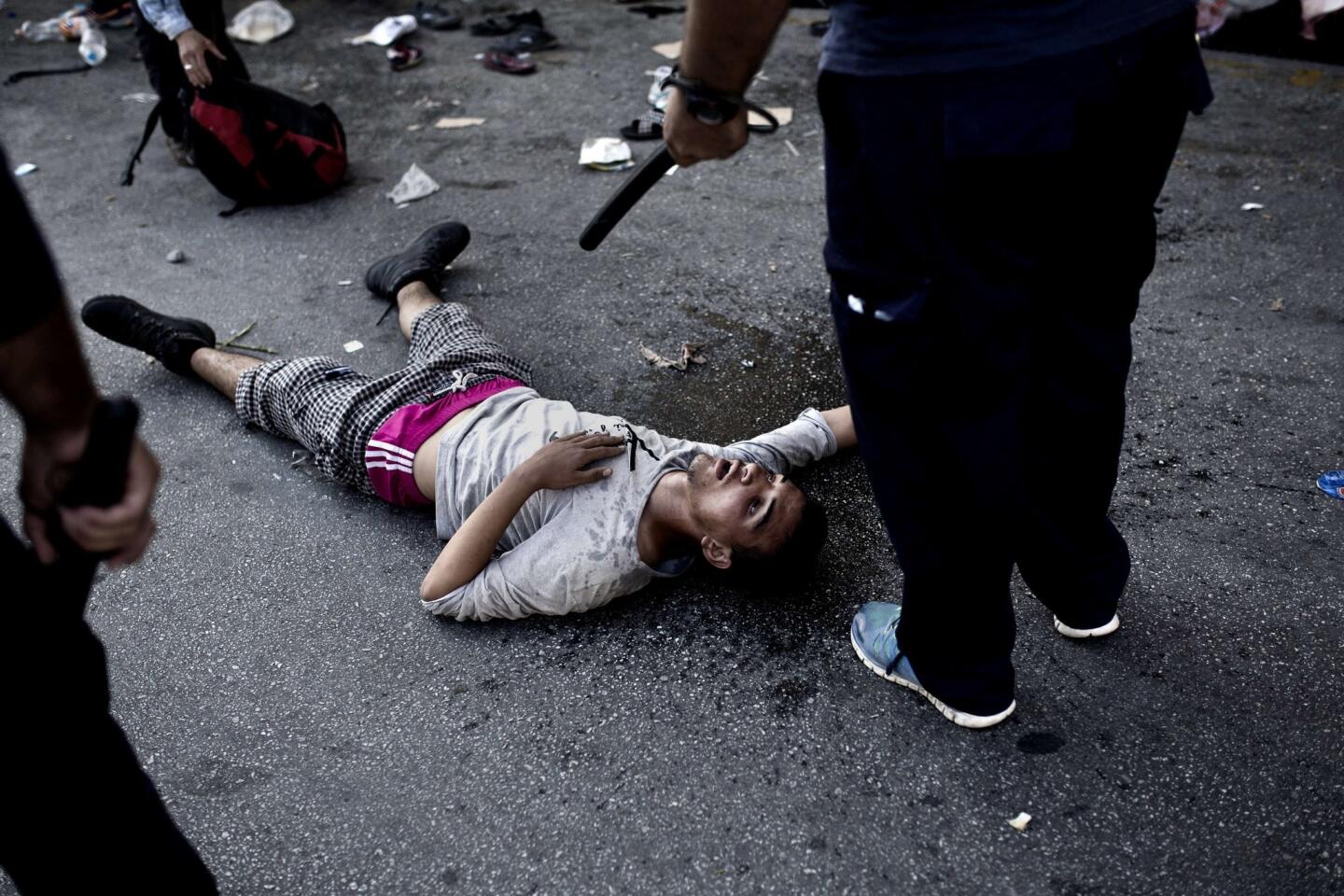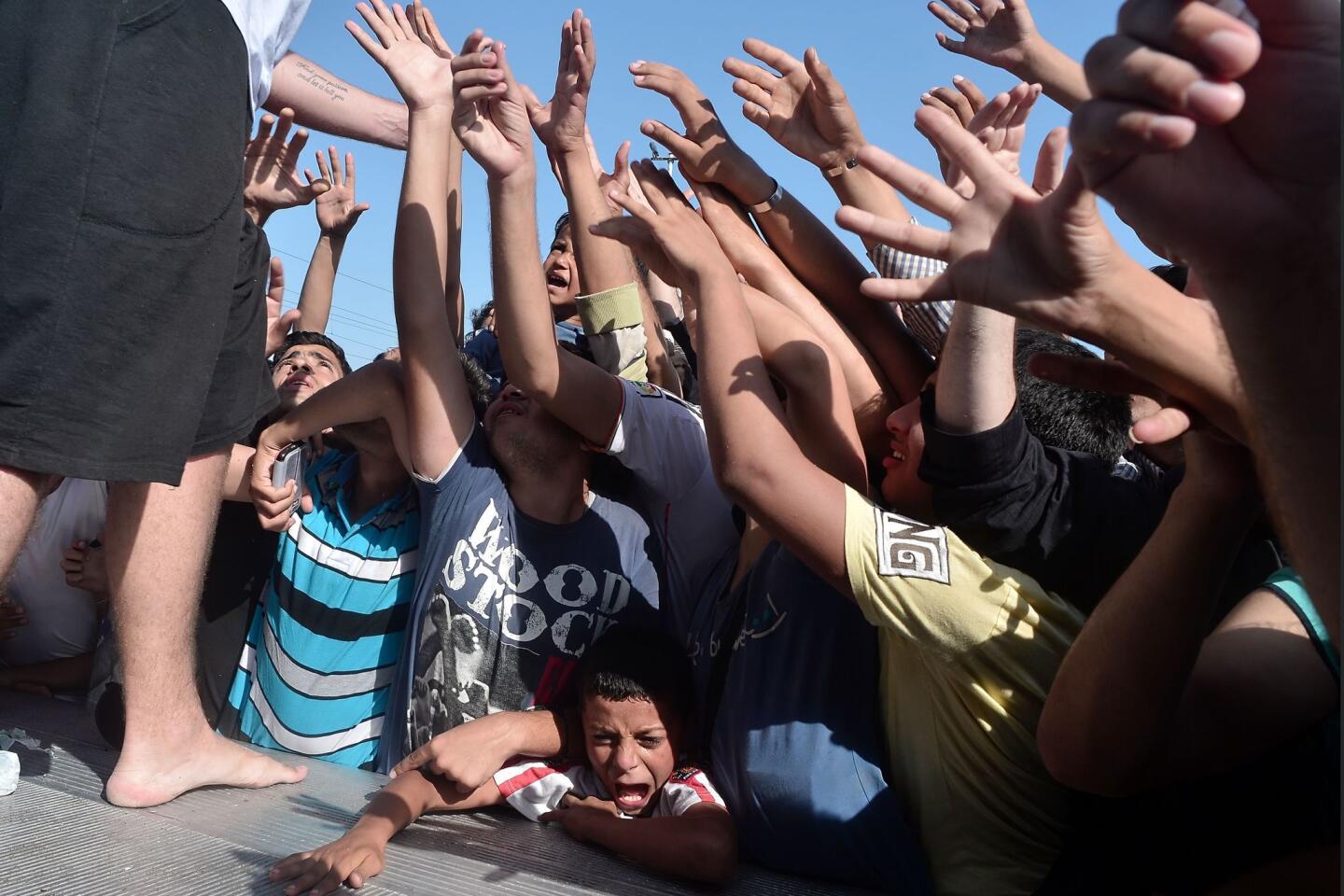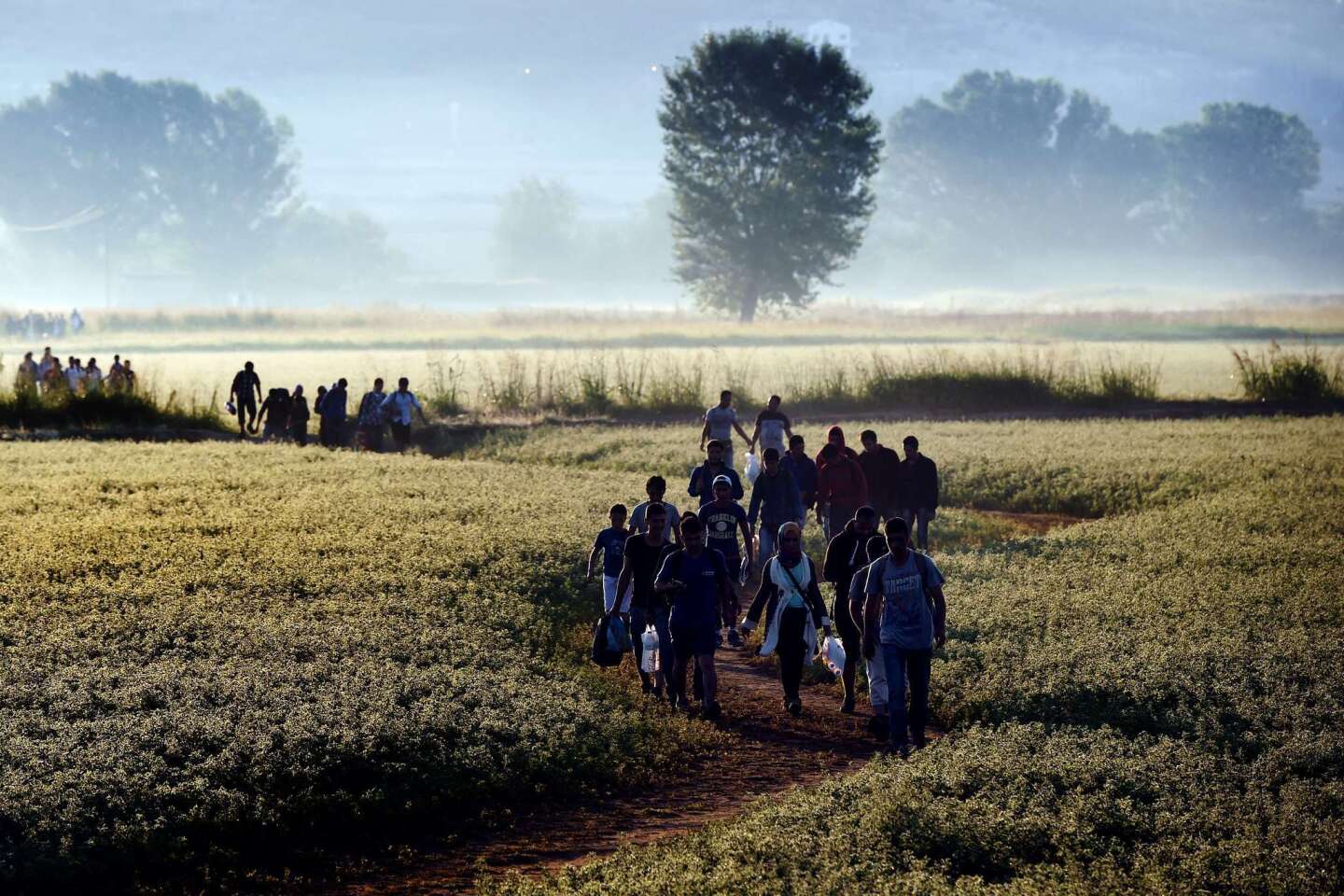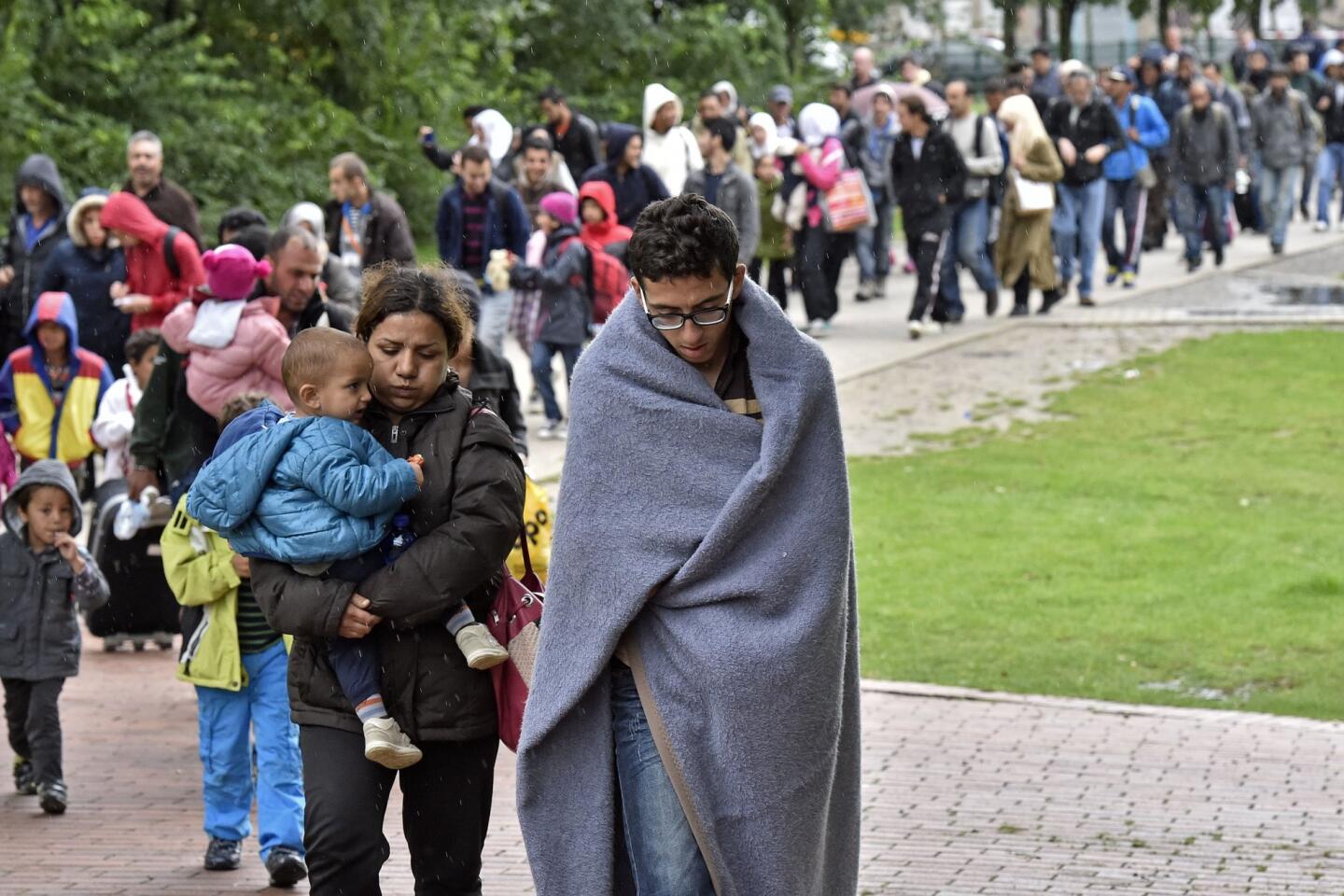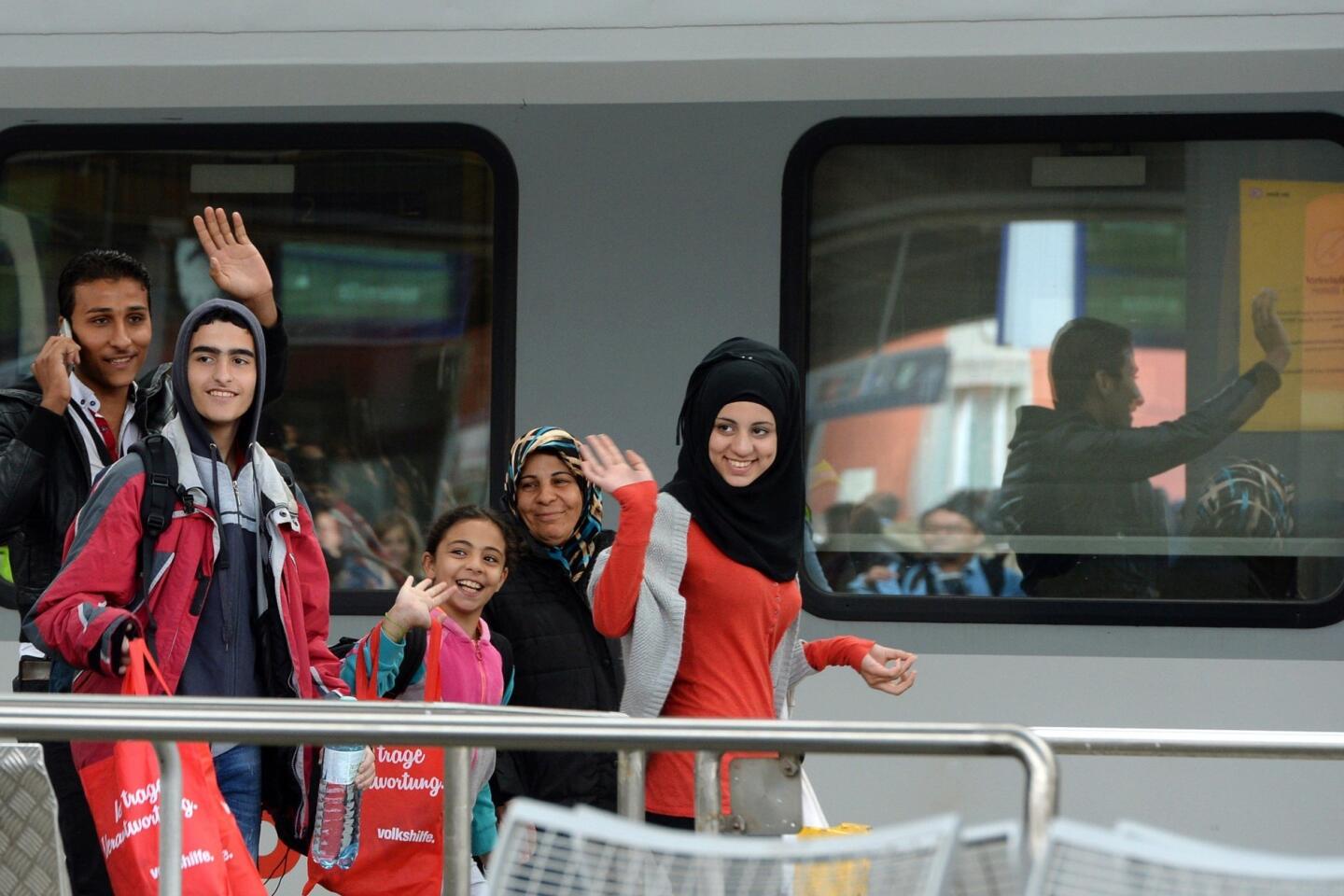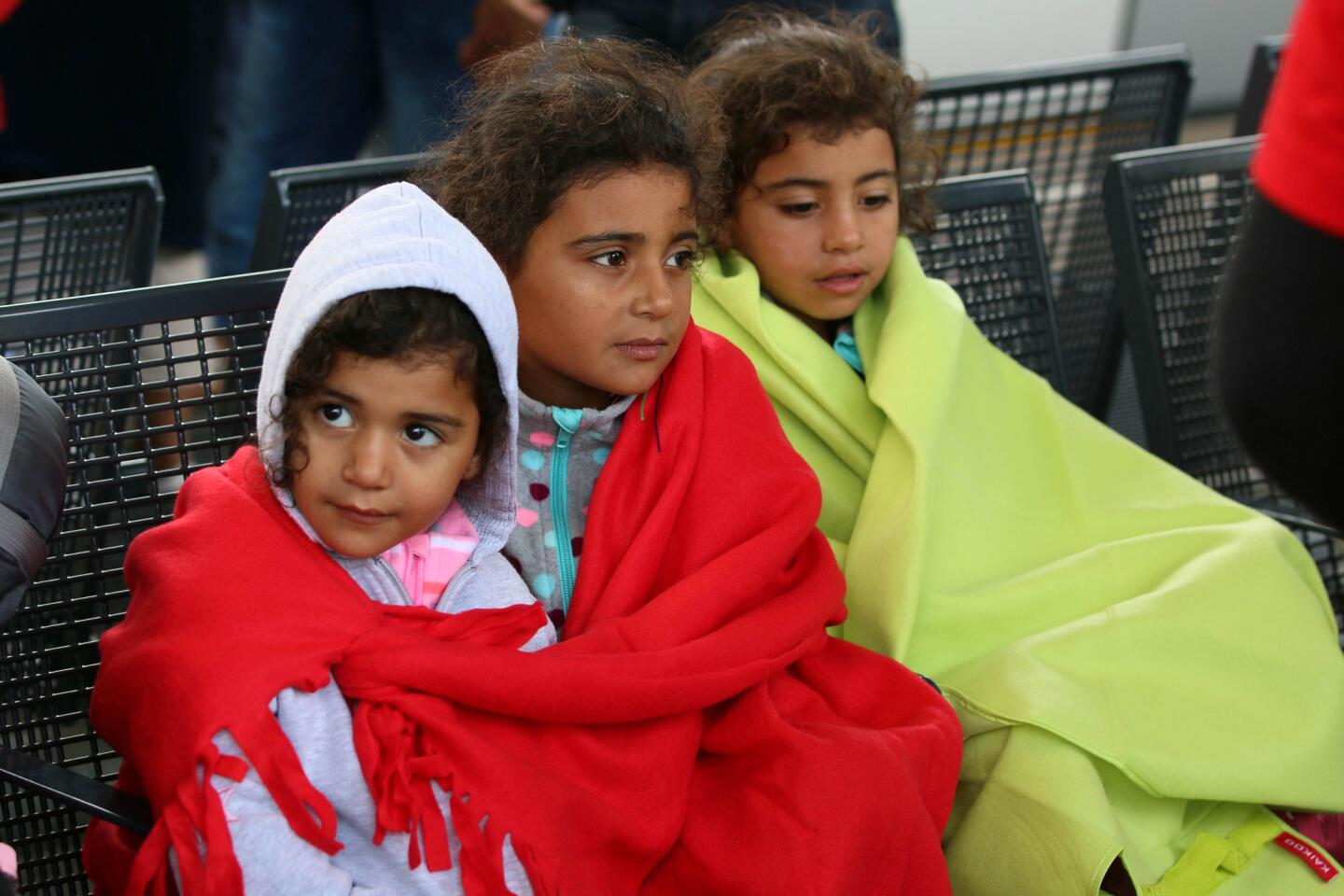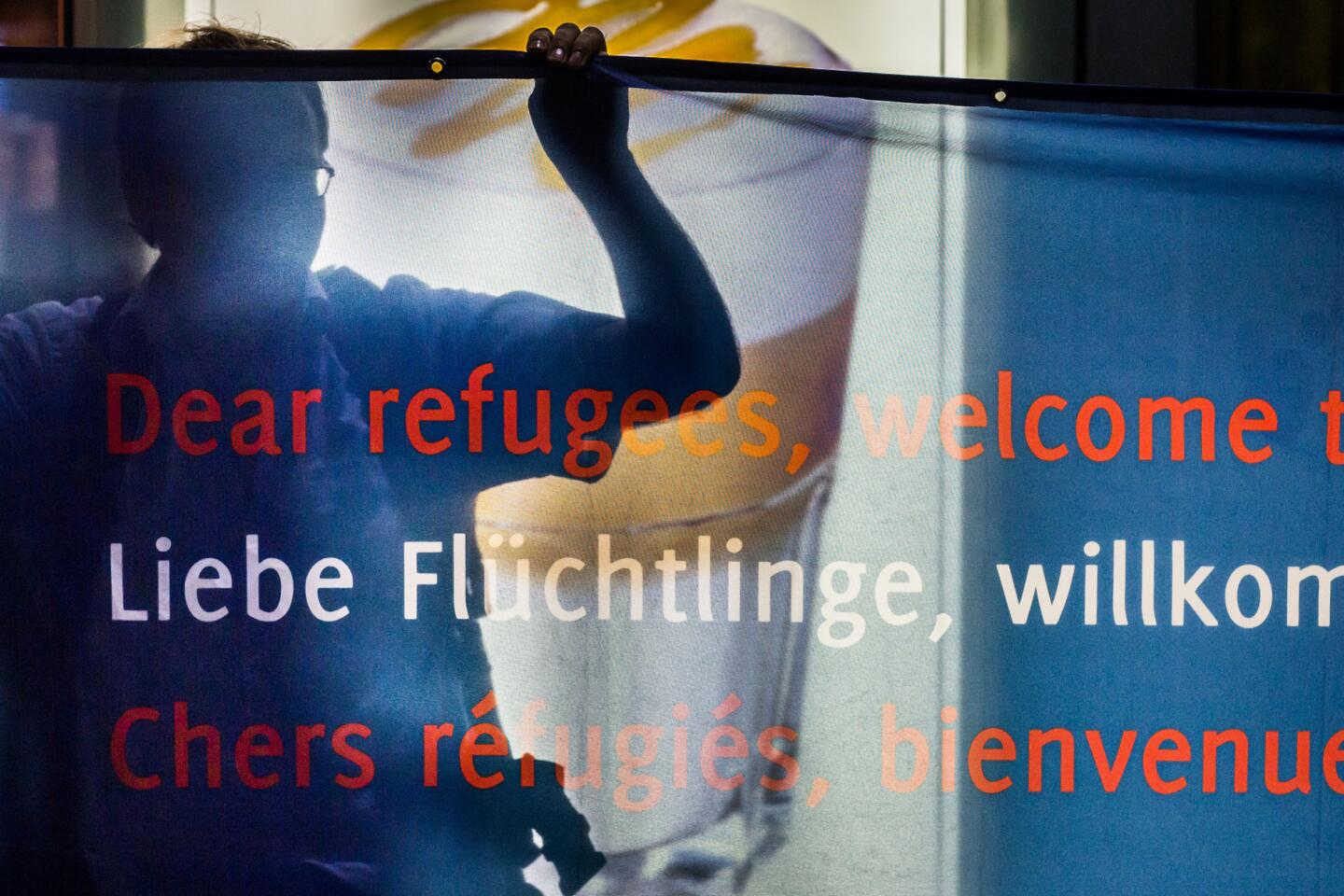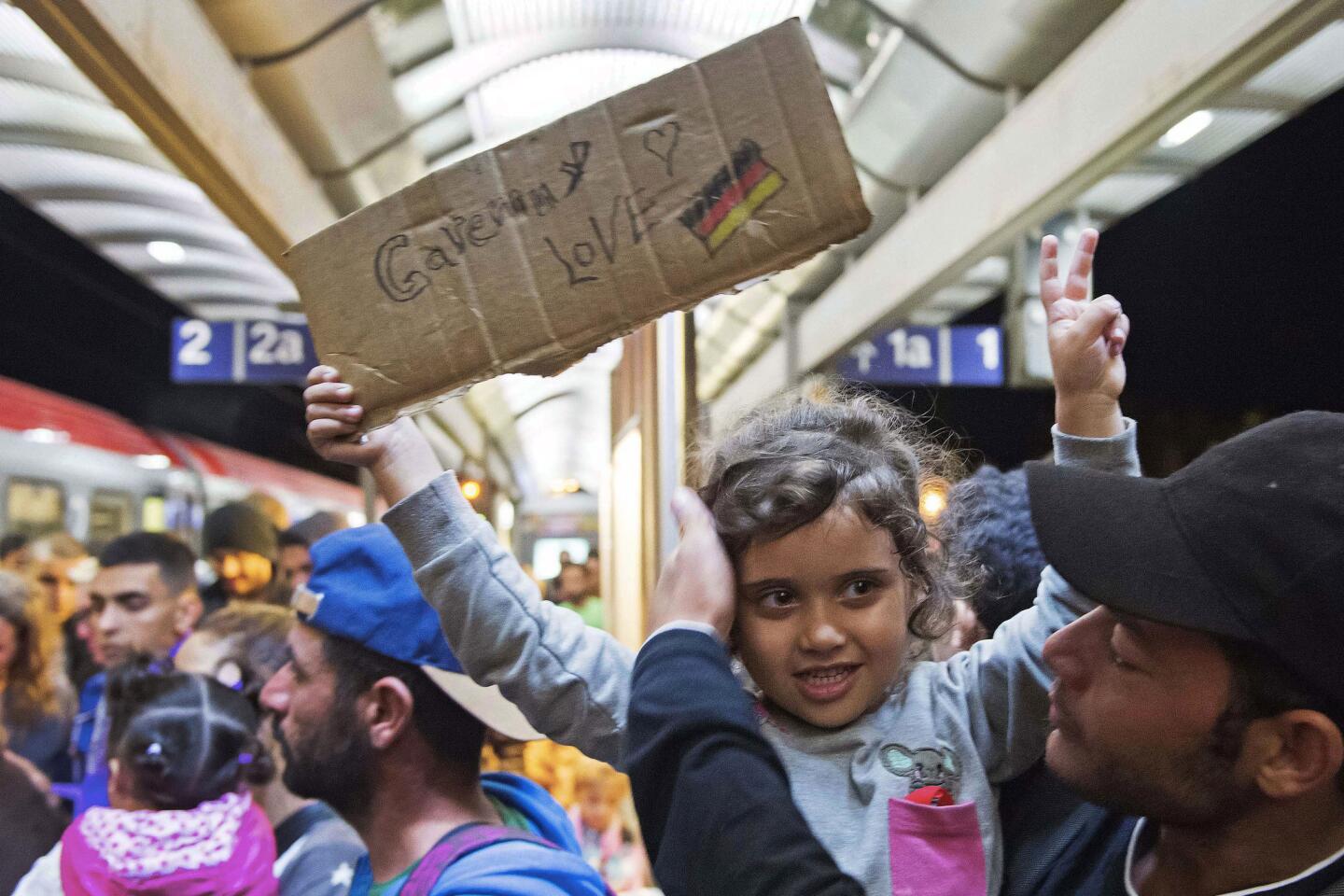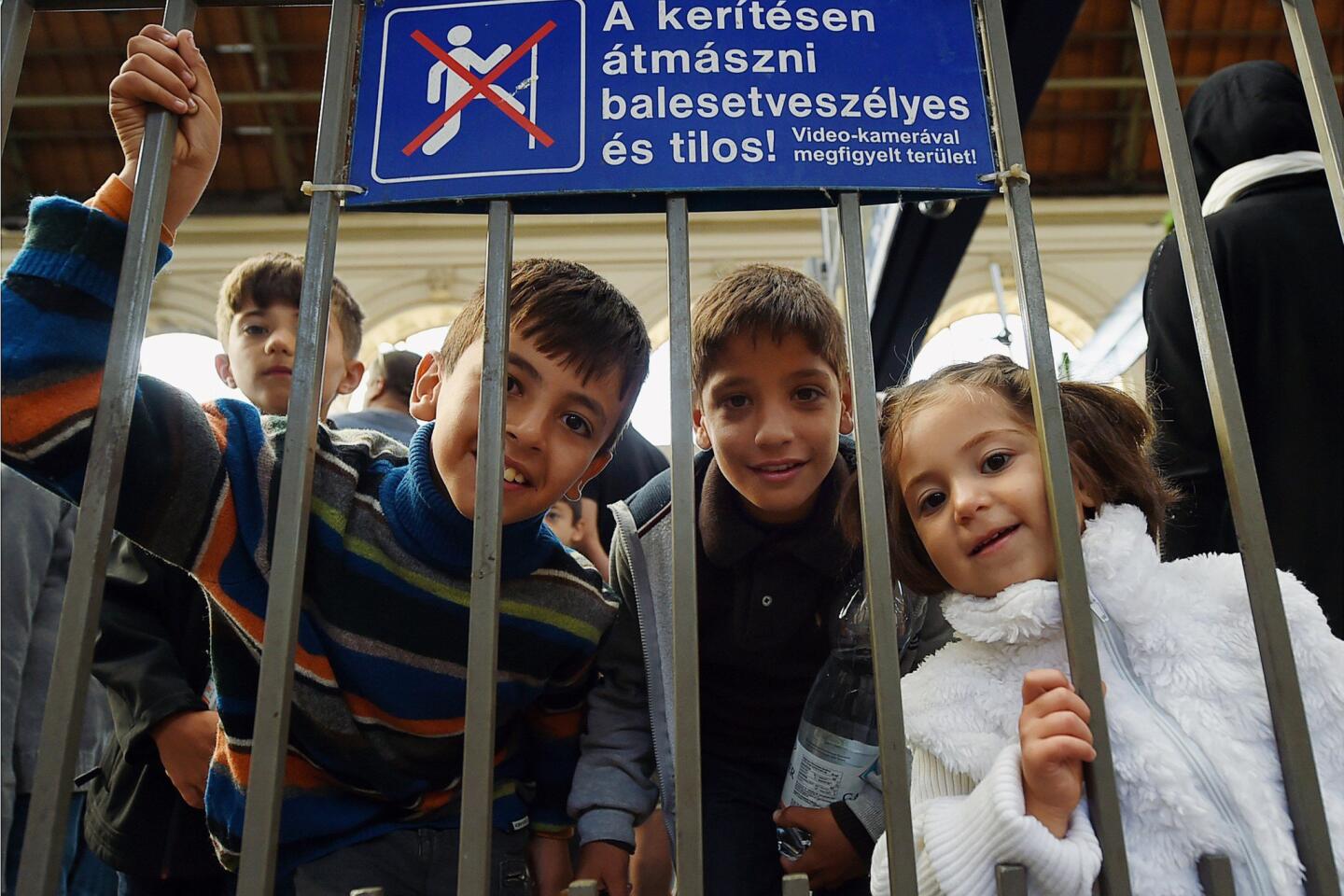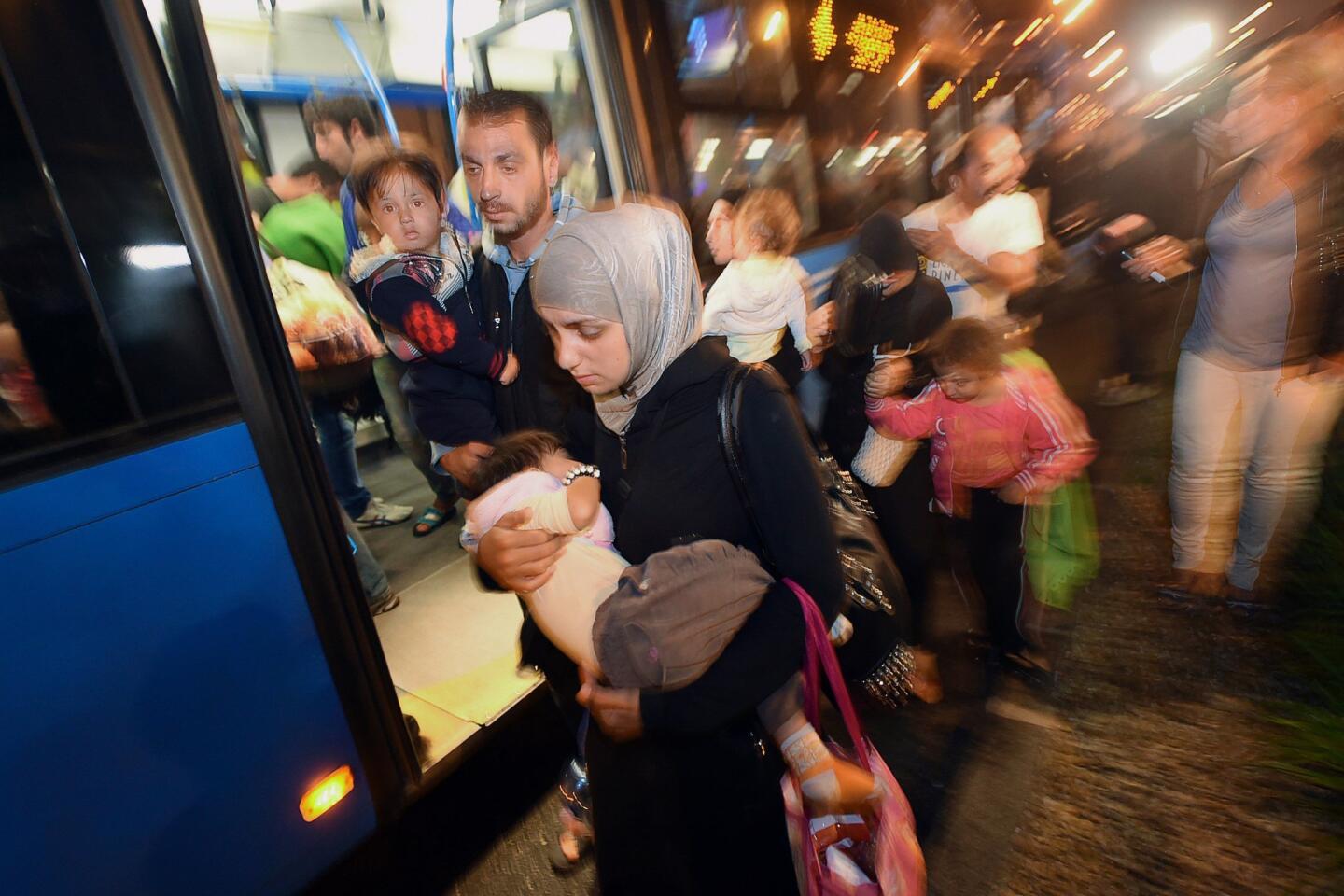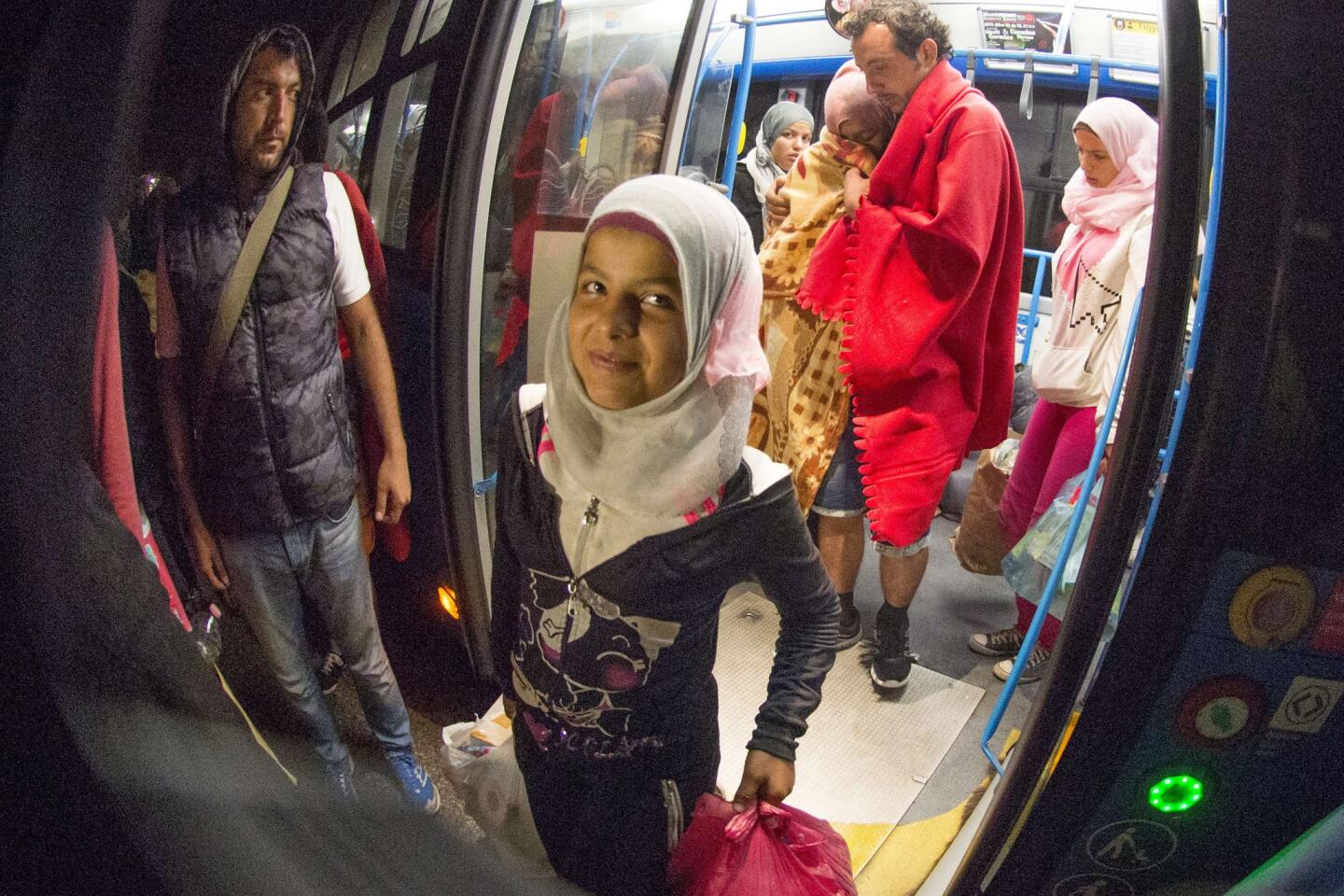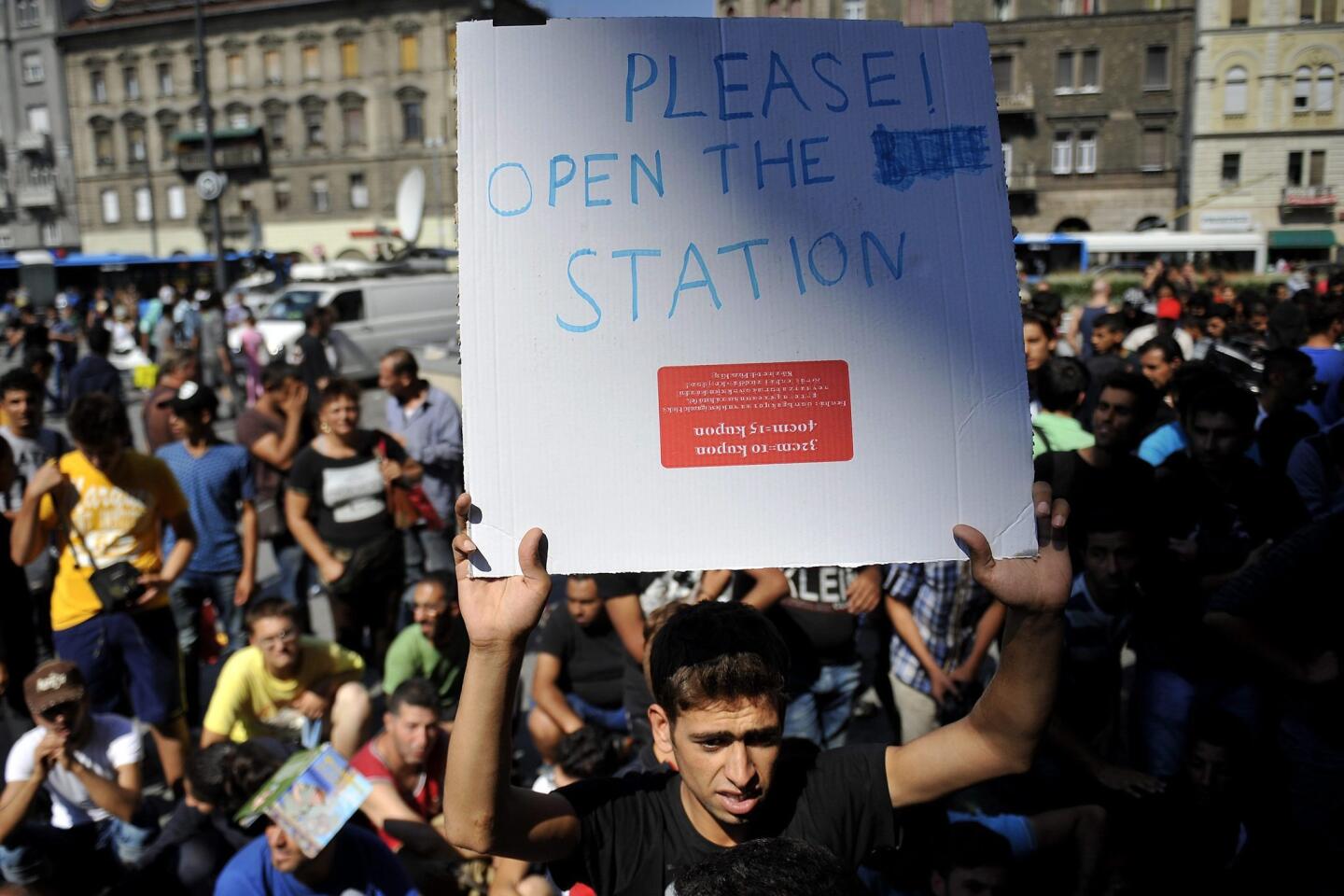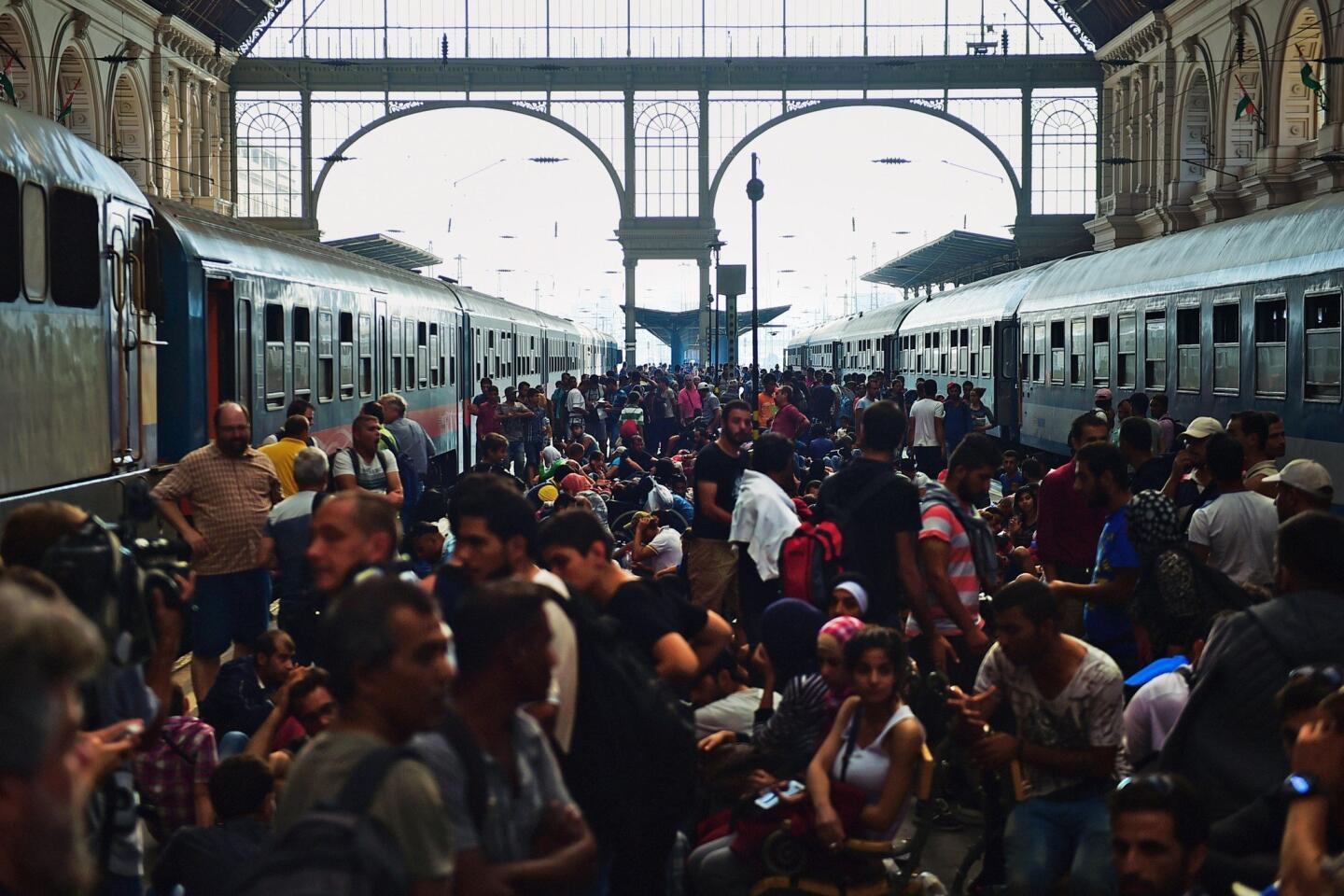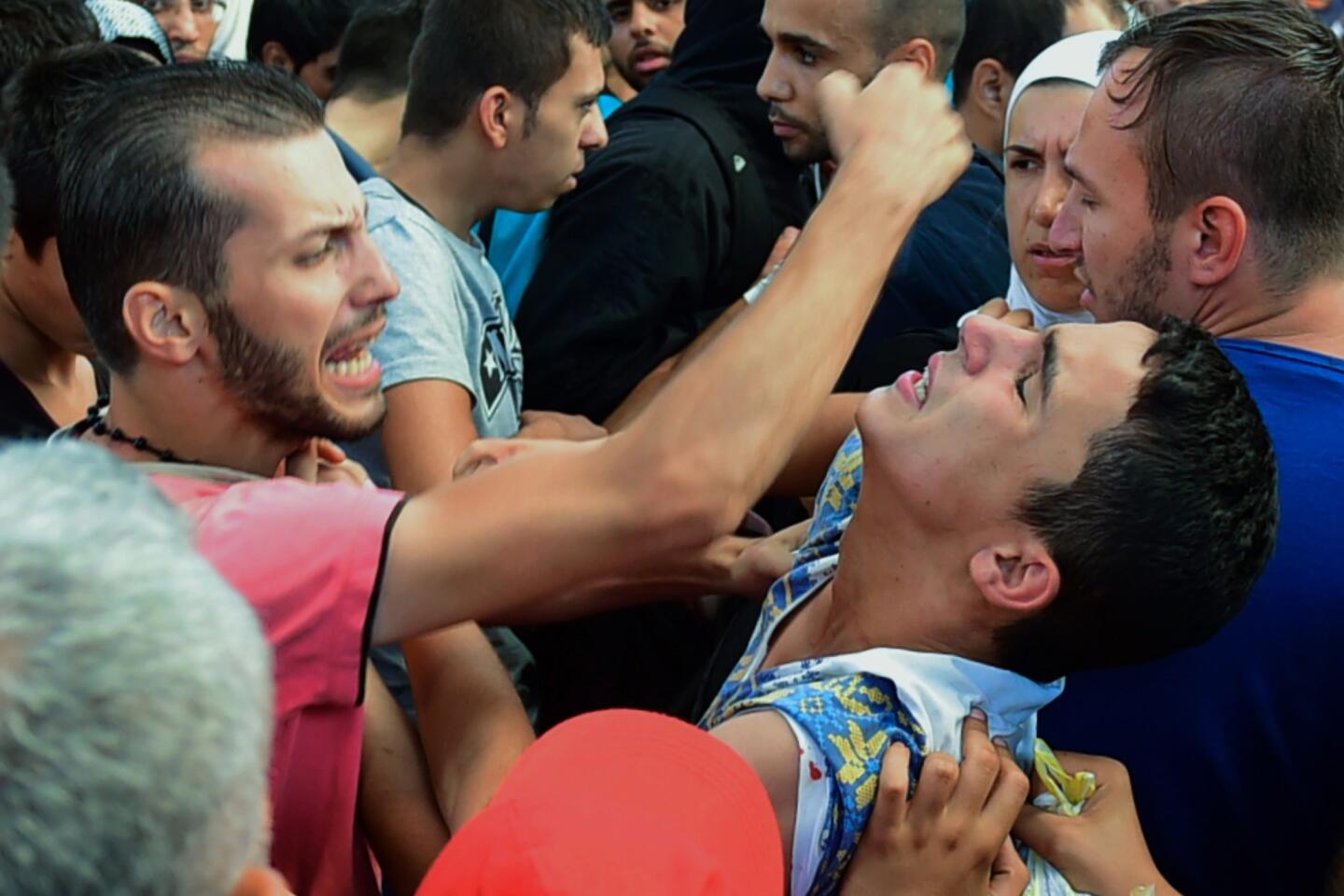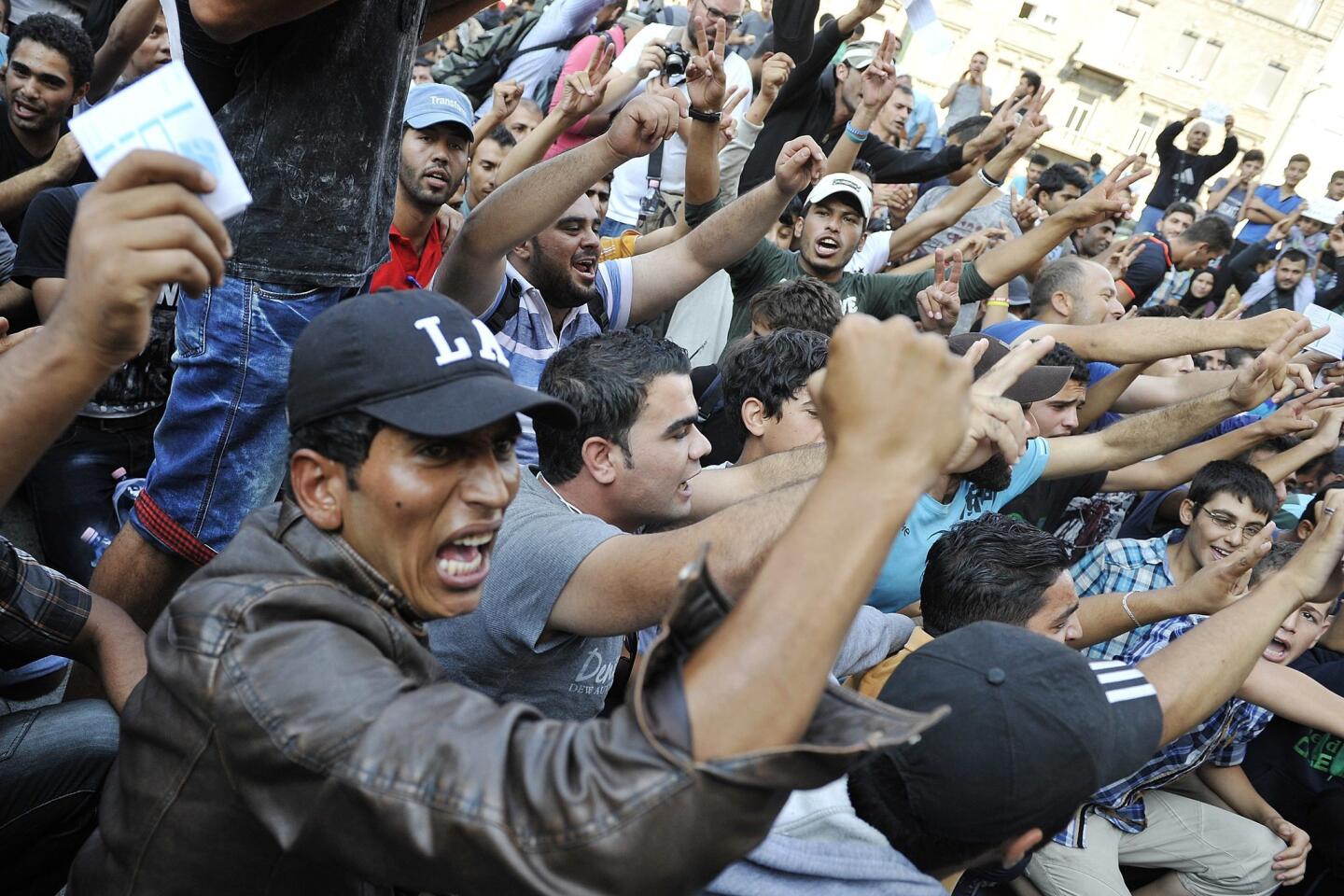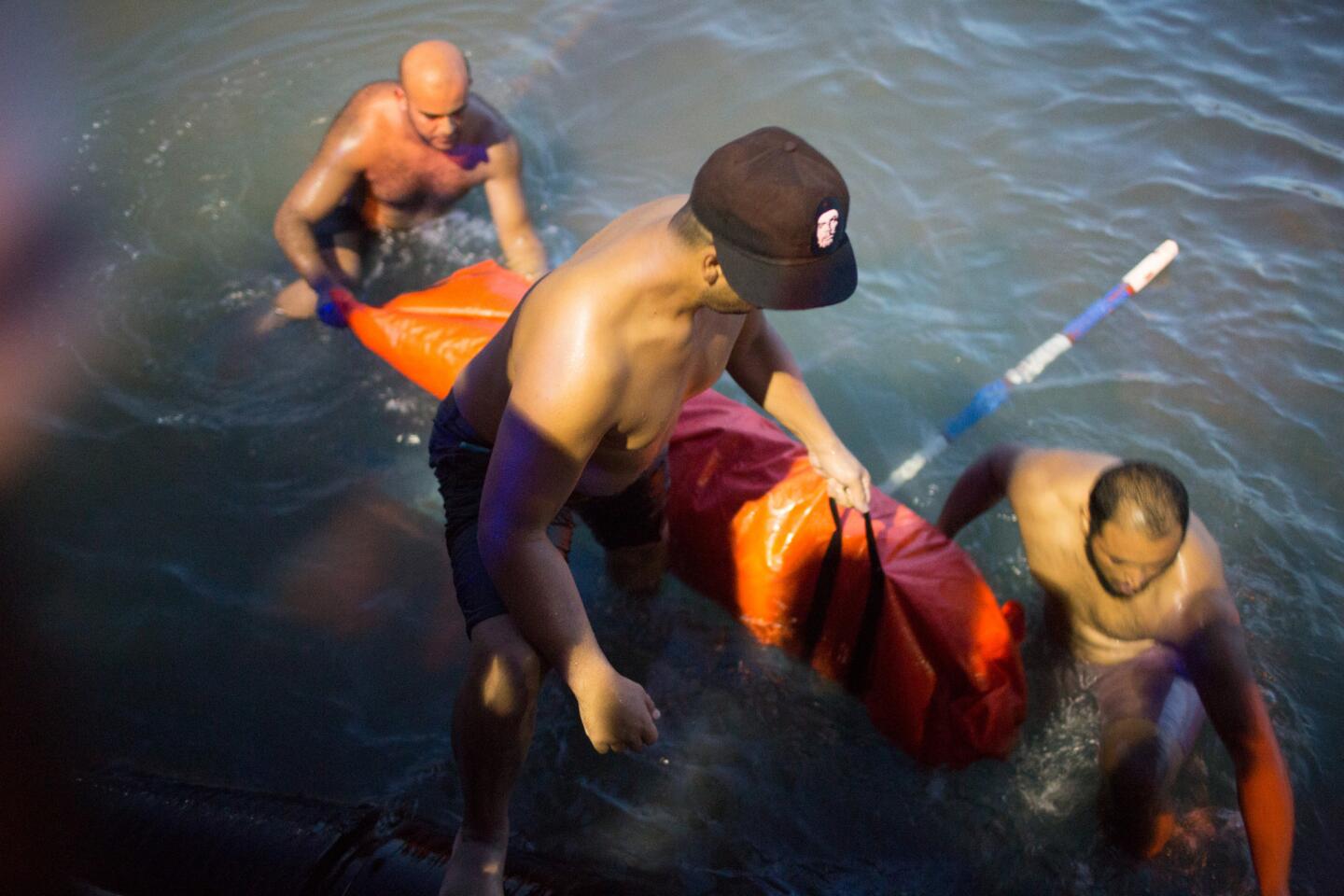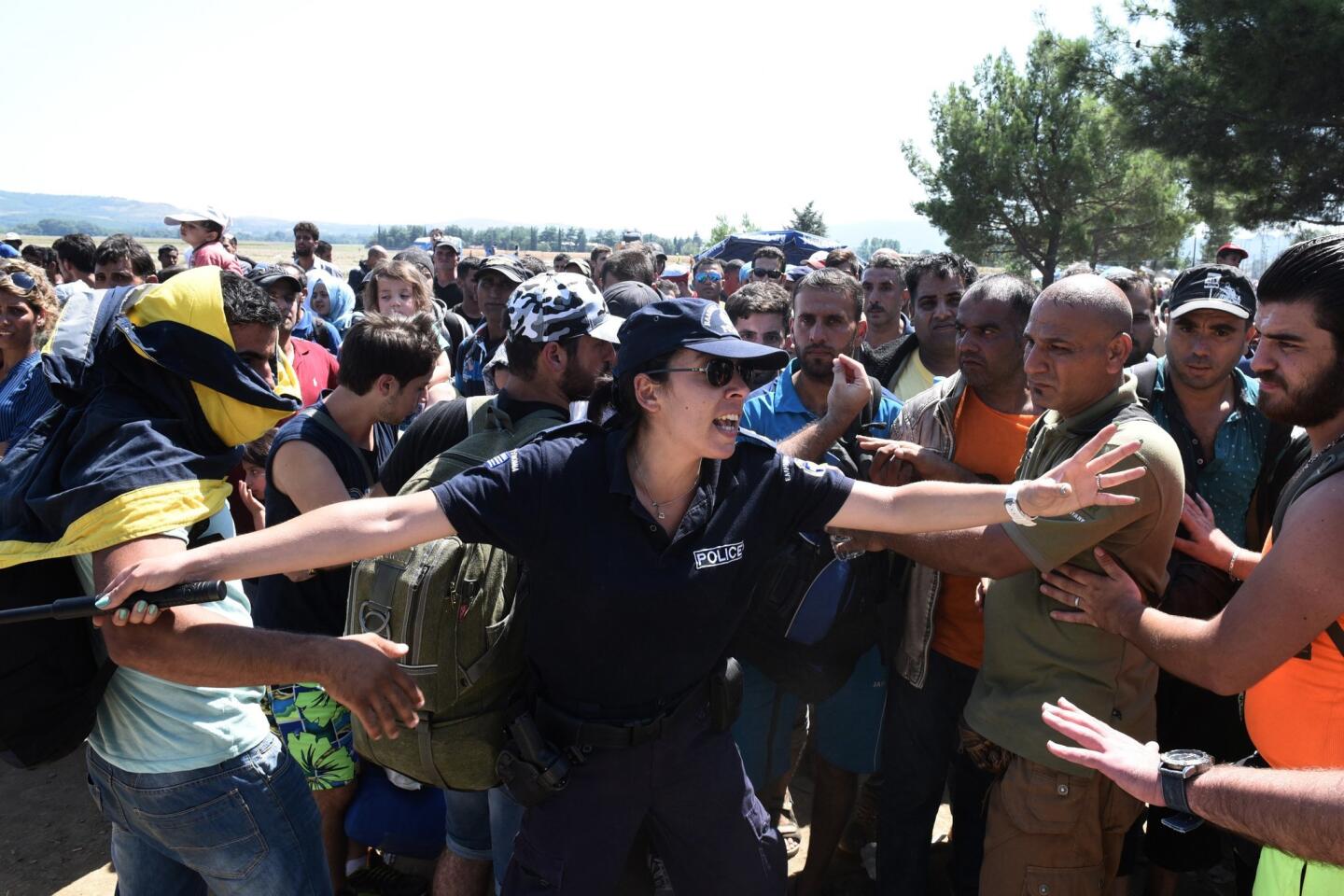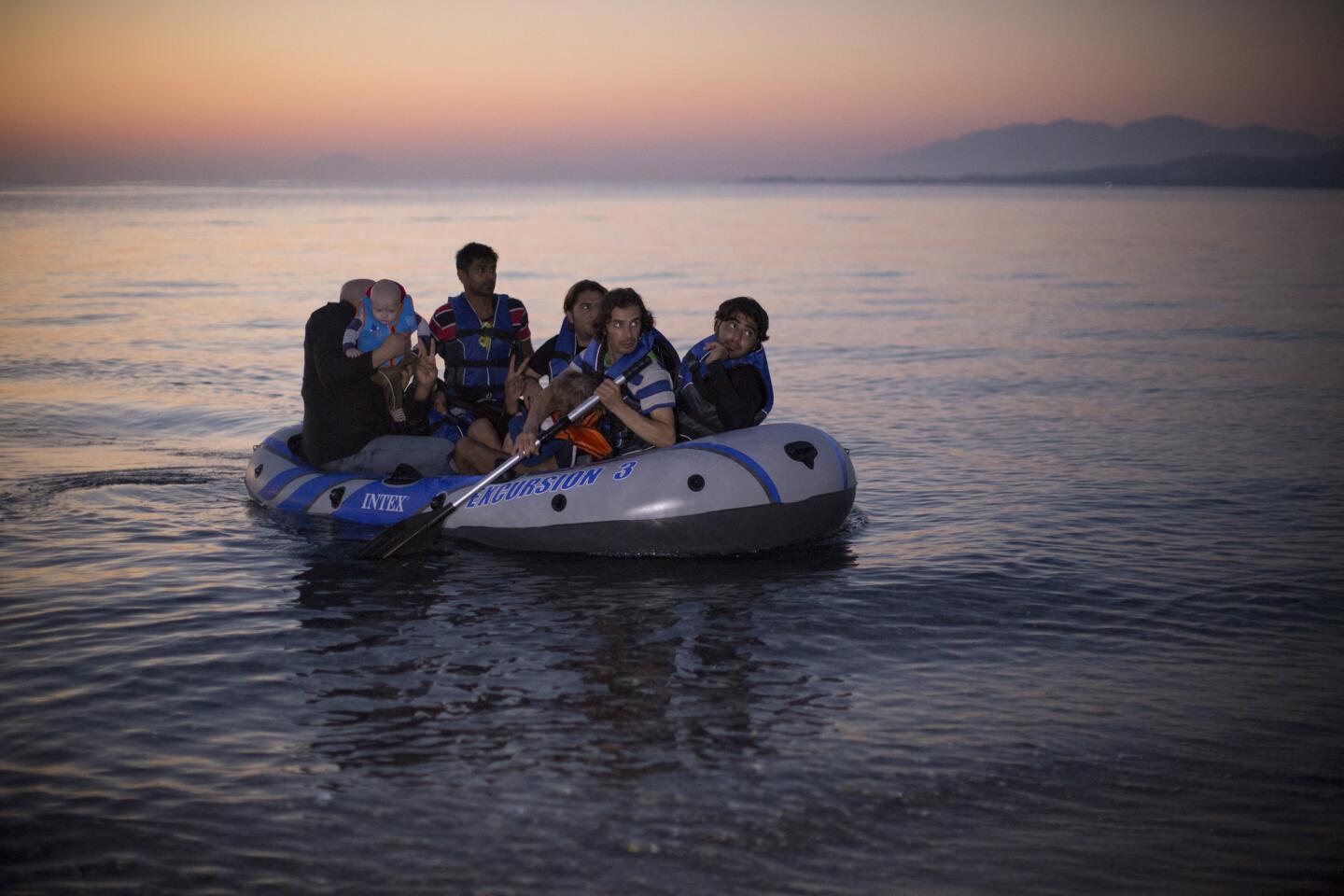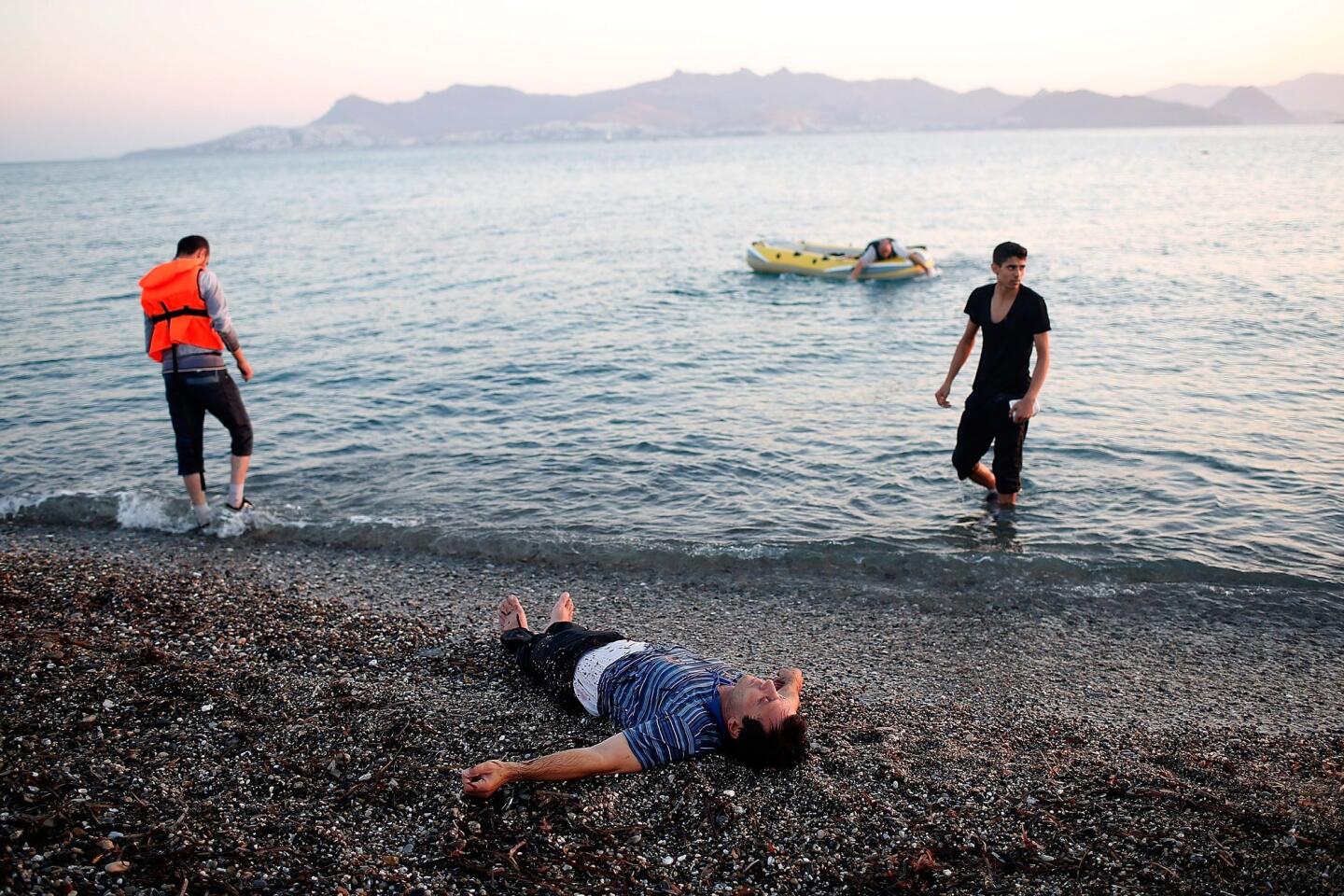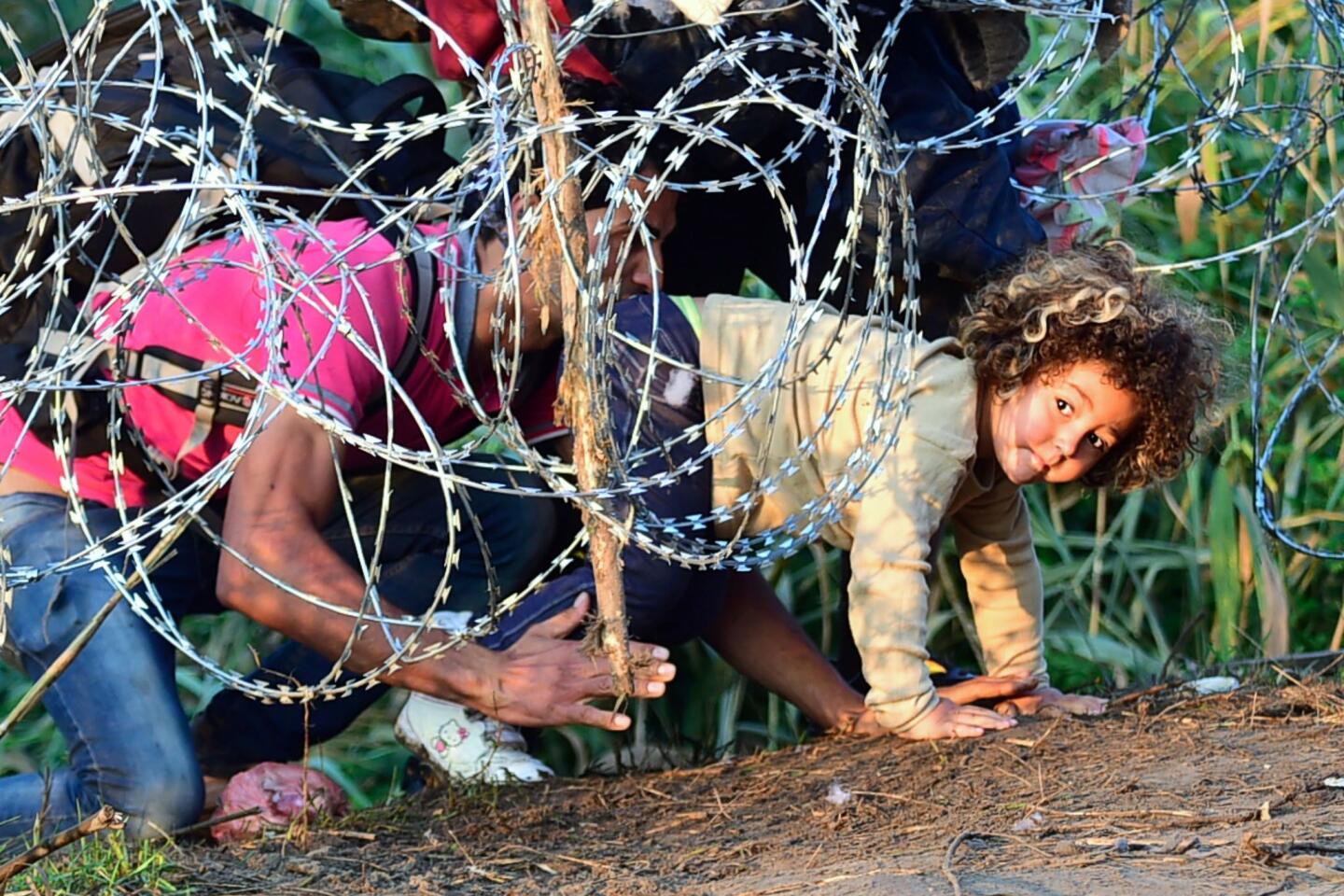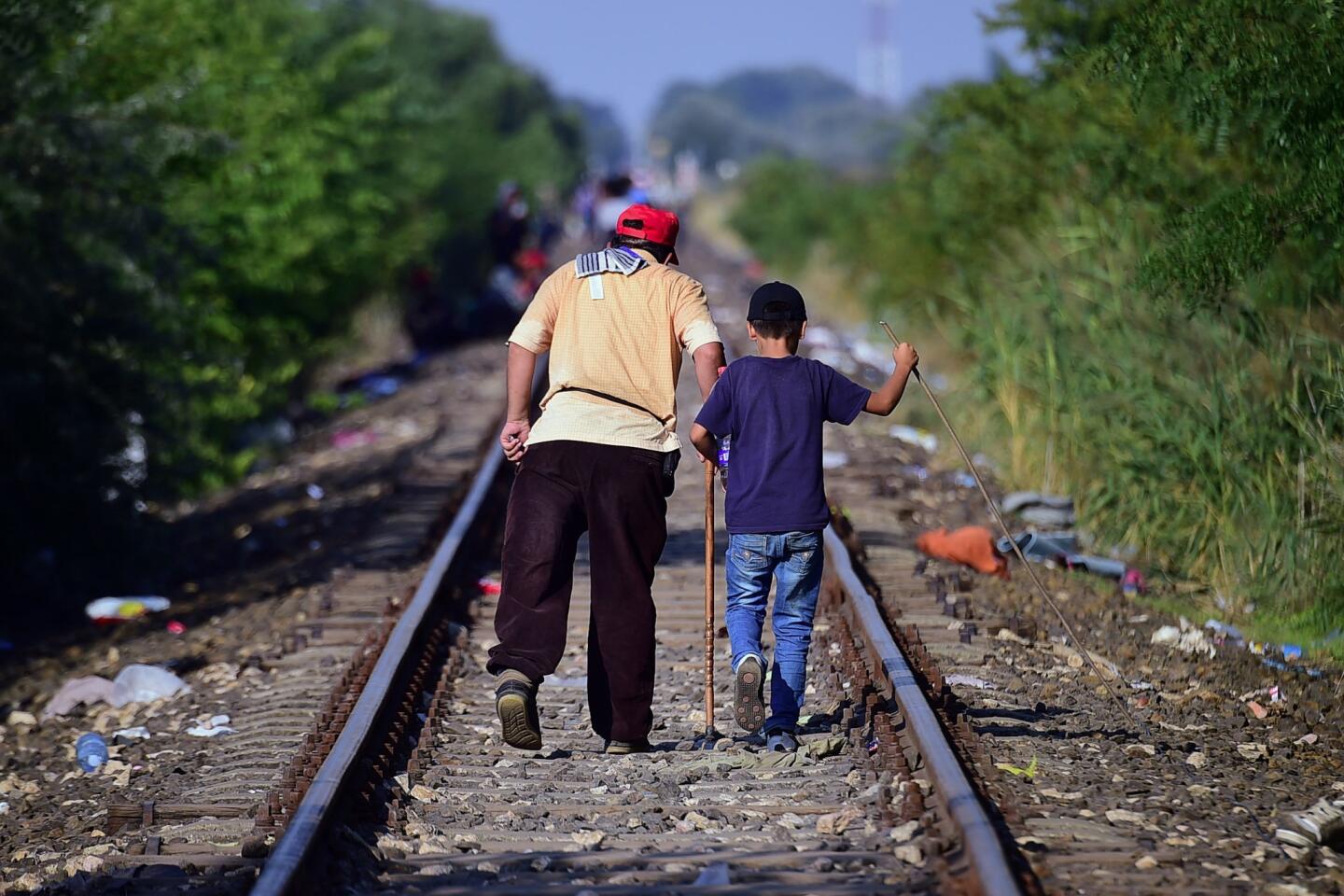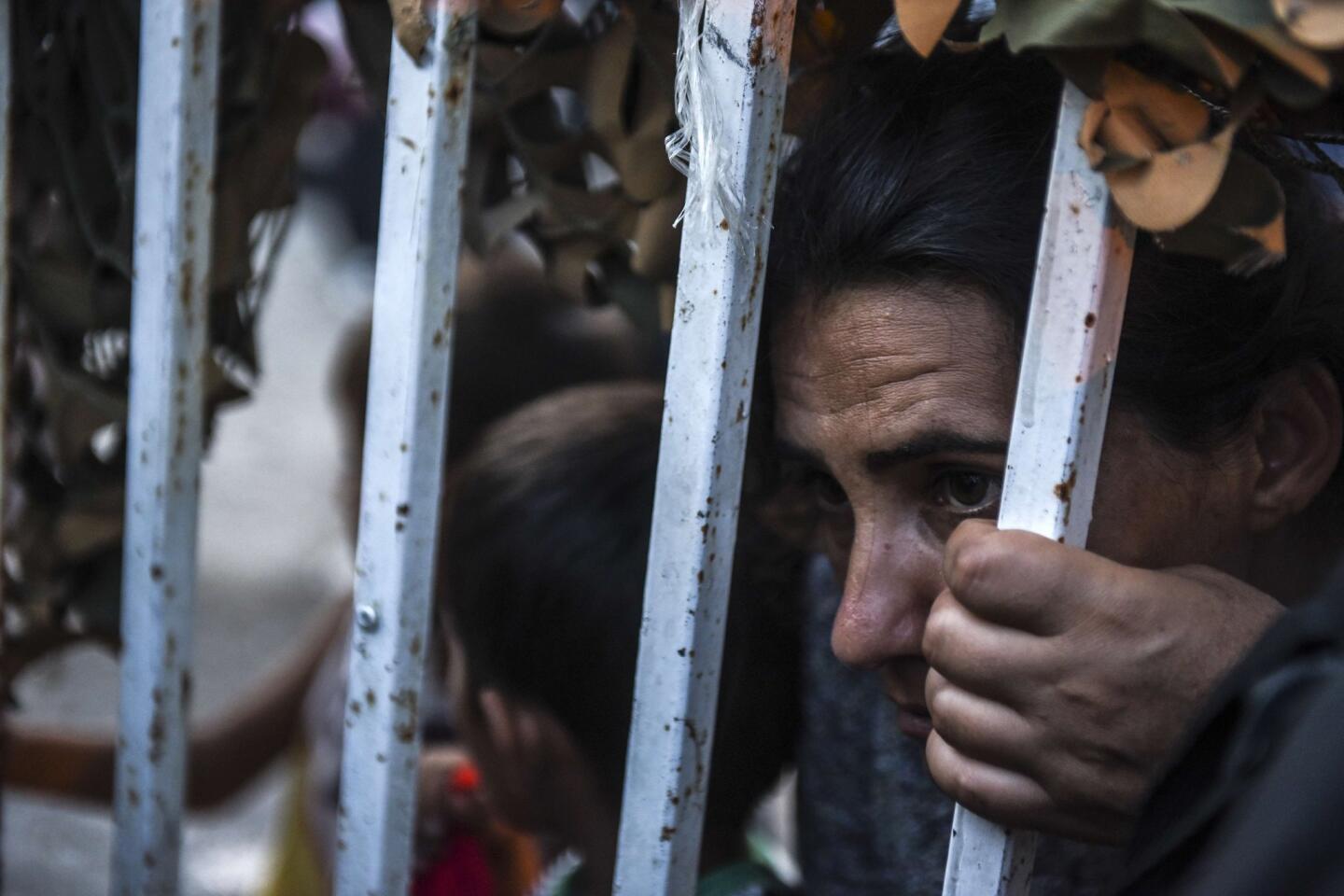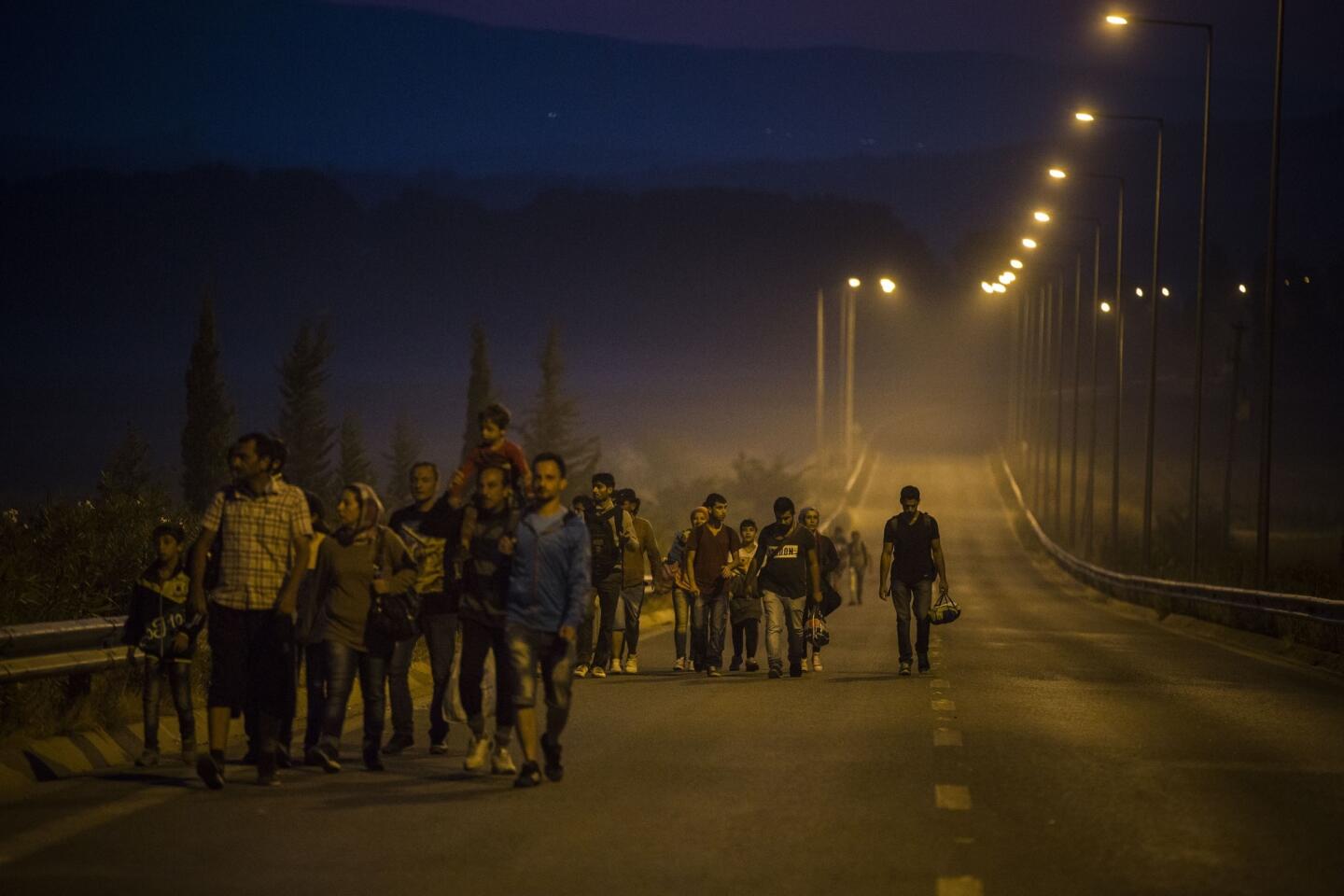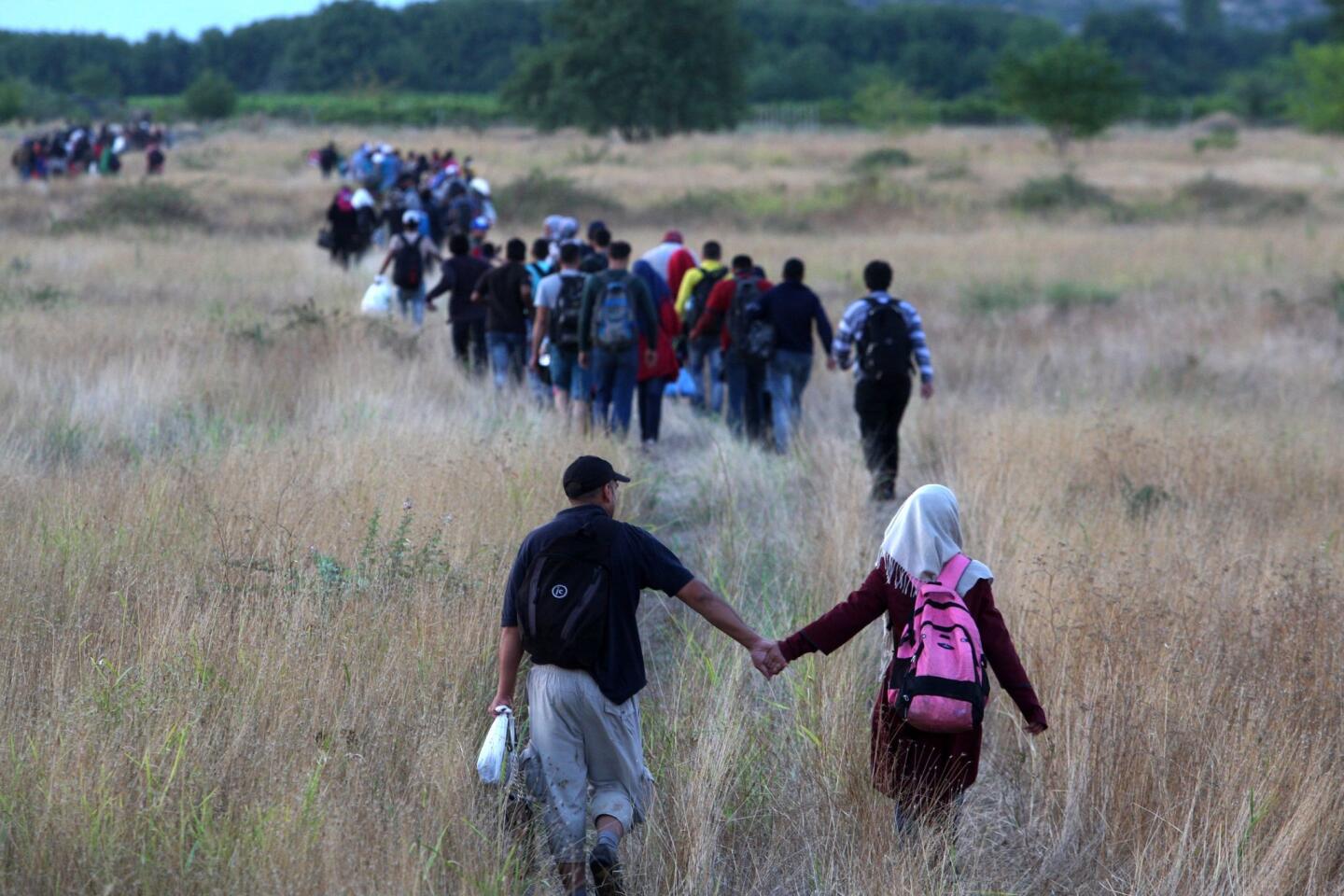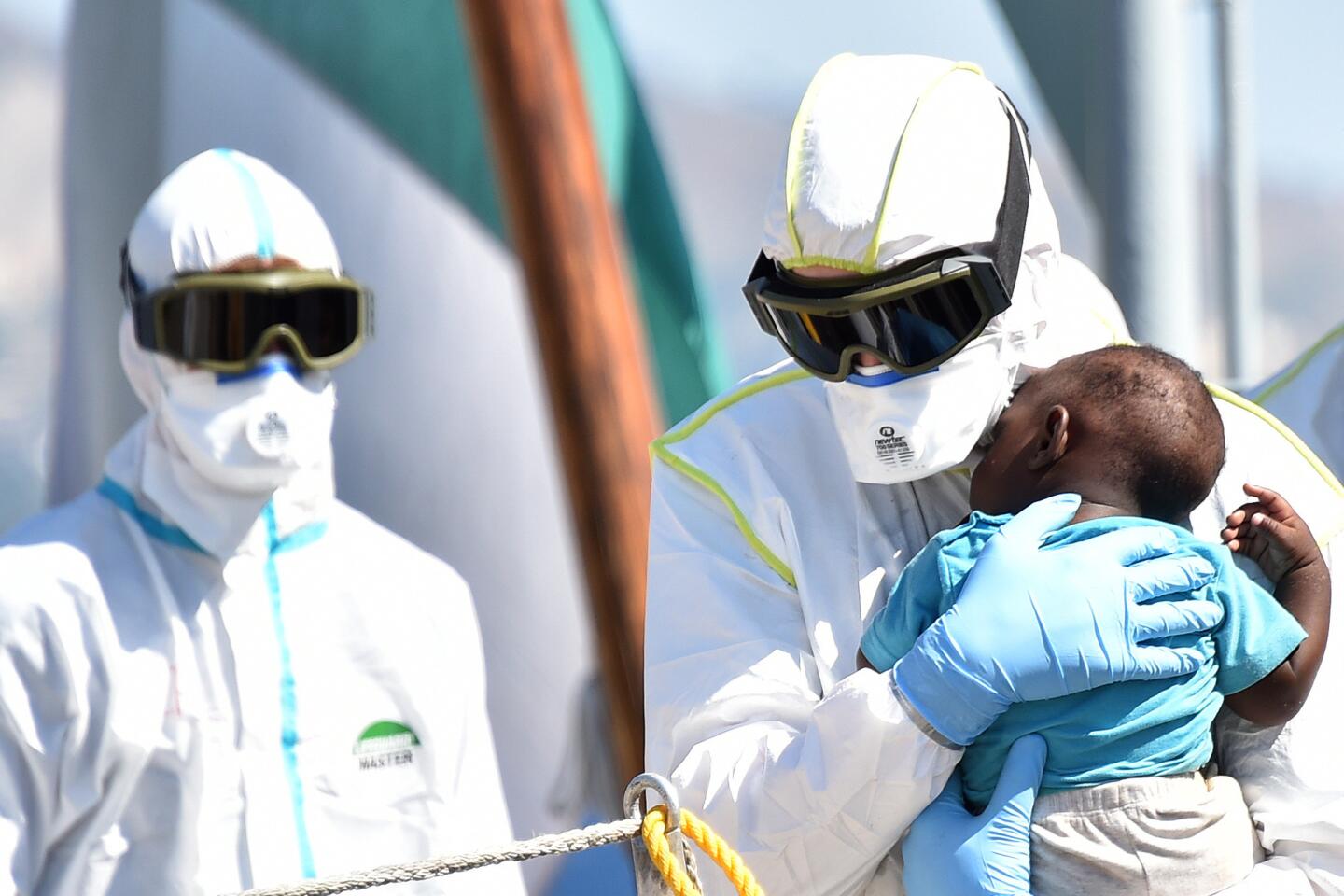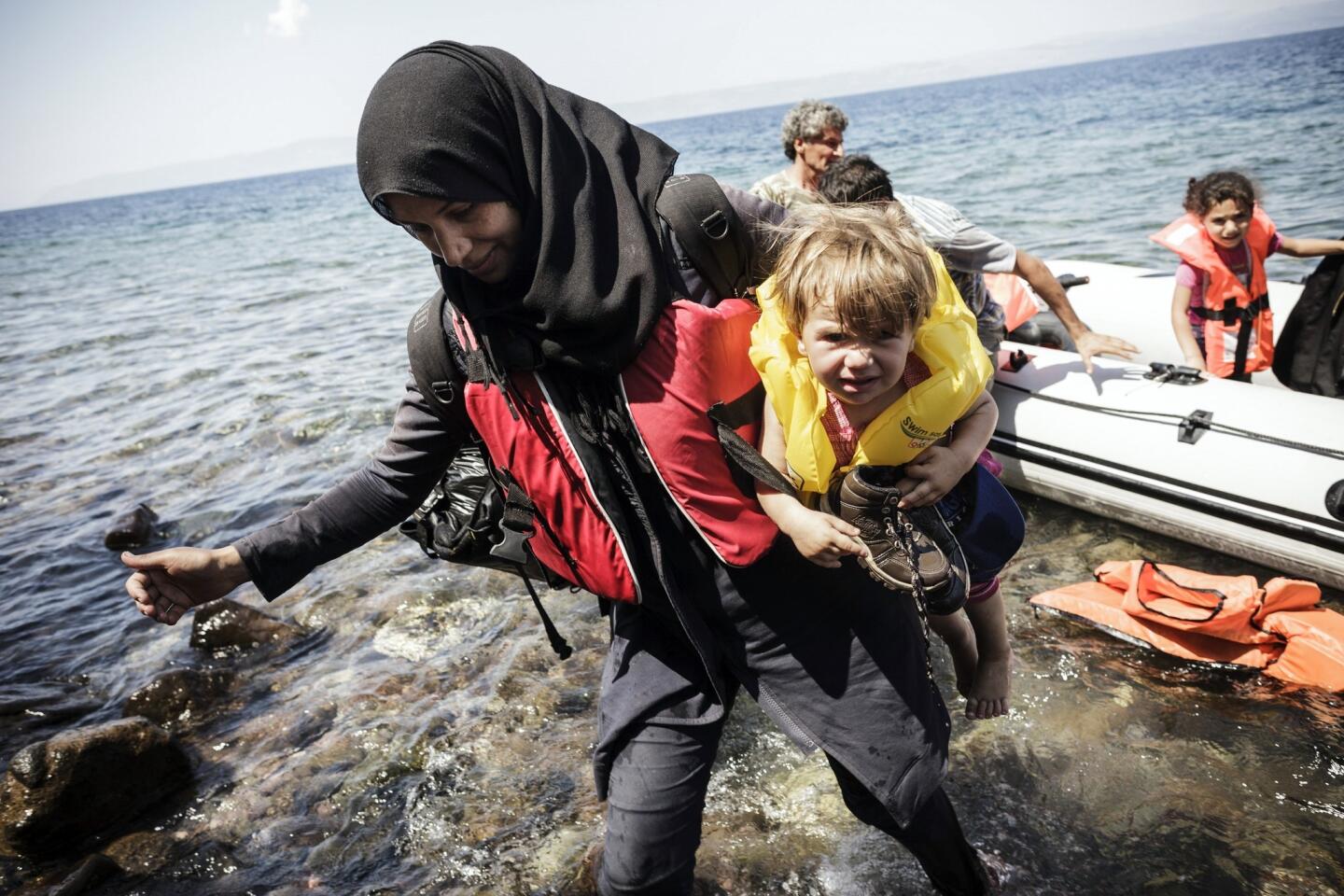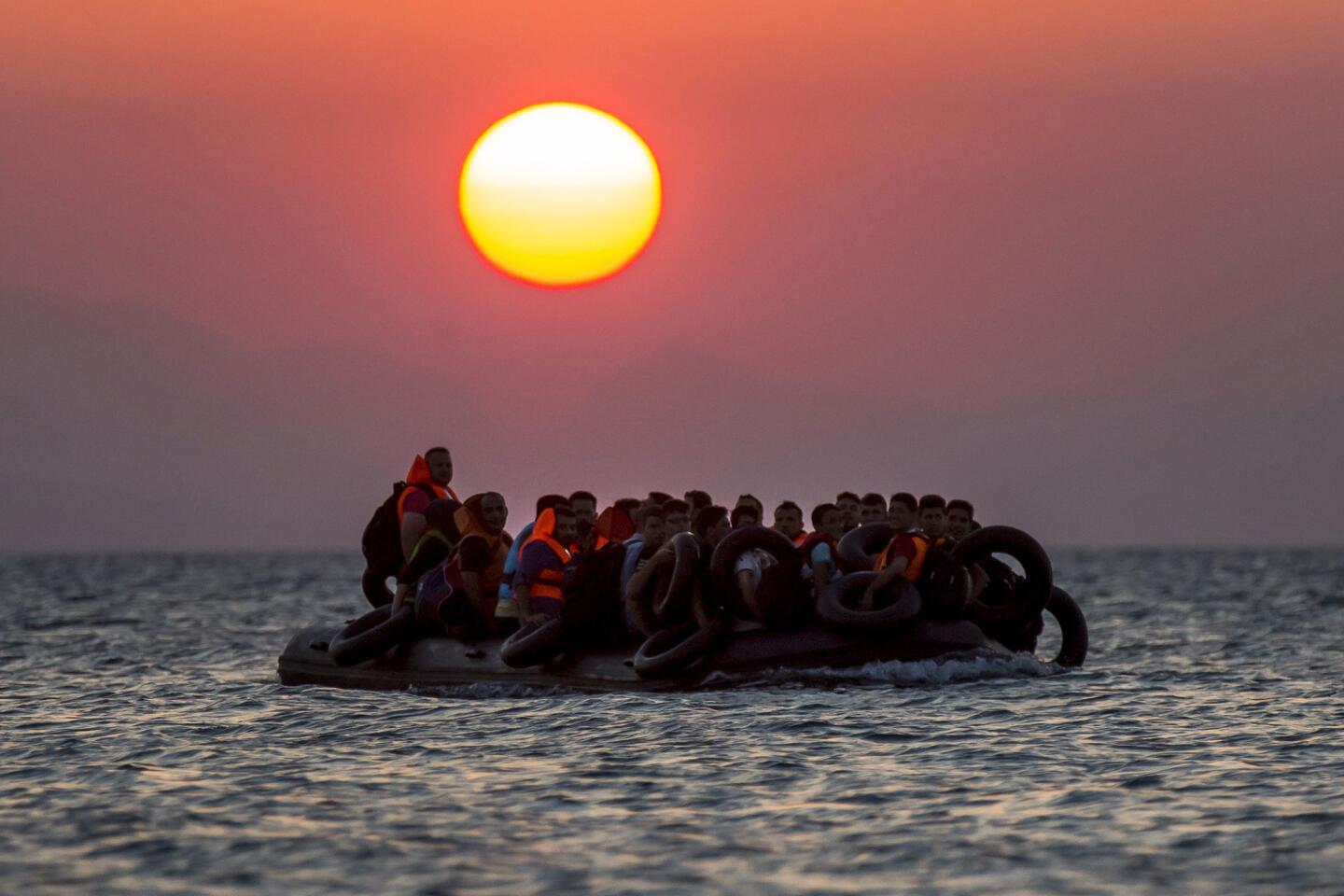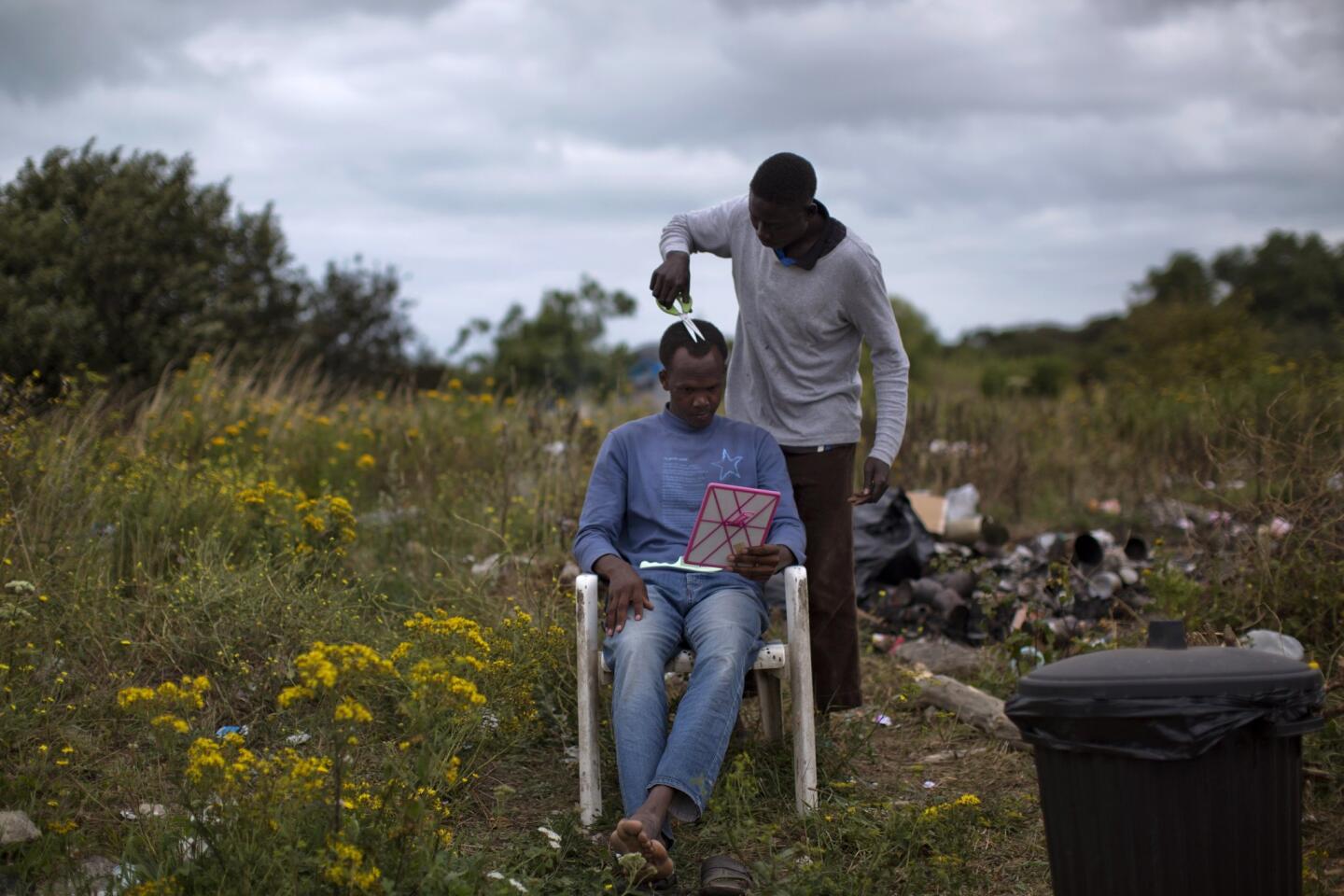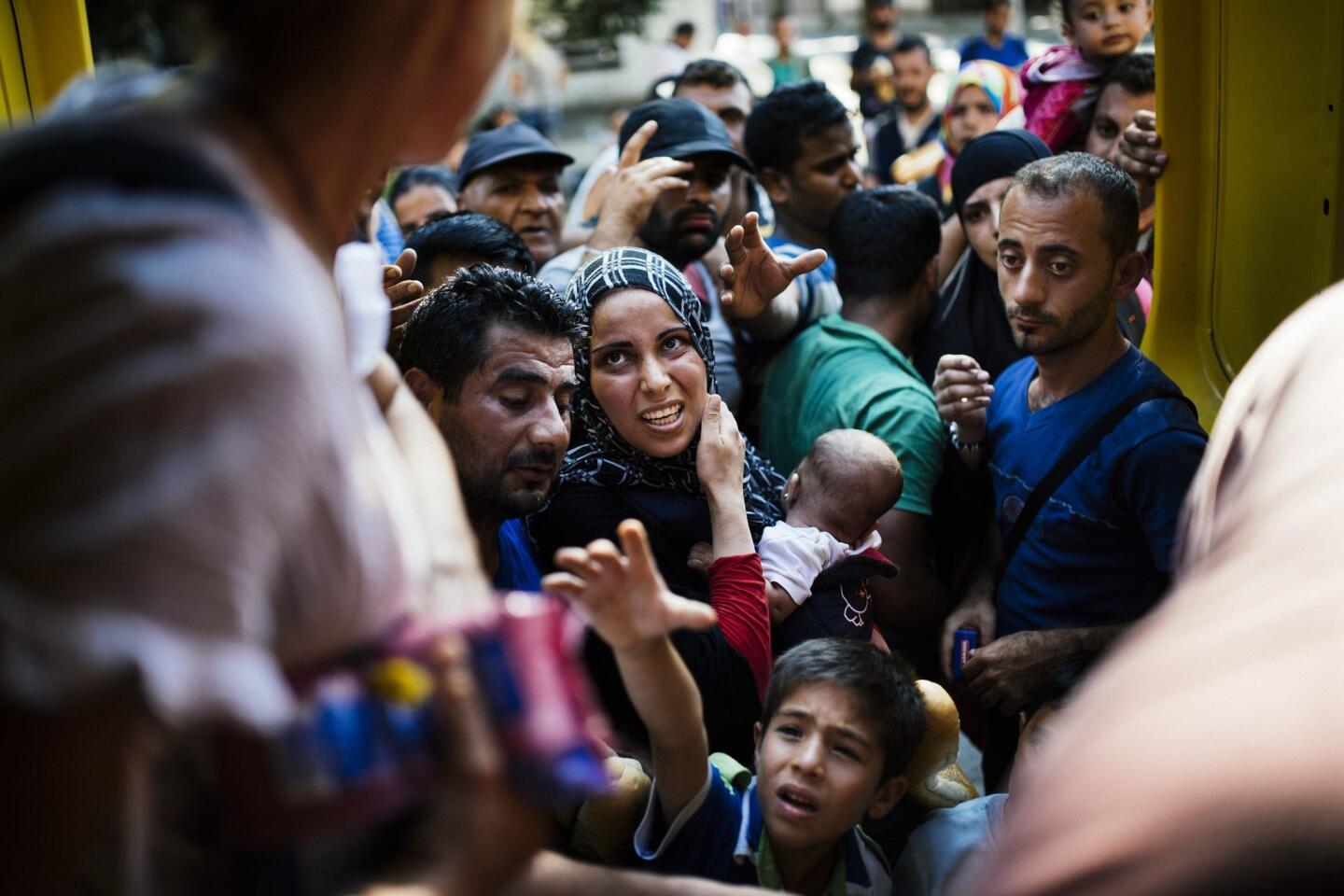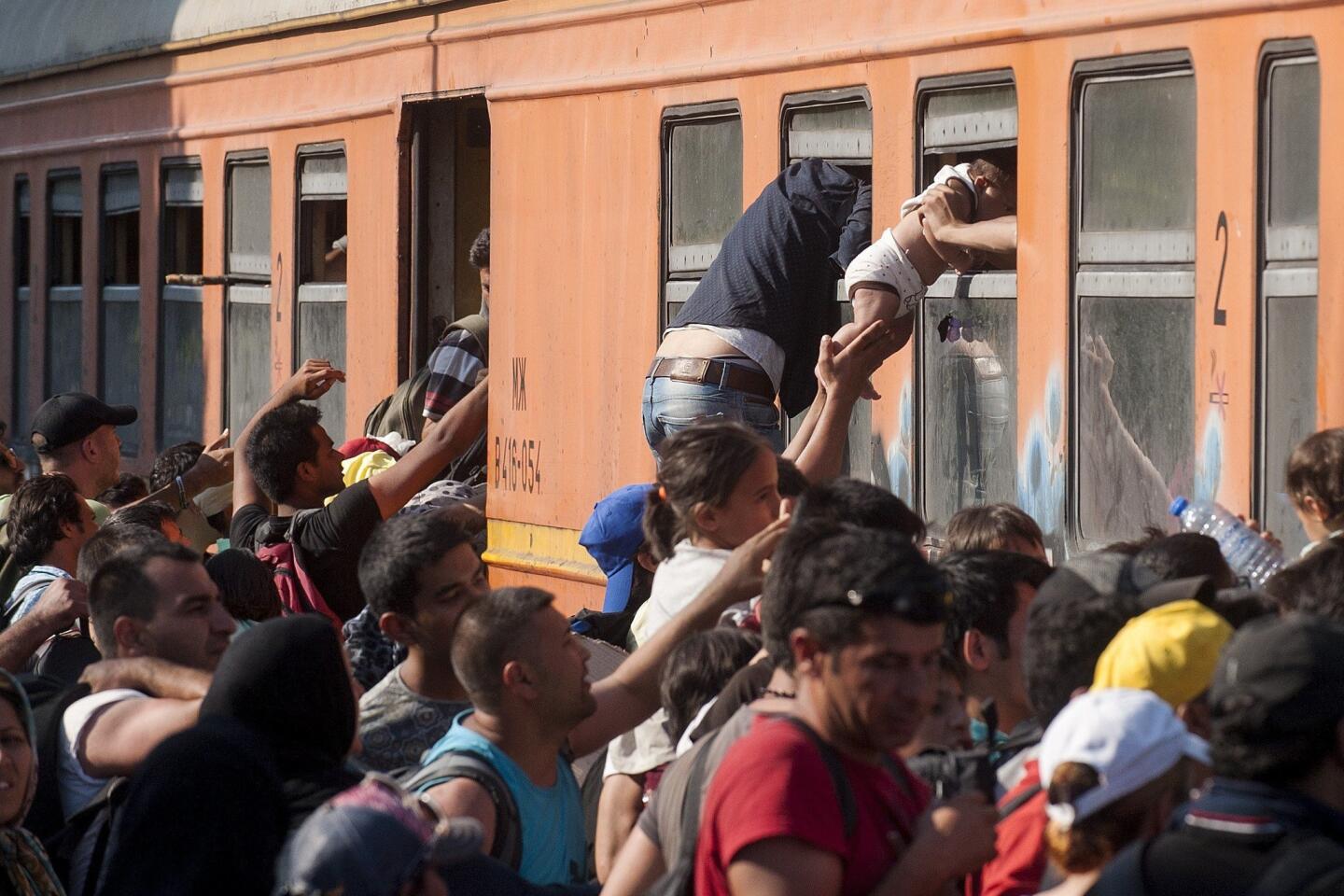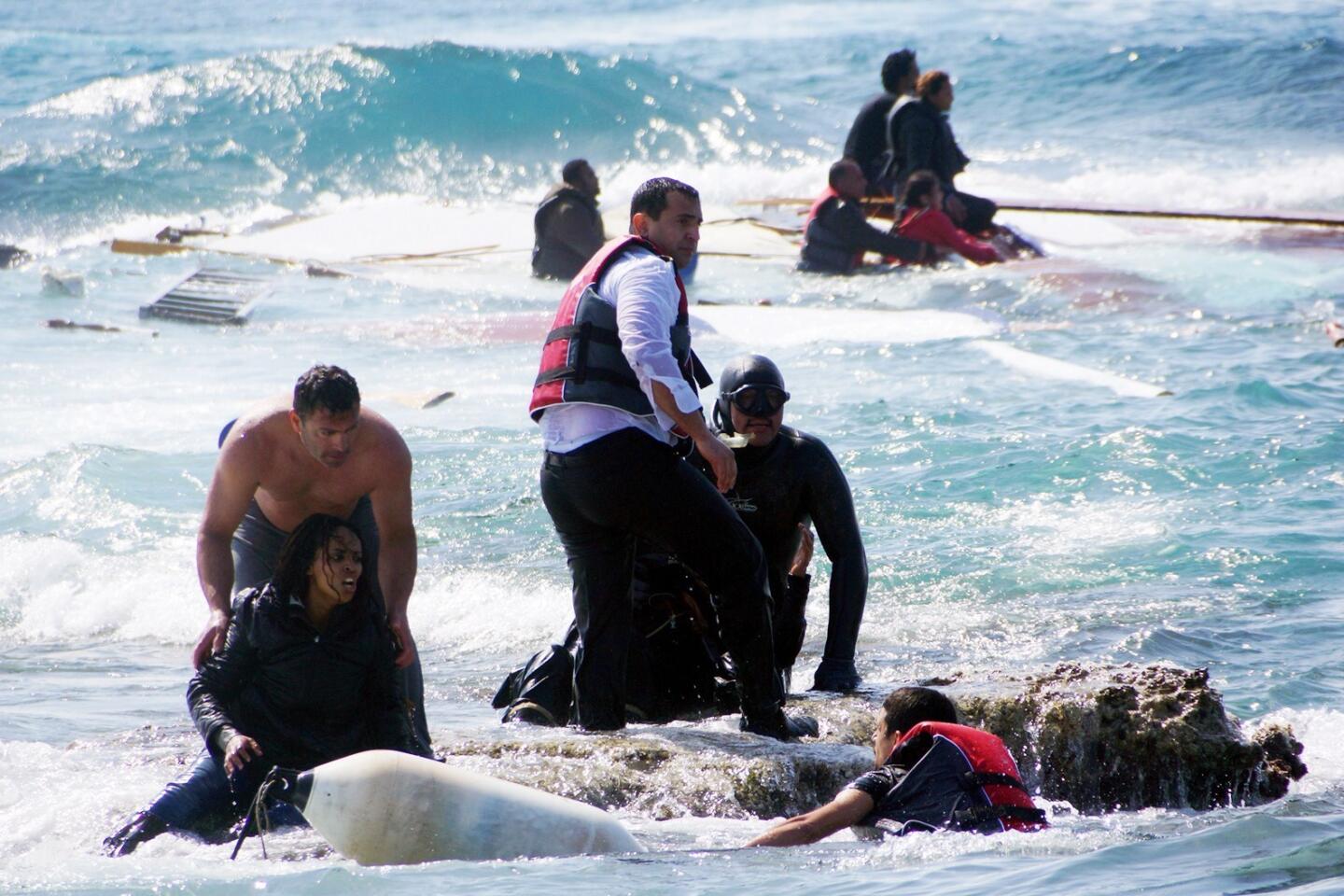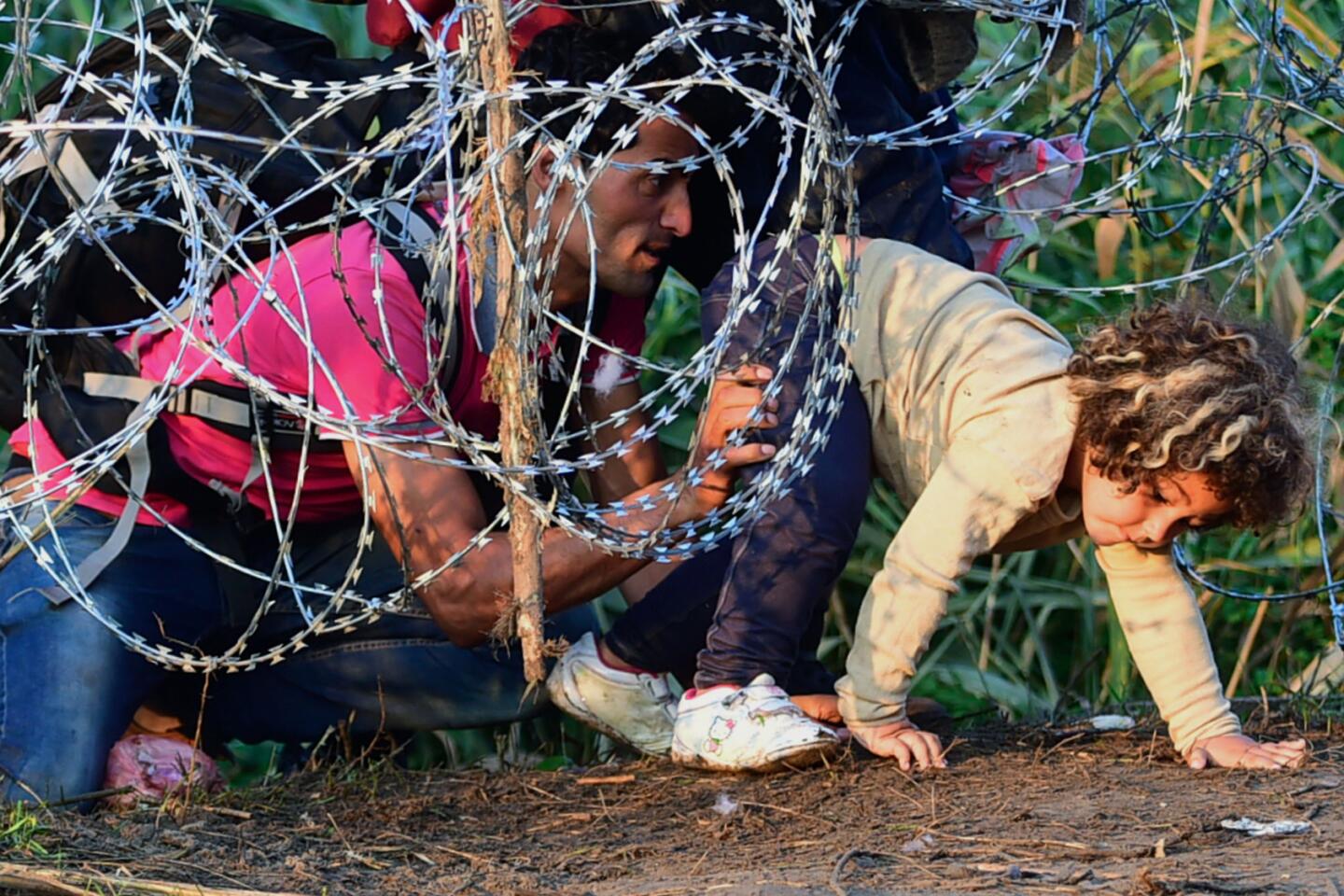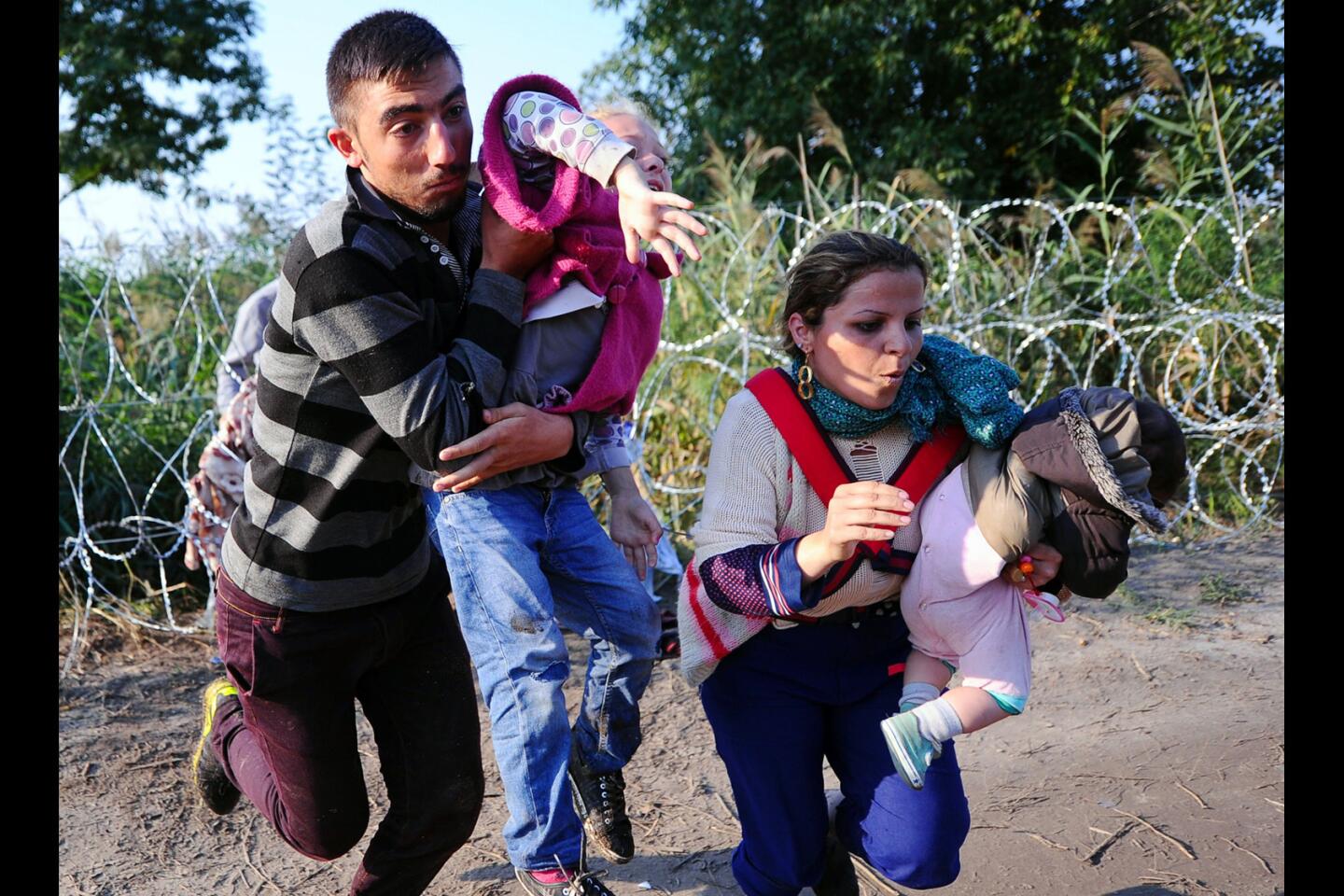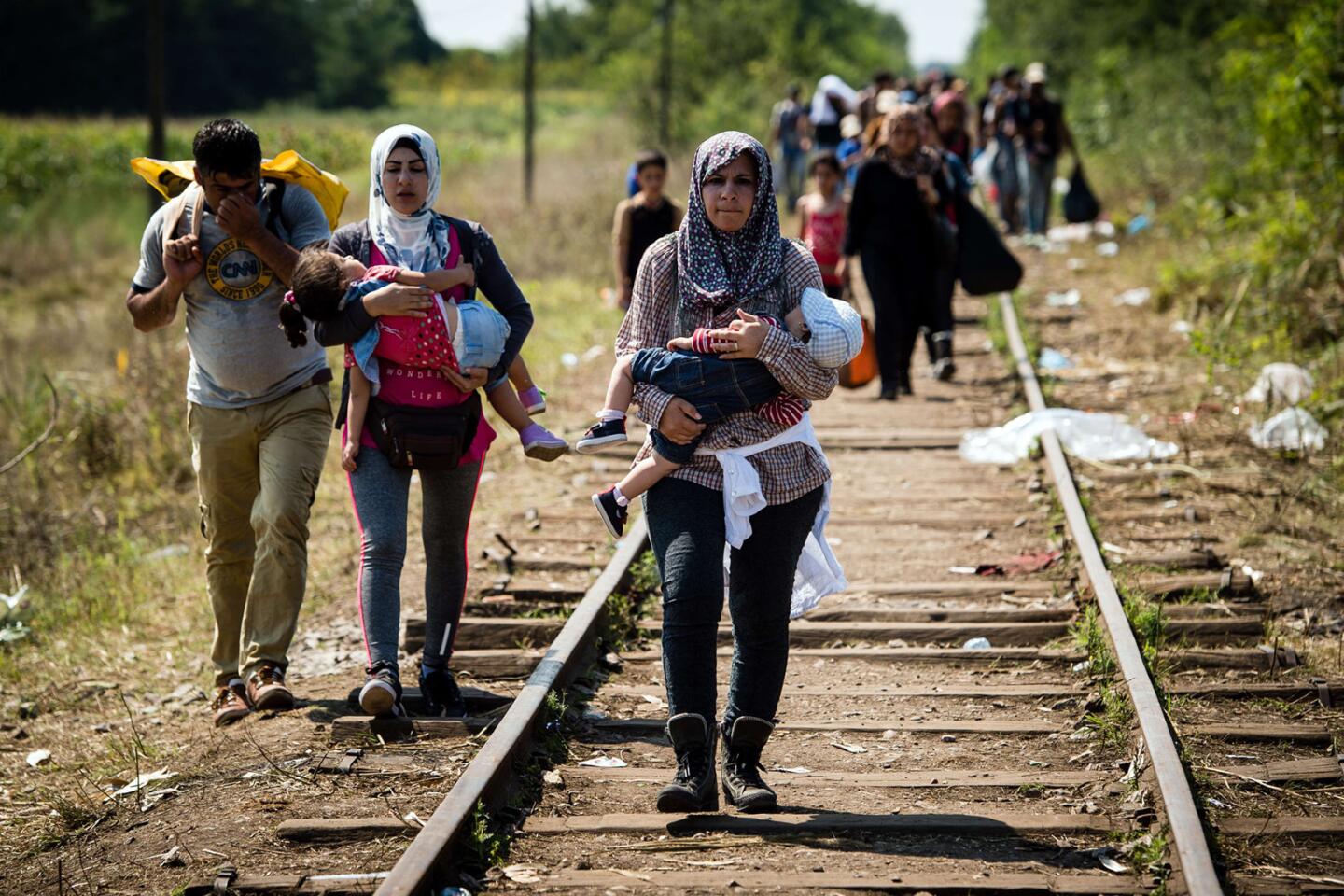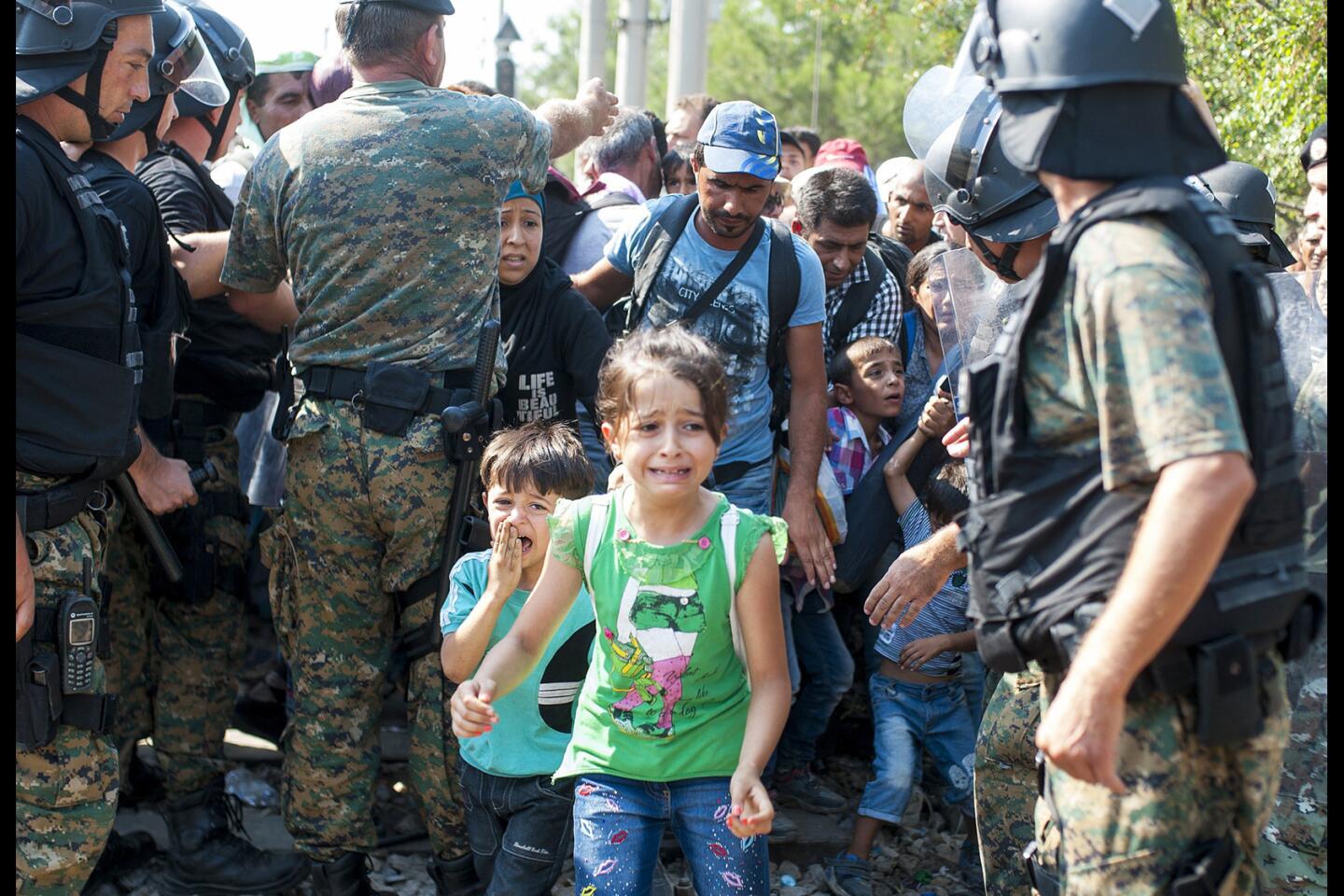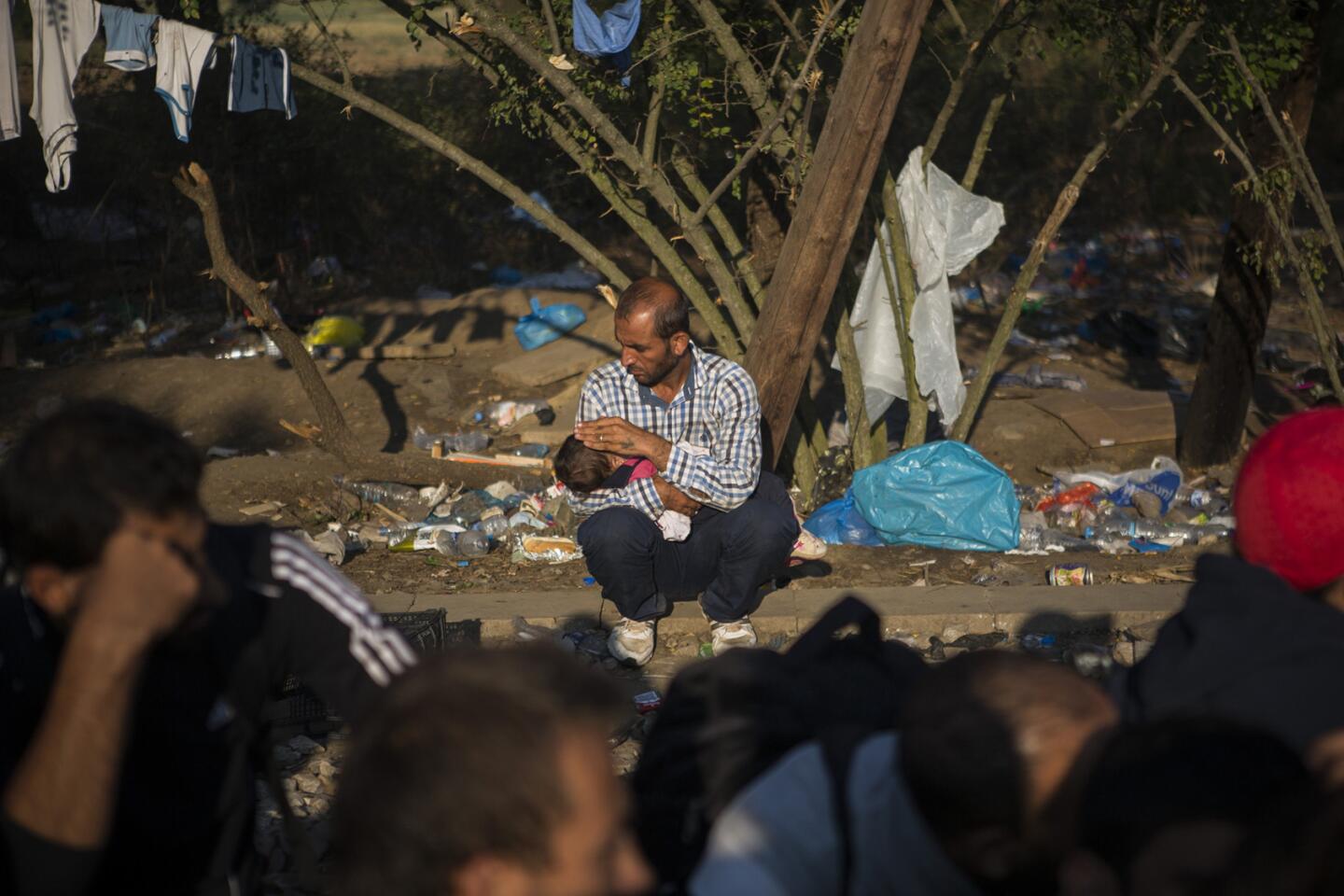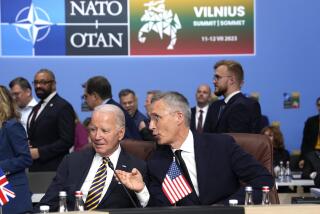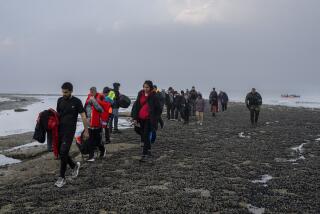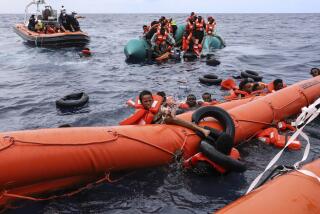It was one of the defining images of 2015: small boats crowded with migrants making a perilous bid to reach Europe.
More than 1 million people arrived by sea during the year, according to estimates by the United Nations refugee agency, one of the biggest migration waves to hit the continent since the end of World War II.
At least 3,770 died or went missing in the attempt, the International Organization for Migration said Thursday. But as the year drew to a close, the boats were still coming with nothing to suggest that the flood would be stanched anytime soon.
The crisis has exposed deep rifts among the European Union’s 28 members, which have struggled to respond amid acrimonious bickering and finger-pointing. Many have set up temporary border controls, threatening one of the bloc’s cherished achievements: the free movement of citizens across most of its internal borders.
Here is a look at what is driving the crisis and what the new year may hold for Europe’s migrants.
What lies behind the rise in the numbers?
The surge was driven by Syrians, many of whom have lost hope that the war that has torn apart their country will be brought to an end. They make up nearly half of the migrants who arrived in Europe in 2015, according to the latest estimates.
In nearby countries, to which more than 4 million refugees from Syria have fled, conditions are increasingly desperate. Few refugees are allowed to work legally in Lebanon, Jordan and Turkey, and humanitarian agencies say their appeals for more aid are not being met.
Other long-standing conflicts have also contributed to the chaotic influx in Europe, with Afghanistan accounting for about 21% of arrivals and Iraq 7%.
Join the conversation on Facebook >>
Around the world, nearly 60 million people have been forced to flee their homes because of war, conflict and persecution, the highest number ever recorded, according to the Office of the U.N. High Commissioner for Refugees.
Where are the migrants going?
The overwhelming majority of those trying to reach Europe ‚ÄĒ more than 844,000, the U.N. says ‚ÄĒ cross the Aegean Sea from Turkey to nearby Greek islands. But most don‚Äôt stay, preferring to move on to wealthier destinations to the north.
Germany has received nearly 1.1 million asylum seekers ‚ÄĒ more than any other EU nation. They include large numbers of Europeans arriving overland from the Balkans.
Some poorer European nations have accused Germany of fueling the crisis with its open-door policy and have tried to curb the influx by dispatching troops to their borders and throwing up miles of fences. As the migrants keep coming, even Germany and other wealthier countries, such as Sweden, have introduced border checks to regulate the entry of asylum seekers.
Although such controls are allowed in an emergency under European rules, they have been fiercely criticized by EU officials and human rights groups, which have called on the bloc to uphold its values of compassion and meet international obligations to provide sanctuary to those fleeing war and persecution.
However, many people in Eastern and Central Europe agree with Hungarian Prime Minister Viktor Orban that most of the migrants are seeking better economic opportunities rather than fleeing war, and believe that they, as Muslims, will undermine Europe’s Christian identity. Fear and hostility toward the migrants have spread since the discovery that at least two of the Islamic State gunmen who killed 130 people in Paris on Nov. 13 posed as refugees to travel from Syria to Europe.
Virginie Guiraudon, an immigration expert at the Center for European Studies at Paris’ Sciences Po university, said the crisis revealed a fundamental misunderstanding by major EU powers about the bloc’s newest members.
NEWSLETTER: Get the day’s top headlines from Times Editor Davan Maharaj >>
‚ÄúThey thought that these countries would remain tame and controllable and would just be happy that they were allowed in,‚ÄĚ she said. ‚ÄúThis ignores the fact that these countries also have domestic opinions, also have domestic party politics and their own agenda.‚ÄĚ
What is Europe doing to resolve the crisis?
In an attempt to ease the burden on frontline states such as Greece and Italy, Germany tried to persuade all EU members to accept a share of refugees. Those efforts largely failed. Just over 200 people have been relocated so far.
The focus has now shifted to finding ways to discourage the migrants from embarking on the dangerous journey to Europe ‚ÄĒ and to ensure that those who reach Europe are systematically registered and vetted.
1/90
Migrants arrive on the Greek island of Lesbos after crossing the Aegean Sea from Turkey. More than 218,000 migrants and refugees crossed the Mediterranean to Europe in October -- a monthly record and more than during the whole of 2014.
(Aris Messinis / AFP/Getty Images) 2/90
A body lies on a beach on the Greek island of Lesbos after boats transporting migrants sank while trying to cross the Aegean sea from Turkey. At least 90 people are reported to have drowned in attempts to cross the Aegean Sea in recent days.
(Aris Messinis / AFP/Getty Images) 3/90
Migrants start a journey on a dinghy to the Greek island of Chios from Cesme, Turkey. There has been a spike in the numbers of migrants setting out from Turkey for the European Union in search of better lives.
(Emre Tazegul / AFP/Getty Images) 4/90
Migrants walk to a first registration point of the German federal police after crossing from Austria into Germany in the small Bavarian village of Simbach.
(Christof Stache / AFP/Getty Images) 5/90
Migrants wait to cross into Austria from Sentilj, Slovenia. Austria‚Äôs interior minister reiterated the need for some kind of ‚Äúbarrier‚ÄĚ at its Slovenian border to control the record migrant influx, but eased off her call for an actual fence.
(Jure Makovec / AFP/Getty Images) 6/90
Migrants arrive on the Greek Lesbos island after crossing the Aegean Sea from Turkey.
(Aris Messinis / AFP/Getty Images) 7/90
Rescue workers on a jet ski assist migrants as their boat sinks off the Greek island of Lesbos after crossing from Turkey.
(Aris Messinis / AFP/Getty Images) 8/90
A Spanish lifeguard rescues a child as a boat with refugees and migrants sank on its way to the Greek island of Lesbos. At least 17 children are reported to have drowned recently when three boats sank en route from Turkey to Greece, officials said.
(Aris Messinis / AFP/Getty Images) 9/90
Men look out at the sea as a man’s body lies covered with a blue blanket on the Greek island of Lesbos after a boat with refugees and migrants sank while crossing the Aegean sea from Turkey.
(Aris Messinis / AFP/Getty Images) 10/90
A man plays with a child as migrants and refugees wait in a field on their way to a refugee camp after crossing the Croatian-Slovenian border near Rigonce, Slovenia.
(AFP/Getty Images) 11/90
Migrants arrive at Lesbos island after crossing the Aegean sea from Turkey. More than 218,000 migrants cross Mediterranean in October, a record monthly tally.
(Aris Messinis / AFP/Getty Images) 12/90
Migrants try to break through a cordon in a makeshift camp near the Austrian border in Sentilj, Slovenia. Thousands of people are trying to reach central and northern Europe via the Balkans but often have to wait for days in mud and rain at the Serbian, Croatian and Slovenian borders.
(Christian Bruna / Associated Press) 13/90
Migrants are attempting to break through a cordon in a makeshift camp near the Austrian - Slovenian border in Sentilj, Slovenia.
(Christian Bruna / Associated Press) 14/90
Policemen ride in front of migrants after they crossed from Croatia, in Dobova, near a border crossing between Croatia and Slovenia. Slovenia accused Croatia on Tuesday of sending thousands of migrants toward its borders ‚Äúwithout control,‚ÄĚ ignoring requests to contain the surge, and urged the rest of the European Union to get involved in solving the crisis.
(Darko Bandic / Associated Press) 15/90
Syrian and Afghan migrants warm themselves and dry their clothes around a fire after arriving on a dinghy from the Turkish coast to the northeastern Greek island of Lesbos.
(Muhammed Muheisen / Associated Press) 16/90
An exhausted man lays on a beach after his arrival on a dinghy from the Turkish coast to the northeastern Greek island of Lesbos.
(Santi Palacios / Associated Press) 17/90
Croatian police officers stand guard as migrants wait to enter Croatia from the Serbia-Croatia border, near the western Serbian village of Berkasovo. Long lines have formed on Croatia’s border with Serbia.
(ANDREJ ISAKOVIC / AFP/Getty Images) 18/90
Macedonian police officers control a crowd of migrants and refugees as they prepare to enter a camp after crossing the Greek border into Macedonia near Gevgelija. The European Union’s top migration official warned that a compromise deal to share out refugees in the bloc could flounder if the migrants themselves refuse to cooperate.
(ROBERT ATANASOVSKI / AFP/Getty Images) 19/90
A migrant man walks on train tracks after crossing the Macedonian-Greek border near the Macedonia town of Gevgelija.
(ROBERT ATANASOVSKI / AFP/Getty Images) 20/90
A family reacts shortly after arriving with other migrants on the Greek island of Lesbos, after crossing the Aegean sea from Turkey.
(DIMITAR DILKOFF / AFP/Getty Images) 21/90
Members of the Libyan Red Crescent wash their hands at the shore after they put bodies in the bags as they were found washed up in the eastern shore of Tripoli, Libya. A spokesman for the Red Crescent said the bodies of at least 95 migrants have been found washed ashore over the past five days.
(Mohamed Ben Khalifa / Associated Press) 22/90
Migrants walk through the countryside after crossing the Hungarian-Croatian border near the Hungarian village of Zakany to continue their trip to the north. Croatia and Hungary have traded barbs on a national level, each pointing the finger at the other over their responses to Europe’s escalating migrant crisis.
(ATTILA KISBENEDEK / AFP/Getty Images) 23/90
Eight-month old twins from Syria lie on Eftalou beach, west of the port of Mytilene, on the Greek island of Lesbos after their parents crossed the Aegean sea from Turkey. Europe’s migrant crisis took centre-stage at the UN human rights council, as European states said the need to end the conflict in Syria was at an all-time high.
(IAKOVOS HATZISTAVROU / AFP/Getty Images) 24/90
Migrants try to push a police barricade after they were blocked by Turkish riot police while walking towards Edirne in Istanbul. A new march by migrants trying to reach Europe overland from Turkey was blocked by police outside Istanbul.
(OZAN KOSE / AFP/Getty Images) 25/90
Migrants, including many childern, wait behind a line of soldiers to board buses to take them further into Austria in Nickelsdorf at the Austrian-Hungarian border.
(VLADIMIR SIMICEK / AFP/Getty Images) 26/90
Alameddin, a 13-year-old Syrian boy plays the violin in front of a police barricade as he march with other migrants on a highway near Edirne, on their way to the border between Turkey and Greece. Several hundred migrants who were blocked by police in northwest Turkey from crossing a land border to Greece this week drew a few kilometres closer to their destination.
(BULENT KILIC / AFP/Getty Images) 27/90
Migrants are reflected in a puddle as they are waiting for a permission to move towards the train station at a refugee camp near Gevgelija, The Former Yugoslav Republic of Macedonia.
(NAKE BATEV / EPA) 28/90
A Greek policeman gives instructions as migrants approach the island of Lesbos.
(Petros Giannakouris / Associated Press) 29/90
Migrants whose boat stalled at sea while crossing from Turkey to Greece swim to the shore of the island of Lesbos.
(Petros Giannakouris / Associated Press) 30/90
A man carries a child as he and other migrants make their way through the countryside after they crossed the boarder near the village of Zakany, Hungary.
(Attila Kisbenedek / AFPGetty Images) 31/90
Migrants and refugees walk along barbed wire as they cross the Greek border near Gevgelija, Macedonia.
(Nikolay Doychinov / AFP/Getty Images) 32/90
Migrants board a train after crossing the boarder near the village of Zakany, Hungary, to continue their trip to Gemany.
(Attila Kisbenedek / AFP/Getty Images) 33/90
Migrants break through the cordon of Macedonian police forces near the town of Gevgelija, Macedonia. The Gevgelija-Presevo journey is just a part of the journey that the migrants take from Turkey, across Greece, Macedonia and Serbia to Hungary, the gateway to the European Union.
(NAKE BATEV / EPA) 34/90
A man holds a child above the crowds as migrants and refugees wait to board a train after crossing the Macedonian-Greek border near Gevgelija, Macedonia.
(ROBERT ATANASOVSKI / AFP/Getty Images) 35/90
A child walks along a railway track at the Hungary-Serbia border, near the town of Horgos, Serbia.
(ARMEND NIMANI / AFP/Getty Images) 36/90
Migrants arrive at the border line between Serbia and Hungary near Roszke, southern Hungary.
(Matthias Schrader / Associated Press) 37/90
Migrants walk after crossing the border between Macedonia and Greece, near the town of Gevgelija, Macedonia.
(NAKE BATEV / EPA) 38/90
Supplies are set up in readiness for the arrival of migrants in Frankfurt’s main rail station in Germany.
(FRANK RUMPENHORST / EPA) 39/90
A local resident makes signals to migrants as they arrive at the coast of Mytilini, Lesvos island, on a dinghy after crossing from Turkey.
(ORESTIS PANAGIOTOU / EPA) 40/90
Refugees from different countries are accompanied by police officers as they walk on railway tracks near Szeged, Hungary. Hungary’s border with Serbia has become a major crossing point into the European Union, with more than 160,000 entering Hungary so far this year.
(Attila Kisbenedek / AFP/Getty Images) 41/90
Life vests left on the shore by incoming refugees on the Greek island of Lesbos.
(Angelos Tzortzinis / AFP/Getty Images) 42/90
Migrants try to stay on their sinking dinghy off the coast of the Lesbos island in Greece. A Greek passenger ferry sent its lifeboats to rescue 61 migrants whose boat was at risk of sinking off the island of Lesbos, port police said.
(Panayiotis Tzamarospanayiotis Tzamaros / AFP/Getty Images) 43/90
A migrant tries to recover after clashes with the police during a protest at the Lesvos Port in Greece, as migrants demand to be transferred immediately to Athens.
(Angelos Tzortzinis / AFP/Getty Images) 44/90
A boy screams as migrants try to get food and water on the Greek-Macedonian border near the village of Idomeni.
(Louisa Gouliamaki / AFP/Getty Images) 45/90
Syrian refugees and migrants walk in a field to cross the border between Greece and Macedonia.
(Aris Messinis / AFP/Getty Images) 46/90
Refugees walk from the main train station after arriving in Dortmund, Germany, Sept. 6, 2015.
(Martin Meissner / AP) 47/90
Migrants wave as they arrive at the main railway station in Munich, Germany, on Sept. 6.
(Christof Stache / AFP/Getty Images) 48/90
Migrants arrive at the Westbahnhof station in Vienna, Austria, on Sunday.
(Ronald Zak / Associated Press) 49/90
A man holds a sign welcoming refugees in three languages at the main train station in Frankfurt, central Germany.
(Frank Rumpenhorst / Associated Press) 50/90
A migrant girl holds a sign expressing her love to Germany as she arrives at the train station in Saalfeld, central Germany, on Saturday.
(Jens Meyer / Associated Press) 51/90
Migrant children wait for the departure of a train at a Budapest, Hungary, railway station.
(Attila Kisbenedek / AFP/Getty Images) 52/90
A young migrant woman carries a baby as she leaves Budapest, Hungary, on a public bus to the border village of Hegyeshalom early Saturday.
(Attila Kisbenedek / AFP/Getty Images) 53/90
A young migrant stands in a bus upon arrival in the village of Nickelsdorf at the Hungarian-Austrian border Saturday.
(Joe Klamar / AFP/Getty Images) 54/90
Migrants waiting outside the Keleti railway station in Budapest, Hungary, hoping to travel to Western Europe protest after the station was closed by police.
(Tamas Kovacs / EPA) 55/90
Migrants protest in front of the Keleti railway station in Budapest, Hungary. The refugees arrived in Budapest via the so-called Balkan route, across Turkey, the Aegean Sea and Greece, Macedonia and Serbia.
(Tamas Kovacs / EPA) 56/90
Migrants crowd the platforms at the Keleti railway station in Budapest before it was closed by police.
(Attila Kisbenedek / AFP/Getty Images) 57/90
A fight breaks out between migrants among a massive crowd waiting to board trains at the Keleti railway station in Budapest, Hungary.
(Attila Kisbenedek / AFP/Getty Images) 58/90
Migrants, including children, protest at the Keleti railway station in Budapest.
(Attila Kisbenedek / AFP/Getty Images) 59/90
Migrants protest at the Keleti railway station in Budapest, Hungary, after it was closed by police.
(Tamas Kovacs / Associated Press) 60/90
A German police officer lets a migrant boy play with his cap as the child waits with other migrants for a bus after their arrival at the main train station in Munich. Hundreds of migrants arrived in Germany overnight and into Tuesday morning from Hungary and Austria.
(Christof Stache / AFP/Getty Images) 61/90
Rescuers collect the body of a migrant after a boat sank off the coast of Libya. Up to 200 people were feared dead in the latest capsizing on Aug. 27, 2015.
(Mohamed Ben Khalifa / Associated Press) 62/90
Coffins with some of the 71 migrants whose bodies were found in a truck abandoned on an Austrian highway are unloaded at a forensics institute in Vienna.
(Dieter Nagl / AFP/Getty Images) 63/90
A Greek police officer tries to control the crowd as migrants wait in the border town of Idomeni to be allowed to cross into Macedonia.
(Giannis Papanikos / Associated Press) 64/90
A migrant who had just crossed the border from Serbia into Hungary drinks water given to him by a friend as he waits for buses to take them to a nearby reception center.
(Matt Cardy / Getty Images) 65/90
Migrant families from Syria arrive in an inflatable dinghy on the Greek island of Kos after crossing a three-mile stretch of the Aegean Sea from Turkey.
(Dan Kitwood / Getty Images) 66/90
Overcome with exhaustion after swimming the last 50 yards, a migrant from Syria lies on a beach on the Greek island of Kos after crossing a three-mile stretch of the Aegean Sea in a small boat from Turkey.
(Win McNamee / Getty Images) 67/90
Migrants crawl under a razor-wire fence at the Hungarian-Serbian border near Roszke, Hungary. As Europe struggles with its worst migrant crisis since World War II, Hungary has become, like Italy and Greece, a ‚Äúfrontline‚ÄĚ state.
(Attila Kisbenedek / AFP/Getty Images) 68/90
Investigators stand near a truck south of Vienna, Austria, in which 71 migrants were found dead on Aug. 27, 2015, on the highway leading from the Hungarian border.
(Ronald Zak / Associated Press) 69/90
A migrant group walks between the railroad tracks near Roszke village on the Hungarian-Serbian border.
(Attila Kisbenedek / AFP/Getty Images) 70/90
A migrant creeps under the metal fence near the village of Roszke, at the Hungarian-Serbian border on Aug. 26, 2015.
(Csaba Segesvari / AFP/Getty Images) 71/90
Migrants are seen behind a fence as they arrive at a refugee center in the town of Presevo, after walking from Macedonia to Serbia.
(Armend Nimani / AFP/Getty Images) 72/90
Syrian refugees walk along the roads of Idomeni, in northern Greece, to cross the border into Macedonia.
(Santi Palacios / Associated Press) 73/90
Police try to block migrants entering Macedonia from Greece, near the southern town of Gevgelija.
(Vlatko Perkovski / Associated Press) 74/90
Migrants pass through the border from Greece into Macedonia near the town of Idomeni in Northern Greece.
(Sakis Mitrolidis / AFP/Getty Images) 75/90
A woman looks up at police blocking a group of migrants trying to cross the Macedonian-Greek border near the town of Gevgelija.
(Robert Atanasovski / AFP/Getty Images) 76/90
A crew member of the Irish Navy vessel LE Niamh holds a rescued baby as migrants disembark at the Messina harbor in Sicily, Italy.
(Carmelo Imbesi / Associated Press) 77/90
A Syrian woman carries her baby after arriving on the Greek island of Lesbos in an inflatable boat from Turkey. An unprecedented spike in refugee arrivals on Greek shores is pushing the resort island of Lesbos to ‚Äúbreaking point.‚ÄĚ
(Achilleas Zavallis / AFP/Getty Images) 78/90
Migrants on a dinghy arrives at the island of Kos, in Greece, after crossing from Turkey.
(Alexander Zemlianichenko / Associated Press) 79/90
A Sudanese migrant gets a hair cut at a camp near Calais, France. Thousands of migrants have been scaling fences near the Channel Tunnel linking the two countries and boarding freight trains or trucks destined for Britain.
(Emilio Morenatti / Associated Press) 80/90
Migrants wait to receive food distributed by Macedonian volunteers at the train station in Gevgelija on the Macedonian-Greek border.
(Dimitar Dilkoff / AFP/Getty Images) 81/90
Migrants try to board a train to Serbia in the town of Gevgelija, on the Macedonian-Greek border.
(Robert Atanasovski / AFP/Getty Images) 82/90
Local residents and rescue workers help a woman after a boat carrying migrants sank off the island of Rhodes in southeastern Greece. At least three people, including a child, died when the boat carrying more than 80 people sank.
(Argiris Mantikos / AFP/Getty Images) 83/90
Migrants are rescued by Italian Coast Guard scuba divers, seen bottom left, in Pantelleria, Italy. Officials say two women drowned while attempting to reach Italy from North Africa after their boat with 250 people aboard went off course and ran aground just off an Italian island.
(Francesco Malavolta / Associated Press) 84/90
A migrant family slips under a razor wire fence Aug. 27 near the village of Roszke, on the Hungarian-Serbian border.
(Attila Kisbenedek / AFP/Getty Images) 85/90
Migrants run after crawling under a razor wire fence Aug. 27 at the Hungarian-Serbian border near Roszke.
(Attila Kisbenedek / AFP/Getty Images) 86/90
Migrants and refugees walk down railroad tracks Aug. 27 toward the Hungarian border near the northern Serbian town of Horgos.
(Andrej Isakovic / AFP/Getty Images) 87/90
Migrants move past Macedonian police Aug. 26 while attempting to enter Macedonia at the Greece-Macedonia border near the town of Gevgelija.
(Robert Atanasovski / AFP/Getty Images) 88/90
A Syrian refugee cries after losing her daughter Aug. 26 during clashes between Macedonian police and people trying to cross the border in the town of Idomeni, northern Greece.
(Santi Palacios / Associated Press) 89/90
Syrian refugees wait Aug. 25 near the border railway station of Idomeni, Greece, to be allowed by Macedonian police to cross the border.
(Santi Palacios / Associated Press) 90/90
Migrants make their way Aug. 25 near the railway crossing at the border between Hungary and Serbia near Roszke, Hungary.
(Sandor Ujvari / Associated Press) EU leaders promised in November to give Turkey more than $3.2 billion in return for help stemming the flow. But at their last summit of the year in December, the leaders failed to take action on another proposal, by the bloc’s executive arm, to set up a new border and coast guard service to bolster security at entry points.
The plan has revived fears among some members, including Poland, about a loss of sovereignty to EU bureaucrats in Brussels. Still, members agreed to ‚Äúrapidly examine‚ÄĚ the proposals with the goal of reaching an agreement by mid-2016.
Is peace possible in Syria?
The crisis in Europe has renewed interest in finding a diplomatic solution to the war that has killed more than 200,000 people in Syria, caused vast destruction and left much of the country in the hands of hard-core Islamist militants.
Russia’s air campaign on behalf of President Bashar Assad’s government hasn’t helped matters, in the view of the U.S., which heads a coalition that has been carrying out airstrikes against Islamic State in Syria and neighboring Iraq. One of Syria’s top rebel leaders, Zahran Alloush, was killed in a Dec. 25 strike for which Assad’s government claimed responsibility, but for which insurgents blamed Russia.
The U.S. has its concerns about Alloush’s Islam Army, which is part of a rebel alliance with links to Al Qaeda. But State Department spokesman Mark Toner said he had been participating in the talks to bring about a cease-fire and a meaningful political dialogue in Syria.
‚ÄúIt doesn‚Äôt send the most constructive message to carry out a strike like that,‚ÄĚ Toner told reporters in Washington.
U.N. mediator Staffan de Mistura plans to convene representatives of the Syrian government and opposition groups for another round of talks in Geneva on Jan. 25.
But the negotiators face enormous questions: How to decide the fate of Assad? What armed groups should be represented at the talks? And how to persuade the numerous countries that have been drawn into the war, including archrivals Iran and Saudi Arabia, to cooperate?
The answers will probably prove no less elusive in 2016 than in 2015.
Twitter: @alexzavis
ALSO
German republication of Hitler‚Äôs ‚ÄėMein Kampf‚Äô causes furor
Photographer’s journal: A look at the migrant crisis in Lesbos, Greece
More than 1 million migrants crossed into Europe in 2015, migration organization says
